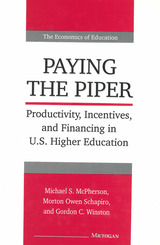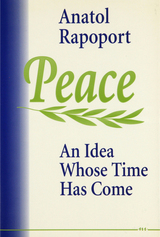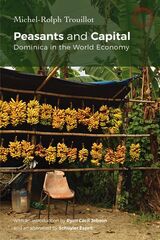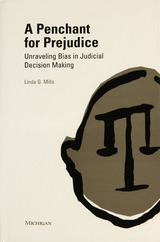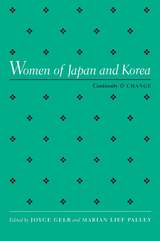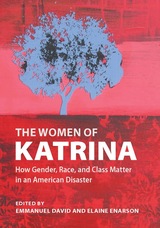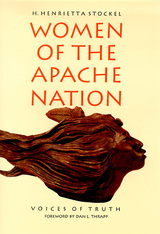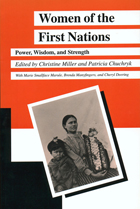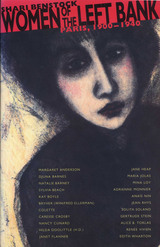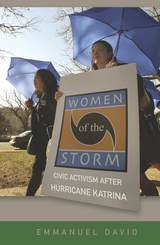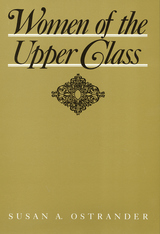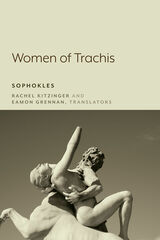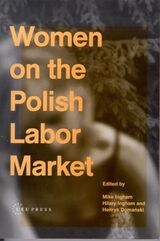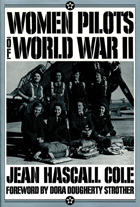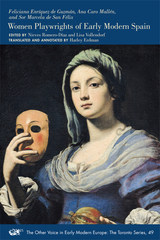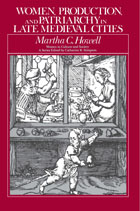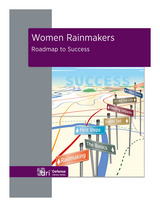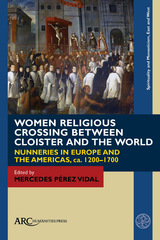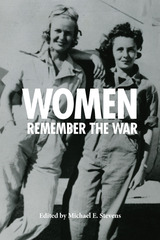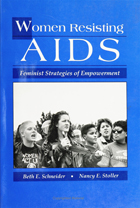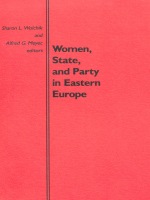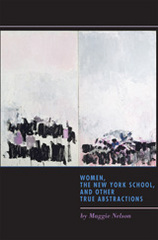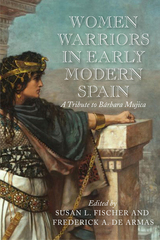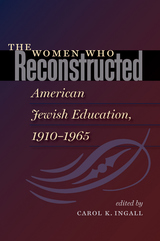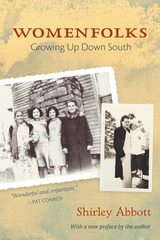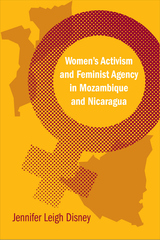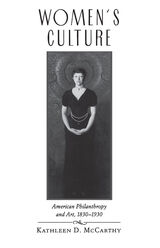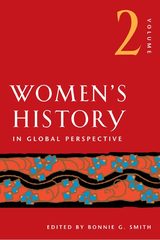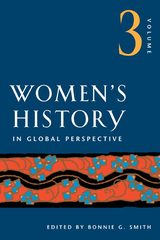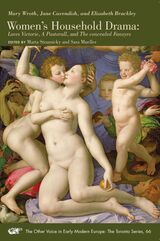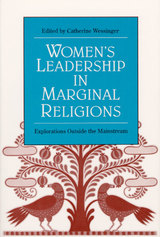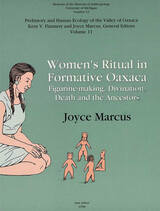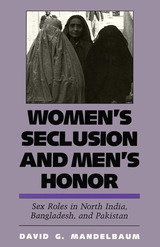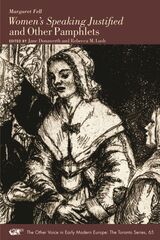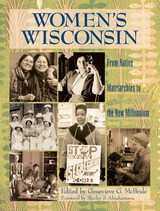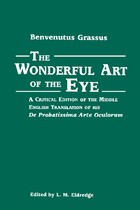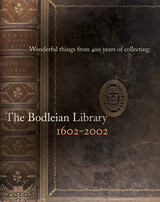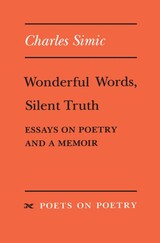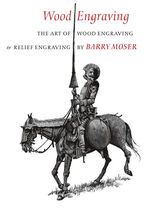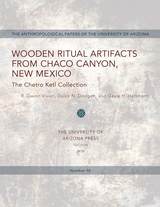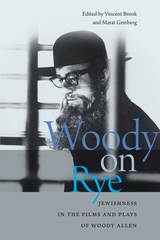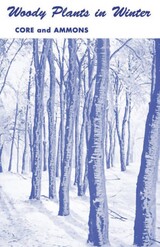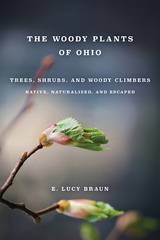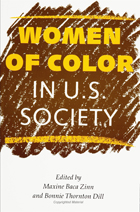 Women of Color in U.S. Society
edited by Maxine Baca Zinn and Bonnie Thornton Dill
Temple University Press, 1993 The theme of race, class, and gender as interlocking systems of oppression unites these original essays about the experience of women of color—African Americans, Latinas, Native Americans, and Asian Americans. The contributing scholars discuss the social conditions that simultaneously oppress women of color and provide sites for opposition. Though diverse in their focus, the essays uncover similar experiences in the classroom, workplace, family, prison, and other settings. Working-class women, poor women, and professional women alike experience subordination, restricted participation in social institutions, and structural placement in roles with limited opportunities. How do women survive, resist, and cope with these oppressive structures? Many articles tell how women of color draw upon resources from their culture, family, kin, and community. Others document defenses against cultural assaults by the dominant society—Native American mothers instilling tribal heritage in their children; African American women engaging in community work; and Asian American women opposing the patriarchy of their own communities and the stereotypes imposed by society at large. These essays challenge some of our basic assumptions about society, revealing that experiences of inequality are not only diverse but relational.
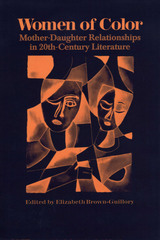 Women of Color: Mother-Daughter Relationships in 20th-Century Literature
Edited by Elizabeth Brown-Guillory
University of Texas Press, 1996 Interest in the mother-daughter relationship has never been greater, yet there are few books specifically devoted to the relationships between daughters and mothers of color. To fill that gap, this collection of original essays explores the mother-daughter relationship as it appears in the works of African, African American, Asian American, Mexican American, Native American, Indian, and Australian Aboriginal women writers. Prominent among the writers considered here are Toni Morrison, Alice Walker, Maxine Hong Kingston, Cherrie Moraga, Leslie Marmon Silko, and Amy Tan. Elizabeth Brown-Guillory and the other essayists examine the myths and reality surrounding the mother-daughter relationship in these writers' works. They show how women writers of color often portray the mother-daughter dyad as a love/hate relationship, in which the mother painstakingly tries to convey knowledge of how to survive in a racist, sexist, and classist world while the daughter rejects her mother's experiences as invalid in changing social times. This book represents a further opening of the literary canon to twentieth-century women of color. Like the writings it surveys, it celebrates the joys of breaking silence and moving toward reconciliation and growth.
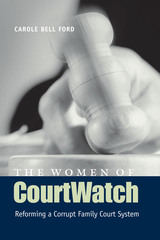 The Women of CourtWatch: Reforming a Corrupt Family Court System
By Carole Bell Ford
University of Texas Press, 2005 Houston was a terrible place to divorce or seek child custody in the 1980s and early 1990s. Family court judges routinely rendered verdicts that damaged the interests of women and children. In some especially shocking cases, they even granted custody to fathers who had been accused of molesting their own children. Yet despite persistent allegations of cronyism, incompetence, sexism, racism, bribery, and fraud, the judges wielded such political power and influence that removing them seemed all but impossible. The family court system was clearly broken, but there appeared to be no way to fix it. This book recounts the inspiring and courageous story of women activists who came together to oppose Houston's family court judges and whose political action committee, CourtWatch, played a crucial role in defeating five of the judges in the 1994 judicial election. Carole Bell Ford draws on extensive interviews with Florence Kusnetz, the attorney who led the reform effort, and other CourtWatch veterans, as well as news accounts, to provide a full history of the formation, struggles, and successes of a women's grassroots organization that overcame powerful political interests to improve Houston's family courts. More than just a local story, however, this history of CourtWatch provides a model that can be used by activists in other communities in which legal and social institutions have gone astray. It also honors the heroism of Florence Kusnetz, whose commitment to the Jewish concept of tikkun olam ("repairing and improving the world") brought her out of a comfortable retirement to fight for justice for women and children.
Women Of Japan & Korea: Continuity and Change
edited by Joyce Gelb and Marian Lief Palley
Temple University Press, 1994 This collection presents new research on the changing roles of women in Japan and Korea. At a time when women in these two countries are becoming more politically and socially prominent, these essays provide insight into the clashes that have arisen between tradition and change. The contributors compare similarities and differences in the two cultures, considering family life, education, health care, work, reproductive and legal rights, and political participation, including the rise of women's movements in Asia and the battle against sexism and gender stereotyping. Essays written by Japanese and Korean women, leading social scientists and practitioners, illuminate the current political, economic, and social status of women in Japan and Korea.
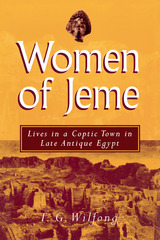 Women of Jeme: Lives in a Coptic Town in Late Antique Egypt
T.G. Wilfong
University of Michigan Press, 2002 Get to know the women of Jeme, a Christian enclave in Egypt that existed from 600 to 800 C.E.Using texts documenting the women's activities, the physical remains of their possessions, and the writings of the local religious leaders, T. G. Wilfong traces the lives and careers of individual women and, through them, arrives at an understanding of the reality of women's lives in this place and time.
Contrary to the submissive, demure ideals for women proposed by the religious writers of Christian Egypt, the evidence from Jeme points to a more complex, dynamic situation. Women were active in the home, but some also played important and visible parts in the religious and economic life of their community. A bishop's attempts to monitor the behavior of the women in his district, the intricate inheritance dispute between an aunt and her niece, one woman's pious donations of murals to a church, three women's agonized decisions to give up their children to the local monastery, and the transactions of a family of women moneylenders--all these episodes paint a vivid picture of life in a Coptic town.
Although the remains of Jeme have long been known to scholars, little synthetic work has been done on this rich source for social history in Egypt before and after the Muslim conquests. The Women of Jeme is the first book-length study of the evidence. It will be of interest to Egyptologists and papyrologists, as well as to scholars of Coptic studies, early Christianity, social history and women's studies. The book assumes no prior knowledge of the subject, and the author has taken care to make it accessible to anyone with an interest in the ancient world.
T. G. Wilfong is Assistant Professor of Egyptology and Assistant Curator for Greco-Roman Egypt, University of Michigan.
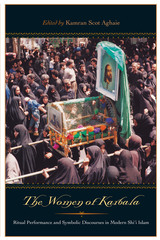 The Women of Karbala: Ritual Performance and Symbolic Discourses in Modern Shi'i Islam
Edited by Kamran Scot Aghaie
University of Texas Press, 2005 Commemorating the Battle of Karbala, in which the Prophet Mohammad's grandson Hosayn and seventy-two of his family members and supporters were martyred in 680 CE, is the central religious observance of Shi'i Islam. Though much has been written about the rituals that reenact and venerate Karbala, until now no one has studied women's participation in these observances. This collection of original essays by a multidisciplinary team of scholars analyzes the diverse roles that women have played in the Karbala rituals, as well as the varied ways in which gender-coded symbols have been used within religious and political discourses. The contributors to this volume consider women as participants in and observers of the Karbala rituals in Iran, Iraq, Lebanon, India, Pakistan, and the United States. They find that women's experiences in the Shi'i rituals vary considerably from one community to another, based on regional customs, personal preferences, religious interpretations, popular culture, and socioeconomic background. The authors also examine the gender symbolism within the rituals, showing how it reinforces distinctions between the genders while it also highlights the centrality of women to the symbolic repertory of Shi'ism. Overall, the authors conclude that while Shi'i rituals and symbols have in some ways been used to restrict women's social roles, in other ways they have served to provide women with a sense of independence and empowerment.
The Women of Katrina: How Gender, Race, and Class Matter in an American Disaster
Emmanuel David
Vanderbilt University Press, 2012 The transformative event known as "Katrina" exposed long-standing social inequalities. While debates rage about race and class relations in New Orleans and the Katrina diaspora, gender remains curiously absent from public discourse and scholarly analysis. This volume draws on original research and firsthand narratives from women in diverse economic, political, ethnic, and geographic contexts to portray pre-Katrina vulnerabilities, gender concerns in post-disaster housing and assistance, and women's collective struggles to recover from this catastrophe.
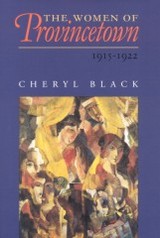 The Women of Provincetown, 1915–1922
Cheryl Black
University of Alabama Press, 2001 An illuminating account of the roles a remarkable group of women played in one of the most influential theatre groups in America, demonstrating their influence on 20th-century dramaturgy and culture.
In this fascinating work, Cheryl Black reveals that, in addition to its role in developing an American tradition of non-commercial theatre, Provincetown has another, largely unacknowledged claim to fame as one of the first theatre companies in America in which women achieved prominence in every area of operation. At a time when women playwrights were rare, women directors rarer, and women scenic designers unheard of, Provincetown’s female members excelled in all of these roles.
In addition to the well-known playwright Susan Gaspell, the company’s female membership included luminaries such poets Edna St. Vincent Millay, Mina Loy, and Djuna Barnes; journalists Louise Bryant and Mary Heaton Vorce; novelists Neith Boyce and Evelyn Scott; and painter Marguerite Zorach. Illuminating a fascinating chapter in the history of one of the world's most picturesque and beloved artist colonies, The Women of Provincetown is an engaging work of social history, offering new insights into the relationship between gender and theatre. This work includes 40 images of the key artists in the book.
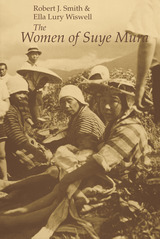 The Women of Suye Mura
Robert J. Smith and Ella Lury Wiswell
University of Chicago Press, 1982 Japanese women are frequently perceived by foreigners as stereotypes. Pictured as compliant, long-suffering, and charming in a childlike way, they are said to be child-centered and restricted in their interests and actions to the domestic realm. The appear as victim, pawn, or tragic heroine: Madame Chrysanthemum, Madame Butterfly, and even the impossible Mariko of Shogun.
The Women of Suye Mura provides a rich body of information by means of which such stereotypes may be reevaluated and challenged. Based on Ella Wiswell's extensive field notes from the mid-1930s—when she and her late husband John Embree undertook a joint research project in rural Japan—this volume forms a companion to Embree's now-standard Suye Mura: A Japanese Village. Its focus on the women of the village affords a unique look at their daily lives and a detailed portrait of their world-views and social understandings at a time when the orthodoxies of the contemporary state were not yet completely accepted. Through Ella Wiswell's journal, sensitively edited by Robert Smith, we may understand some of their hopes and fears, see what amuses and angers them, and hear their comments on everything from adultery and illness to religion, magic and the origins of the imperial house.
The body of data, secured by direct observation, is unparalleled in the literature. No other account of the lives of Japanese rural women of this era remains, and in no contemporary community can their like be found. The Women of Suye Mura will thus serve as an important resource for anyone interested in the past—and present—of the Japanese woman.
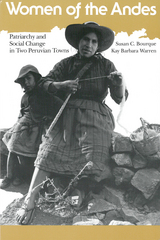 Women of the Andes: Patriarchy and Social Change in Two Peruvian Towns
Susan C. Bourque and Kay Barbara Warren
University of Michigan Press, 1981 Pilar is a capable, energetic merchant in the small, Peruvian highland settlement of Chiuchin. Genovena, an unmarried day laborer in the same town, faces an impoverished old age without children to support her. Carmen is the wife of a prosperous farmer in the agricultural community of Mayobamba, eleven thousand feet above Chiuchin in the Andean sierra. Mariana, a madre soltera—single mother—without a husband or communal land of her own, also resides in Mayobamba. These lives form part of an interlocking network that the authors carefully examine in Women of the Andes. In doing so, they explore the riddle of women’s structural subordination by analyzing the social, political, and economic realities of life in Peru. They examine theoretical explanations of sexual hierarchies against the backdrop of life histories. The result is a study that pinpoints the mechanisms perpetuating sexual repression and traces the impact of social change and national policy on women’s lives.
Women Of The Apache Nation: Voices Of Truth
H. Henrietta Stockel
University of Nevada Press, 1993 Stockel sheds light on some of the mysteries surrounding traditional and contemporary Chiricahua Apache culture. Each of the women interviewed emphasizes the importance of storytelling and ritual in preserving Apache heritage. Many ceremonies are still practiced today. In this book, the voices of the Chiricahua women are heard, individually and collectively, describing their history, its effects on them today, and their lives and their hopes for the future.
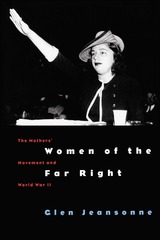 Women of the Far Right: The Mothers' Movement and World War II
Glen Jeansonne
University of Chicago Press, 1996 The majority of American women supported the Allied cause during World War II. and made sacrifices on the home front to benefit the war effort. But U.S. intervention was opposed by a movement led by ultraright women whose professed desire to keep their sons out of combat was mixed with militant Christianity, anticommunism, and anti-Semitism. This book is the first history of the self-styled "mothers' movement," so called because among its component groups were the National Legion of Mothers of America, the Mothers of Sons Forum, and the National Blue Star Mothers.
Unlike leftist antiwar movements, the mothers' movement was not pacifist; its members opposed the war on Germany because they regarded Hitler as an ally against the spread of atheistic communism. They also differed from leftist women in their endorsement of patriarchy and nationalism. God, they believed, wanted them to fight the New Deal liberalism that imperiled their values and the internationalists, communists, and Jews, whom they saw as subjugating Christian America.
Jeansonne examines the motivations of these women, the political and social impact of their movement, and their collaborations with men of the far right and also with mainstream isolationists such as Charles Lindbergh. Drawing on files kept by the FBI and other confidential documents, this book sheds light on the history of the war era and on women's place within the far right.
Women of the Left Bank: Paris, 1900-1940
By Shari Benstock
University of Texas Press, 1986 Now available in a durable paperback edition, Shari Benstock's critically acclaimed, best-selling Women of the Left Bank is a fascinating exploration of the lives and works of some two dozen American, English, and French women whose talent shaped the Paris expatriate experience in the century's early years. This ambitious historical, biographical, and critical study has taken its place among the foremost works of literary criticism. Maurice Beebe calls it "a distinguished contribution to modern literary history." Jane Marcus hails it as "the first serious literary history of the period and its women writers, making along the way no small contribution to our understanding of the relationships between women artists and their male counterparts, from Henry James to Hemingway, Joyce, Picasso, and Pound."
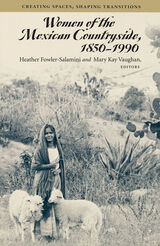 Women of the Mexican Countryside, 1850-1990: Creating Spaces, Shaping Transitions
Heather Fowler-Salamini
University of Arizona Press, 1994 Too often in the history of Mexico, women have been portrayed as marginal figures rather than legitimate participants in social processes. As the twentieth century draws to a close, Mexican women of the countryside can be seen as true historical actors: mothers and heads of households, factory and field workers, community activists, artisans, and merchants. In this new book, thirteen contributions by historians, anthropologists, and sociologists—from Mexico as well as the United States—elucidate the roles of women and changing gender relations in Mexico as rural families negotiated the transition from an agrarian to an industrial society.
Drawing on Mexican community studies, gender studies, and rural studies, these essays overturn the stereotypes of Mexican peasant women by exploring the complexity of their lives and roles and examining how these have changed over time. The book emphasizes the active roles of women in the periods of civil war, 1854-76, and the commercialization of agriculture, 1880-1910. It highlights their vigorous responses to the violence of revolution, their increased mobility, and their interaction with state reforms in the period from 1910 to 1940. The final essays focus on changing gender relations in the countryside under the impact of rapid urbanization and industrialization since 1940. Because histories of Latin American women have heretofore neglected rural areas, this volume will serve as a touchstone for all who would better understand women's lives in a region of increasing international economic importance. Women of the Mexican Countryside demonstrates that, contrary to the peasant stereotype, these women have accepted complex roles to meet constantly changing situations.
CONTENTS
I—Women and Agriculture in Nineteenth-Century Mexico
1. Exploring the Origins of Democratic Patriarchy in Mexico: Gender and Popular Resistance in the Puebla Highlands, 1850-1876, Florencia Mallon
2. "Cheaper Than Machines": Women and Agriculture in Porfirian Oaxaca (1880-1911), Francie R. Chassen-López
3. Gender, Work, and Coffee in C¢rdoba, Veracruz, 1850-1910, Heather Fowler-Salamini
4. Gender, Bridewealth, and Marriage: Social Reproduction of Peons on Henequen Haciendas in Yucatán (1870-1901), Piedad Peniche Rivero
II—Rural Women and Revolution in Mexico
5. The Soldadera in the Mexican Revolution: War and Men's Illusions, Elizabeth Salas
6. Rural Women's Literacy and Education During the Mexican Revolution: Subverting a Patriarchal Event?, Mary Kay Vaughan
7. Doña Zeferina Barreto: Biographical Sketch of an Indian Woman from the State of Morelos, Judith Friedlander
8. Seasons, Seeds, and Souls: Mexican Women Gardening in the American Mesilla (1900-1940), Raquel Rubio Goldsmith
III—Rural Women, Urbanization, and Gender Relations
9. Three Microhistories of Women's Work in Rural Mexico, Patricia Arias
10. Intergenerational and Gender Relations in the Transition from a Peasant Economy to a Diversified Economy, Soledad González Montes
11. From Metate to Despate: Rural Women's Salaried Labor and the Redefinition of Gendered Spaces and Roles, Gail Mummert
12. Changes in Rural Society and Domestic Labor in Atlixco, Puebla (1940-1990), Maria da Glória Marroni de Velázquez
13. Antagonisms of Gender and Class in Morelos, Mexico, JoAnn Martin
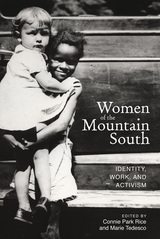 Women of the Mountain South: Identity, Work, and Activism
Connie Park Rice
Ohio University Press, 2015 Scholars of southern Appalachia have largely focused their research on men, particularly white men. While there have been a few important studies of Appalachian women, no one book has offered a broad overview across time and place. With this collection, editors Connie Park Rice and Marie Tedesco redress this imbalance, telling the stories of these women and calling attention to the varied backgrounds of those who call the mountains home. The essays of Women of the Mountain South debunk the entrenched stereotype of Appalachian women as poor and white, and shine a long-overdue spotlight on women too often neglected in the history of the region. Each author focuses on a particular individual or group, but together they illustrate the diversity of women who live in the region and the depth of their life experiences. The Mountain South has been home to Native American, African American, Latina, and white women, both rich and poor. Civil rights and gay rights advocates, environmental and labor activists, prostitutes, and coal miners—all have lived in the place called the Mountain South and enriched its history and culture.
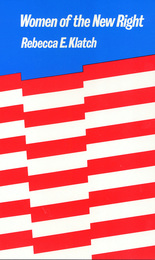 Women of the New Right
Rebecca E. Klatch
Temple University Press, 1988 Although an array of commentary and analyses focus on the New Right, little has been done to tell us who the women are on this side of the political spectrum. Are they social conservatives who call for the reassertion of traditional family values as promulgated by the federal government? Or do they align themselves with laissez-faire conservatives who abhor government intervention yet, like social conservatives, favor increased defense spending, and condemn communism and secular humanism. Rebecca E. Klatch provides the first coherent picture of who joins such movements and how they think. This book draws upon a rich data source which includes in-depth interviews and field research at right-wing conferences and meetings. Rather than the image of right-wing women as a monolithic group of angry housewives who oppose feminism, the author finds a fundamental division among women of the New Right, with one constituency of women actually supporting part of the feminist vision. Analyzing varying perceptions of women of the New Right, the book examines their beliefs and values, their vision of America, their interpretations of Communism, big government, and feminism, as well as their view of themselves as women and as political actors.
In the series Women in the Political Economy, edited by Ronnie J. Steinberg.
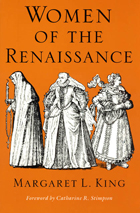 Women of the Renaissance
Margaret L. King
University of Chicago Press, 1991 In this informative and lively volume, Margaret L. King synthesizes a large body of literature on the condition of western European women in the Renaissance centuries (1350-1650), crafting a much-needed and unified overview of women's experience in Renaissance society.
Utilizing the perspectives of social, church, and intellectual history, King looks at women of all classes, in both usual and unusual settings. She first describes the familial roles filled by most women of the day—as mothers, daughters, wives, widows, and workers. She turns then to that significant fraction of women in, and acted upon, by the church: nuns, uncloistered holy women, saints, heretics, reformers,and witches, devoting special attention to the social and economic independence monastic life afforded them. The lives of exceptional women, those warriors, queens, patronesses, scholars, and visionaries who found some other place in society for their energies and strivings, are explored, with consideration given to the works and writings of those first protesting female subordination: the French Christine de Pizan, the Italian Modesta da Pozzo, the English Mary Astell.
Of interest to students of European history and women's studies, King's volume will also appeal to general readers seeking an informative, engaging entrance into the Renaissance period.
Women of the Storm: Civic Activism after Hurricane Katrina
Emmanuel David
University of Illinois Press, 2017 Hurricanes Katrina and Rita made landfall less than four weeks apart in 2005. Months later, much of New Orleans and the Gulf Coast remained in tatters. As the region faded from national headlines, its residents faced a dire future. Emmanuel David chronicles how one activist group confronted the crisis. Founded by a few elite white women in New Orleans, Women of the Storm quickly formed a broad coalition that sought to represent Louisiana's diverse population. From its early lobbying of Congress through its response to the 2010 BP oil spill, David shows how members' actions were shaped by gender, race, class, and geography. Drawing on in-depth interviews, ethnographic observation, and archival research, David tells a compelling story of collective action and personal transformation that expands our understanding of the aftermath of an historic American catastrophe.
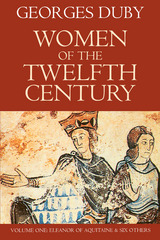 Women of the Twelfth Century, Volume 1: Eleanor of Aquitaine and Six Others
Georges Duby
University of Chicago Press, 1997 In this volume, Georges Duby examines the lives of prominent twelfth-century French women as well as popular female literary figures of that time. Focusing on medieval notions of women and love, Duby looks for the ideological motivations for the representation of the female sex. He analyzes the ways in which women's biographies were written and how female characters were treated in fable and legend, pointing to the social and political forces at work in these representations.
The historical personages include Eleanor of Aquitaine whose several marriages brought her wealth and autonomy; the virtuous Héloïse; and the visionary recluse Juette. Duby also studies the literary figures of St. Marie-Madeleine, a composite figure who personified the essential female traits of frailty, ardent love, and evangelicalism; Iseut, literary beloved of Tristan; and two other emblematic figures, Dorée d'Amour and Phénix—women who became ladies through chivalrous love.
Provocative, informative, and entertaining, this book offers new insight on courtly love and the representations of women under medieval patriarchy.
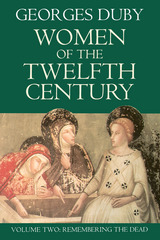 Women of the Twelfth Century, Volume 2: Remembering the Dead
Georges Duby
University of Chicago Press, 1997 In this volume, one of the greatest medieval historians of our time continues his rich and illuminating inquiry into the lives of twelfth-century women. Georges Duby bases his account on a twelfth-century genre that commemorated the virtues of noblewomen who had died and the roles they came to play in the history of their lineage. From these genealogical works a vivid picture emerges of the lives these women led, the values they held, and the way in which they were viewed by the ecclesiastical and chivalric writers who immortalized them.
The first section outlines the ways in which the dead—in both memory and legend—served to bond noble society in the twelfth century. Drawing on the Gesta by Dudo of Saint Quentin, the second section reflects on the roles that wives, concubines, and other women played during times of war and in the great exchanges of power that established the grand lineages of the Middle Ages. The third section reconstructs women as wives, mothers, and widows through the work of Lambert, Priest of Ardres.
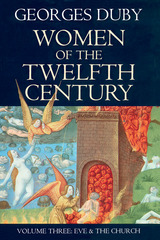 Women of the Twelfth Century, Volume 3: Eve and the Church
Georges Duby
University of Chicago Press, 1998 In this volume, Georges Duby studies the relationship between the Church and women in twelfth-century Europe. By that time, the Church had begun to see the evolving roles and expectations of women as serious matters, resulting in a wide range of clerical writings addressing "the woman question."
Drawing on these writings, Duby describes how women were thought to embody particular sins, such as sorcery, disobedience, and licentiousness. He evaluates Eve's role in man's fall from grace in the Garden of Eden and analyzes the reasoning behind the view that women are unstable, curious, frivolous creatures. He also notes that these charges are leveled against women, even as praise is heaped upon them for the conventional virtues they exhibit in their roles as wives and mothers.
As the final installment in Duby's three-volume study of French noblewomen of the twelfth century, Eve and the Church is the last work of this superb historian. It will be of interest to scholars of medieval history and women's history as well as to anyone interested in current debates about women and religion.
Georges Duby (1919-1996) was a member of the Académie française and for many years held the distinguished chair in medieval history at the Collège de France. His books include The Three Orders; The Age of Cathedrals; The Knight, the Lady, and the Priest; Love and Marriage in the Middle Ages; and History Continues, all published by the University of Chicago Press.
Women of the Upper Class
Susan A. Ostrander
Temple University Press, 1986 In a unique departure from the usual stereotypes, Susan Ostrander gained access to this elite community and interviewed the women in one U.S. region to study their roles, activities, and self-images. Among her conclusions, Ostrander shows that although these women are economically and socially powerful, they are for the most part, unliberated, being subservient to their husbands and to their duty to bear and raise children.
In the series Women in the Political Economy, edited by Ronnie J. Steinberg.
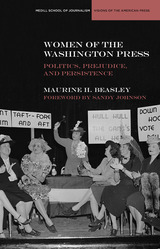 Women of the Washington Press: Politics, Prejudice, and Persistence
Maurine H. Beasley
Northwestern University Press, 2012 Winner, 2012 Frank Luther Mott-Kappa Tau Alpha Research Award Women of the Washington Press argues that for nearly two centuries women journalists have persisted in their efforts to cover politics in the nation’s capital in spite of blatant prejudice and restrictive societal attitudes. They have been held back by the difficulties of combining two competing roles – those of women and journalists. As a group they have not agreed among themselves on feminist goals, while declaring that they aspire to be seen as professional journalists, not as advocates of a particular ideology. Still, they have brought a different perspective to the news, as they have fought hard to prove that they are capable of covering political issues just like male journalists. Over the years women have networked with each other and carved out areas of expertise – such as reporting of politically-oriented social events and coverage of first ladies – that men disdained, while they pressed to gain entrance to sex-segregated institutions like the National Press Club. Attempting to merge the personal and the political, they have raised issues like sexual harassment that men journalists left untouched. At a point today where they represent about half of accredited correspondents, women still face shifting barriers that make it difficult to combine the roles of both women and journalists in Washington, but they are continuing to broaden the definition of political journalism.
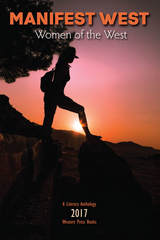 Women of the West
Caleb Seeling
University Press of Colorado, 2017 The 2017 volume in the Manifest West series, Women of the West, delves into the rich mixing pot created in the West, derived from assorted cultures and ethnicities and from a variety of beliefs and traditions across the world, all manifested in today’s Western culture. There is no one type of Western woman. They are beautifully diverse in race, religion, and sexual orientation, yet they are bonded through the shared experiences and approaches to life that identify them as distinctly Western. Like individual squares of a quilt, women’s interactions with the culture, landscape, and geography of the West, as well as with their families and one another, offer us a unified variety. In this collection of poems, short stories, and creative nonfiction, twenty-five writers and poets present a broad understanding of the Western woman, sometimes defying and sometimes reinforcing expectations and stereotypes. Perspectives vary from daughters grieving the loss of fathers whose rugged ways resonated with them to mothers striving to share an adoration for the delicacy of nature with their sons. For every woman seeking to conquer the wilderness, another yearns to be tamed by it. These are the stories of natives and Natives, of immigrants from around the world, spanning from eastern states of America to Vietnam in the East. From historical figures toting guns and whips to those who must overcome today’s manifestations of violence against women, these ladies, and so many more, are the Women of the West. Manifest West is Western Press Books’ literary anthology series. The press, affiliated with Western State Colorado University, produces one anthology annually and focuses on Western regional writing.
Women of Trachis
Rachel Kitzinger
Lever Press, 2021 This new translation of Sophokles’ Women of Trachis is a living script in conversation with the past. Rachel Kitzinger, a Classicist, and Eamon Grennan, a poet, have captured the tones of ancient Greek in strong, swift English, making this translation suitable for a modern audience, whether as readers, listeners, or viewers. The unique addition of an audio recording of the text performed by Vassar College students contributes to the play's accessibility and vividness. Offering a picture both of domestic life and of the values and expectations that characterize Athenian men, Women of Trachis is a rich resource for those interested in gender roles in Greek antiquity.
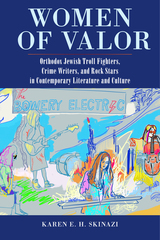 Women of Valor: Orthodox Jewish Troll Fighters, Crime Writers, and Rock Stars in Contemporary Literature and Culture
Karen E. H. Skinazi
Rutgers University Press, 2018 Honorable Mention for the Robert K. Martin Prize 2019
Media portrayals of Orthodox Jewish women frequently depict powerless, silent individuals who are at best naive to live an Orthodox lifestyle, and who are at worst, coerced into it. Karen E. H. Skinazi delves beyond this stereotype in Women of Valor to identify a powerful tradition of feminist literary portrayals of Orthodox women, often created by Orthodox women themselves. She examines Orthodox women as they appear in memoirs, comics, novels, and movies, and speaks with the authors, filmmakers, and musicians who create these representations. Throughout the work, Skinazi threads lines from the poem “Eshes Chayil,” the Biblical description of an Orthodox “Woman of Valor.” This proverb unites Orthodoxy and feminism in a complex relationship, where Orthodox women continuously question, challenge, and negotiate Orthodox and feminist values. Ultimately, these women create paths that unite their work, passions, and families under the framework of an “Eshes Chayil,” a woman who situates religious conviction within her own power.
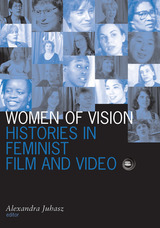 Women Of Vision: Histories in Feminist Film and Video
Alexandra Juhasz
University of Minnesota Press, 2001 Legends and rising stars of feminist film and video tell their stories. Alexandra Juhasz asked twenty-one women to tell their stories-women whose names make up a who is (and who will be) who of independent and experimental film and video. What emerged in the resulting conversations is a compelling (and previously underdocumented) history of feminism and feminist film and video, from its origins in the fifties and sixties to its apex in the seventies, to today. Women of Vision is a companion piece to Juhasz’s 1998 documentary of the same name. The book presents the complete interviews, allowing readers to hear directly the voices of these articulate, passionate women in an interactive remembering of feminist media history. Juhasz’s introduction provides a historical, theoretical, and aesthetic context for the interviews. These subjects have all shaped late twentieth-century film and video in fundamental ways, either as artists, producers, distributors, critics, or scholars, and they all believe that media are the most powerful tools for effecting change. Yet they are a very diverse group, with widely varying personal and professional backgrounds. By presenting their interviews together, Juhasz shows the differences among those involved in feminist media, but also the connections among them, and the way in which the field has been enriched by their sharing of knowledge and power. In the end, Juhasz not only records these women’s careers, she broadens our understanding of feminism and shows how feminist history and documentary are made.Interviewees: Pearl Bowser; Margaret Caples; Michelle Citron; Megan Cunningham; Cheryl Dunye; Vanalyne Green; Barbara Hammer; Kate Horsfield; Carol Leigh; Susan Mogul; Juanita Mohammed; Frances Negrón-Muntaner; Eve Oishi; Constance Penley; Wendy Quinn; Julia Reichert; Carolee Schneemann; Valerie Soe; Victoria Vesna; and Yvonne Welbon.
 Women on a Journey: Between Baghdad and London
By Haifa Zangana
University of Texas Press, 2006 Exiled, displaced, tortured, and grieving—each of the five Iraqi women whose lives and losses come to us through Haifa Zangana's skillfully wrought novel is searching in her own way for peace with a past that continually threatens to swallow up the present. Majda, the widow of a former Ba'ath party official who was killed by the government he served. Adiba, a political dissident tortured under Saddam Hussein's regime. Um Mohammed, a Kurdish refugee who fled her home for political asylum. Iqbal, a divorced mother whose family in Iraq is suffering the effects of Western economic sanctions. And Sahira, the wife of a Communist politician, struggling with his disillusionment and her own isolation. Bound to one another by a common Iraqi identity and a common location in 1990s London, these women come together across differences in politics, ethnic and class background, age, and even language. In narrating the friendship that develops among them, Zangana captures their warmth and humor as well as their sadness, their feelings of despair along with their search for hope, their sense of uprootedness, and their yearnings for home. Weaving between the women's memories of Iraq—nostalgic and nightmarish—and their lives as exiles in London, Zangana's novel gives voice to the richness and complexity of Iraqi women's experiences. Through their stories, the novel represents a powerful critique of the violence done to ordinary people by those who hold power both in Iraq and in the West.
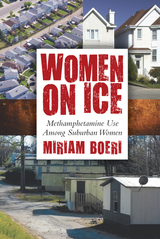 Women on Ice: Methamphetamine Use among Suburban Women
Miriam Boeri
Rutgers University Press, 2013 2013 Choice Outstanding Academic Title
Methamphetamine (ice, speed, crystal, shard) has been called epidemic in the United States. Yet few communities were ready for increased use of methamphetamine by suburban women. Women on Ice is the first book to study exclusively the lives of women who use the drug and its effects on their families. In-depth interviews with women in the suburban counties of one of the largest metropolitan areas in the U.S. chronicle the details of their initiation into methamphetamine, the turning points into problematic drug use, and for a few, their escape from lives veering out of control. Their life course and drug careers are analyzed in relation to the intersecting influences of social roles, relationships, social/political structures, and political trends. Examining the effects of punitive drug policy, inadequate social services, and looming public health risks, including HIV/AIDS and hepatitis C, the book gives voice to women silenced by shame. Boeri introduces new and developing concepts in the field of addiction studies and proposes policy changes to more broadly implement initiatives that address the problems these women face. She asserts that if we are concerned that the war on drugs is a war on drug users, this book will alert us that it is also a war on suburban families.
 Women on the Defensive: Living through Conservative Times
Sylvia Bashevkin
University of Chicago Press, 1998 Feminism underwent perhaps its most difficult challenges in the 1980s, when conservatism reached the height of its influence in the United States, Canada, and the United Kingdom. Women on the Defensive: Living through Conservative Times explodes some widely-held beliefs about women and women's movements under Conservative and Republican leaders.
Prevailing accounts of the fate of women's movements in that decade ascribe their hardships to a postfeminist ideology or the result of a "backlash" against women, particularly in America. Sylvia Bashevkin's study excavates, however, a much more complex situation. By identifying the policies and goals held in common by feminists in all three countries and tracing their collision course with the conservative policies of the three administrations, she is able to document setbacks but also some progress, despite the right-of-center leaders. She also challenges the assumption that organized interests in the United States are less vulnerable in hard times than those in parliamentary systems, finding that the elections of Ronald Reagan, Brian Mulroney, and Margaret Thatcher had similar effects on both sides of the Atlantic. Her comparative analysis reveals that the policies of current leaders, while marginally better than their predecessors, will not allow women and women's movements to regain lost ground.
Organized thematically, rather than by country, Women on the Defensive describes the difficult relationship between feminists and conservatives during a time of bitter ideological and policy battles when the vibrant social movements of the 1960s and 1970s were seriously threatened.
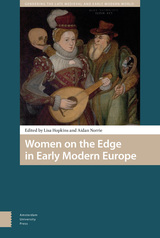 Women on the Edge in Early Modern Europe
Lisa Hopkins
Amsterdam University Press, 2019 Women on the Edge in Early Modern Europe examines the lives of women whose gender impeded the exercise of their personal, political, and religious agency, with an emphasis on the conflict that occurred when they crossed the edges society placed on their gender. Many of the women featured in this collection have only been afforded cursory scholarly focus, or the focus has been isolated to a specific, (in)famous event. This collection redresses this imbalance by providing comprehensive discussions of the women’s lives, placing the matter that makes them known to history within the context of their entire life. Focusing on women from different backgrounds -- such as Marie Meurdrac, the French chemist; Anna Trapnel, the Fifth Monarchist and prophetess; and Cecilia of Sweden, princess, margravine, countess, and regent -- this collection brings together a wide range of scholars from a variety of disciplines to bring attention to these previously overlooked women.
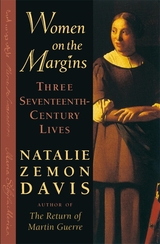 Women on the Margins: Three Seventeenth-Century Lives
Natalie Zemon Davis
Harvard University Press, 1995 As she did in The Return of Martin Guerre, Natalie Zemon Davis here retrieves individual lives from historical obscurity to give us a window onto the early modern world. As women living in the seventeenth century, Glikl bas Judah Leib, Marie de l’Incarnation, and Maria Sibylla Merian, equally remarkable though very different, were not queens or noblewomen, their every move publicly noted. Rather, they were living “on the margins” in seventeenth-century Europe, North America, and South America. Yet these women—one Jewish, one Catholic, one Protestant—left behind memoirs and writings that make for a spellbinding tale and that, in Davis’ deft narrative, tell us more about the life of early modern Europe than many an official history.
All these women were originally city folk. Glikl bas Judah Leib was a merchant of Hamburg and Metz whose Yiddish autobiography blends folktales with anecdotes about her two marriages, her twelve children, and her business. Marie de l’Incarnation, widowed young, became a mystic visionary among the Ursuline sisters and cofounder of the first Christian school for Amerindian women in North America. Her letters are a rich source of information about the Huron, Algonquin, Montagnais, and Iroquois peoples of Quebec. Maria Sibylla Merian, a German painter and naturalist, produced an innovative work on tropical insects based on lore she gathered from the Carib, Arawak, and African women of Suriname. Along the way she abandoned her husband to join a radical Protestant sect in the Netherlands.
Drawing on Glikl’s memoirs, Marie’s autobiography and correspondence, and Maria’s writings on entomology and botany, Davis brings these women to vibrant life. She reconstructs the divergent paths their stories took, and at the same time shows us each amid the common challenges and influences of the time—childrearing, religion, an outpouring of vernacular literature—and in relation to men. The resulting triptych suggests the range of experience, self-consciousness, and expression possible in seventeenth-century Europe and its outposts. It also shows how persons removed from the centers of power and learning ventured in novel directions, modifying in their own way Europe’s troubled and ambivalent relations with other “marginal” peoples.
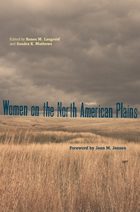 Women on the North American Plains
Edited by Renee M. Laegreid and Sandra K. Mathews, with foreword by Joan M. Jensen
Texas Tech University Press, 2011 The first comprehensive view of women on the North American Plains, these essays explore the richness, variety, and complexity of their experiences. From prehistory to the present, the Great Plains have played a significant role in the lives of women who moved to or across them, cleaving to cultural ideas and patterns while adapting to the rigors of the region. Twelve essays—arranged chronologically within sub-regions—draw upon innovative theoretical and methodological approaches, including gender/transgender studies, decolonization of Native peoples, and the influence of nation states. Richly grounded in the particular, these essays also contextualize the stories of specific women and locales within larger social, political, and economic trends. Individually and collectively, they reveal the intricate relations that tie together people and place. Here are long-needed perspectives on the diverse lives of women who have been—and who continue to be—too often ignored in wider histories of the Plains.
Women on the Polish Labor Market
Henryk Domanski
Central European University Press, 2001 Can women succeed? Is women's work appreciated equally to men's? Do women's salaries reflect the quality and quantity of work they do? Does gender make a difference? These questions, which often emerge even in democratic societies and free-market economies, are much more acute in the new democracies of Central and Eastern Europe. Gender has been an issue thus far neglected in transition economies. Drawing on official statistics, an international multidisciplinary team of sociologists, economists, demographers and geographers examines how women have been affected by the labor market reforms in Poland in the transition period of the 1990s. The issues discussed include occupational segregation, the social mobility of women, demographic change, the power and participation of women in public life, women's organizations, and labor market reform.
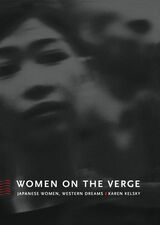 Women on the Verge: Japanese Women, Western Dreams
Karen Kelsky
Duke University Press, 2001 Over the past few decades, many young Japanese women have emerged as Japan’s most enthusiastic “internationalists,” investing in study or work abroad, or in romance with Western men as opportunities to circumvent what they consider their country’s oppressive corporate and family structures. Drawing on a rich supply of autobiographical narratives, as well as literary and cultural texts, Karen Kelsky situates this phenomenon against a backdrop of profound social change in Japan and within an intricate network of larger global forces.
In exploring the promises, limitations, and contradictions of these “occidental longings,” Women on the Verge exposes the racial and erotic politics of transnational mobility. Kelsky shows how female cosmopolitanism recontextualizes the well-known Western male romance with the Orient: Japanese women are now the agents, narrating their own desires for the “modern” West in ways that seem to defy Japanese nationalism as well as long-standing relations of power not only between men and women but between Japan and the West. While transnational movement is not available to all Japanese women, Kelsky shows that the desire for the foreign permeates many Japanese women’s lives. She also reveals how this feminine allegiance to the West—and particularly to white men—can impose its own unanticipated hegemonies of race, sexuality, and capital.
Combining ethnography and literary analysis, and bridging anthropology and cultural studies, Women on the Verge will also appeal to students and scholars of Japan studies, feminism, and global culture.
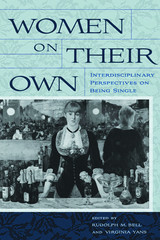 Women on Their Own: Interdisciplinary Perspectives on Being Single
Edited by Rudolph M. Bell and Virginia Yans
Rutgers University Press, 2007 Despite what would seem some apparent likenesses, single men and single women are perceived in very different ways. Bachelors are rarely considered "lonely" or aberrant. They are not pitied. Rather, they are seen as having chosen to be "footloose and fancy free" to have sports cars, boats, and enjoy a series of unrestrictive relationships. Single women, however, do not enjoy such an esteemed reputation. Instead they have been viewed as abnormal, neurotic, or simply undesirable-attitudes that result in part from the long-standing belief that single women would not have chosen her life. Even the single career-woman is seldom viewed as enjoying the success she has achieved. No one believes she is truly fulfilled.
Modern American culture has raised generations of women who believed that their true and most important role in society was to get married and have children. Anything short of this role was considered abnormal, unfulfilling, and suspect. This female stereotype has been exploited and perpetuated by some key films in the late 40's and early 50's. But more recently we have seen a shift in the cultural view of the spinster. The erosion of the traditional nuclear family, as well as a larger range of acceptable life choices, has caused our perceptions of unmarried women to change. The film industry has reflected this shift with updated stereotypes that depict this cultural trend. The shift in the way we perceive spinsters is the subject of current academic research which shows that a person's perception of particular societal roles influences the amount of stress or depression they experience when in that specific role. Further, although the way our culture perceives spinsters and the way the film industry portrays them may be evolving, we still are still left with a negative stereotype.
Themes of choice and power have informed the lives of single women in all times and places. When considered at all in a scholarly context, single women have often been portrayed as victims, unhappily subjected to forces beyond their control. This collection of essays about "women on their own" attempts to correct that bias, by presenting a more complex view of single women in nineteenth- and twentieth-century United States and Europe.
Topics covered in this book include the complex and ambiguous roles that society assigns to widows, and the greater social and financial independence that widows have often enjoyed; widow culture after major wars; the plight of homeless, middle-class single women during the Great Depression; and comparative sociological studies of contemporary single women in the United States, Britain, Ireland, and Cuba.
Composed of papers presented to the Rutgers Center for Historical Analysis project on single women, this collection incorporates the work of specialists in anthropology, art history, history, and sociology. It is deeply connected with the emerging field of singleness studies (to which the RCHA has contributed an Internet-based bibliography of more than 800 items). All of the essays are new and have not been previously published.
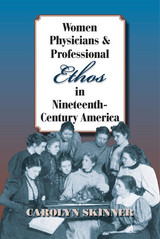 Women Physicians and Professional Ethos in Nineteenth-Century America
Carolyn Skinner
Southern Illinois University Press, 2014 Women physicians in nineteenth-century America faced a unique challenge in gaining acceptance to the medical field as it began its transformation into a professional institution. The profession had begun to increasingly insist on masculine traits as signs of competency. Not only were these traits inaccessible to women according to nineteenth-century gender ideology, but showing competence as a medical professional was not enough. Whether women could or should be physicians hinged mostly on maintaining their femininity while displaying the newly established standard traits of successful practitioners of medicine. Women Physicians and Professional Ethos provides a unique example of how women influenced both popular and medical discourse. This volume is especially notable because it considers the work of African American and American Indian women professionals. Drawing on a range of books, articles, and speeches, Carolyn Skinner analyzes the rhetorical practices of nineteenth-century American women physicians. She redefines ethos in a way that reflects the persuasive efforts of women who claimed the authority and expertise of the physician with great difficulty. Descriptions of ethos have traditionally been based on masculine communication and behavior, leaving women’s rhetorical situations largely unaccounted for. Skinner’s feminist model considers the constraints imposed by material resources and social position, the reciprocity between speaker and audience, the effect of one rhetor’s choices on the options available to others, the connections between ethos and genre, the potential for ethos to be developed and used collectively by similarly situated people, and the role ethos plays in promoting social change. Extending recent theorizations of ethos as a spatial, ecological, and potentially communal concept, Skinneridentifies nineteenth-century women physicians’ rhetorical strategies and outlines a feminist model of ethos that gives readers a more nuanced understanding of how this mode of persuasion operates for all speakers and writers.
Women Pilots Of World War II
Wendy Cole
University of Utah Press, 1992 Jean Hascall Cole’s interviews with her fellow classmates documents their valuable contribution to the history of women, aviation, and the military. Women Pilots of World War II presents a rare look at the personal experiences of the Women Air Force Service Pilots (WASPs) by recording the adventures of one of eighteen classes of women to graduate from the Army Air Forces flight training school during World War II. This unique oral history verifies and shines a long-overdue spotlight on the flying accomplishments of these remarkable women.
Women Playwrights of Early Modern Spain
Feliciana Enríquez de Guzmán, Ana Caro Mallén, and Sor Marcela de San Félix
Iter Press, 2016 This volume presents ten plays by three leading women playwrights of Spain’s Golden Age. Included are four bawdy and outrageous comic interludes; a full-length comedy involving sorcery, chivalry, and dramatic stage effects; and five short religious plays satirizing daily life in the convent. A critical introduction to the volume positions these women and their works in the world of seventeenth-century Spain.
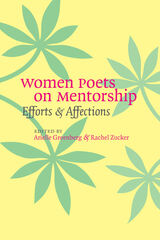 Women Poets on Mentorship: Efforts and Affections
Arielle Greenberg
University of Iowa Press, 2008 Imagine being a young poet, nurturing your craft without the benefit of established mentors. Imagine having never been in a class taught by a woman poet or not having a bookshelf filled with books written by living women poets. Luckily, young women poets today don’t have to. Arielle Greenberg and Rachel Zucker’s Women Poets on Mentorship: Efforts and Affections collects both personal essays and representative poems by women born after 1960 whose careers were influenced—directly or indirectly—by the women who preceded them.
The poets in this collection describe a new kind of influence, one less hierarchical, less patriarchal, and less anxious than forms of mentorship in the past. Vivid and intelligent, these twenty-four essays explore the complicated nature of the mentoring relationship, with all its joys and difficulties, and show how this new sense of writing out of female experience and within a community of writers has fundamentally changed women’s poetry.
Includes:
Jenny Factor on Marilyn Hacker
Beth Ann Fennelly on Denise Duhamel
Miranda Field on Fanny Howe
Katie Ford on Jorie Graham
Joy Katz on Sharon Olds
Valerie Martínez on Joy Harjo
Erika Meitner on Rita Dove
Aimee Nezhukumatathil on Naomi Shihab Nye
Eleni Sikelianos on Alice Notley
Tracy K. Smith on Lucie Brock-Broido
Crystal Williams on Lucille Clifton
Rebecca Wolff on Molly Peacock
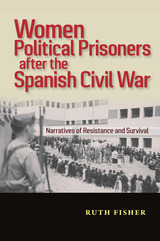 Women Political Prisoners after the Spanish Civil War: Narratives of Resistance and Survival
Ruth Fisher
Sussex Academic Press, 2022 At the end of the Spanish Civil War, the Nationalist government instigated mass repression against anyone suspected of loyalty to the defeated Republican side. Around 200,000 people were imprisoned for political crimes, including thousands of women who were charged with offences ranging from directing the home front to supporting their loved ones engaged in combat. Many women wrote and published texts about their experiences, seeking to make their voices heard and to counteract the dehumanising master narrative of the right-wing victors that had criminalised their existence. The memoirs of Communist women, such as Tomasa Cuevas and Juana Doa, have heavily influenced our understanding of life in prison for women under franquismo, while texts by non-Communist women have largely been ignored. Narratives of Resistance and Survival; offers a comparative study of the life writing of female political prisoners in Spain, focusing on six texts in particular: the two volumes of Crcel de mujeres; by Tomasa Cuevas; Desde la noche y la niebla; by Juana Doa; Rquiem por la libertad; by ngeles Garca Madrid; Abajo las dictaduras; by Josefa Garca Segret; and Aquello sucedi as; by ngeles Mal.
 Women Political Prisoners in Germany: Narratives of Self and Captivity, 1915-91
Kim Richmond
University of London Press, 2016 One of the few major enquiries into women’s narratives of political incarceration, this volume examines first-person accounts written against a backdrop of momentous historical events in twentieth-century Germany. Rosa Luxemburg’s prison letters are the starting point for the study, which explores the ways in which writing is used as a response to incarceration: how does the writer ‘perform’ femininity within the de-feminizing context of prison? How does she negotiate a self-representation as a ‘good’ woman? Central to this investigation is an awareness of the role of language as a means of empowerment within the disempowering environment of prison. As a key female political figure in twentieth-century Germany, Luxemburg wrote letters from prison that encapsulate prevalent notions about womanhood, prison, and political engagement that are perceptible in the subsequent texts of the study. The diaries of Luise Rinser and Lore Wolf from National Socialist prisons show, in different ways, how the writer uses language to ‘survive’ prison, whilst Margret Bechler’s and Elisabeth Graul’s retrospective accounts of GDR incarceration give insight into the elastic concept of both the political prisoner and the ‘good’ woman. All narratives provide examples of the role of language in resisting an imposed identity as ‘prisoner’, ‘criminal’, and object of the prison system. Kim Richmond completed her PhD at the University of Edinburgh and is now an Associate Lecturer in Languages at the Open University.
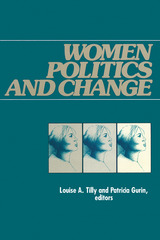 Women, Politics and Change
Louise A. Tilly
Russell Sage Foundation, 1990 Women, Politics, and Change, a compendium of twenty-three original essays by social historians, political scientists, sociologists, psychologists, and anthropologists, examines the political history of American women over the past one hundred years. Taking a broad view of politics, the contributors address voluntarism and collective action, women's entry into party politics through suffrage and temperance groups, the role of nonpartisan organizations and pressure politics, and the politicization of gender. Each chapter provides a telling example of how American women have behaved politically throughout the twentieth century, both in the two great waves of feminist activism and in less highly mobilized periods. "The essays are unusually well integrated, not only through the introductory material but through a similarity of form and extensive cross-references among them....in raising central questions about the forms, bases, and issues of women's politics, as well as change and continuity over time, Tilly, Gurin, and the individual scholars included in this collection have provided us with a survey of the latest research and an agenda for the future." —Contemporary Sociology "This book is a necessary addition to the scholar's bookshelf, and the student's curriculum." —Cynthia Fuchs Epstein, professor of sociology, City University of New York Graduate Center
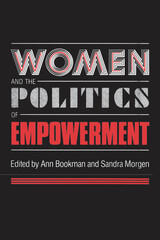 Women Politics And Empowerment
Ann Bookman
Temple University Press, 1987 "Women and the Politics of Empowerment is filled with pictures of women whose lives the masculinist ideology of our disciplines has said are not worthy of our interest. Bookman, Morgen, and their colleagues awaken all kinds of ideas about where to go from here."
--Women & Politics
According to popular conception, working-class women in the United States are part of the "silent majority." But during the 1970s and early 1980s these women have been far from silent. Speaking out both individually and collectively, they have staked new political ground for themselves and their families. Drawing on case studies of community and workplace organizing, these original essays redefine our notions of "the political" and address a wide range of topics, including the creation and reform of unions, domestic service, street vending, working-class education, health care, and social services.
The contributors have focused on working-class women from diverse racial and ethnic backgrounds employed in a wide variety of jobs. Women and the Politics of Empowerment documents the story of women learning about the sources of their powerlessness and mobilizing to increase their power.
"Drawing together an excellent compilation of case studies of community and workplace organizing, Bookman and Morgen redefine the political arena and process. They focus on the statuses of working-class and low-income women from diverse racial and ethnic backgrounds, thereby giving attention to women who have been largely ignored as actors in the political arena…. These rich and varied case materials are useful for the scholar-researcher, the activist, and for the teacher in women's studies, social work, public policy, education, and public health."
--Contemporary Sociology
"Don't let the title…scare you…. The book is devoted to bridging the gap between theory and practice, between feminism and working-class women. And it succeeds, through fourteen widely disparate, yet complementary essays about working-class women, Black, Latina and white, struggling on the job and in their communities for social change."
--New Directions for Women
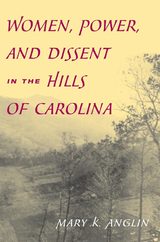 Women, Power, and Dissent in the Hills of Carolina
Mary K. Anglin
University of Illinois Press, 2002 Women, Power, and Dissent in the Hills of Carolina is a unique and impassioned exploration of gender, labor, and resistance in western North Carolina. Based on eight months of field research in a mica manufacturing plant and the surrounding rural community, as well as oral histories of women who worked in mica houses in the early twentieth century, this landmark study canvasses the history of the mica industry and the ways it came to be organized around women's labor. Mary K. Anglin's investigation of working women's lives in the plant she calls "Moth Hill Mica Company" reveals the ways women have contributed to household and regional economies for more than a century. Without union support or recognition as skilled laborers, these women developed alternate strategies for challenging the poor working conditions, paltry wages, and corporate rhetoric of Moth Hill. Utilizing the power of memory and strong family and community ties, as well as their own interpretations of gender and culture, the women have found ways to "boss themselves."
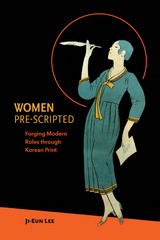 Women Pre-scripted: Forging Modern Roles through Korean Print
Ji-Eun Lee
University of Hawaii Press, 2015 Women Pre-Scripted explores the way ideas about women and their social roles changed during Korea’s transformation into a modern society. Drawing on a wide range of materials published in periodicals—ideological debates, cartoons, literary works, cover illustrations, letters, and confessions—the author shows how at different times between 1896 and 1934, the idea of modern womanhood transforms from virgin savior to mother of the nation to manager of modern family life and, finally, to an embodiment of the capitalist West, fully armed with sexuality and glamour. Each chapter examines representative periodicals to explore how their content on a range of women’s issues helped formulate and prescribe women’s roles, defining what would later become appropriate knowledge for women in the new modern context. Lee shows how in various ways this prescribing was gendered, how it would sometimes promote the “modern” and at other times critique it. She offers a close look at primary sources not previously introduced in English, exploring the subject and genre of each work, the script used, and the way it categorized or defined a given women’s issue. By identifying and dissecting the various agendas and agents behind the scenes, she is able to shed light on the complex and changing relationship between domesticity, gender, and modernity during Korea’s transition to a modern state and its colonial occupation. Women Pre-Scripted contributes to the swell of research on Asian women in recent years and expands our picture of a complex period. It will be of interest to scholars of Korean literature and history, East Asian literature, and others interested in women and gender within the context of colonial modernity.
Women, Production, and Patriarchy in Late Medieval Cities
Martha C. Howell
University of Chicago Press, 1986 In this bold reinterpretation of Women's changing labor status during the late medieval and early modern period, Martha C. Howell argues that women's work was the product of the intersection of two systems, one cultural and one economic. Howell shows forcefully that patriarchal family structure, not capitalist development per se, was a decisive factor in determining women's work. Women could enjoy high labor status if they worked within a family production unit or if their labor did not interfere with their domestic responsibilities or threaten male control of a craft or trade.
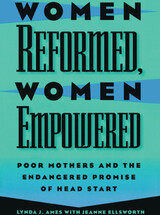 Women Reformed, Women Empowered: Poor Mothers and the Endangered Promise of Head Start
Lynda Ames
Temple University Press, 1996 By chronicling the everyday experiences of women in a rural Head Start program, Lynda J. Ames and Jeanne Ellsworth examine the processes of underprivileged women working to make a better life for themselves and their families. The authors explain that in order to empower its participants, the Head Start program allows many women to work as aides or on advisory boards in order to learn how to impact the structures that constrain their lives. This enables participants to take more control while receiving financial assistance and other opportunities for new social support structures.
Head Start was designed around the assumption that its aim should be to "correct" certain presumed deficits of parents, and many policymakers and participants swear by the program for its capacity to empower and its remarkable success rate. Unfortunately, while empowerment can make women's lives more manageable and more rewarding, many administrators feel that it does not change the immediate structure of poverty. In the search for a program design that provides more accountability, administrators are moving to take more control of local programs, thereby decreasing the mothers' control and threatening the flexibility and the empowerment potential of the program, two key factors that have made Head Start so successful.
It is this struggle for control of the women's day-to-day lives and families that Ames and Ellsworth reveal through personal stories. Women Reformed, Women Empowered is not only a testament to the successes of the program, but a story of poor women finding the resources they need, and a call to reevaluate disempowering policies that can drive underprivileged families deeper into apathy and hopelessness.
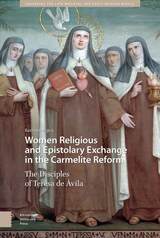 Women Religious and Epistolary Exchange in the Carmelite Reform: The Disciples of Teresa de Avila
Bárbara Mujica
Amsterdam University Press, 2020 The sixteenth century was a period of crisis in the Catholic Church. Monastic reorganization was a major issue, and women were at the forefront of charting new directions in convent policy. The story of the Carmelite Reform has been told before, but never from the perspective of the women on the front lines. Nearly all accounts of the movement focus on Teresa de Avila, (1515-1582), and end with her death in 1582. Women Religious and Epistolary Exchange in the Carmelite Reform: The Disciples of Teresa de Avila carries the story beyond Teresa’s death, showing how the next generation of Carmelite nuns struggled into the seventeenth century to continue her mission. It is unique in that it draws primarily from female-authored sources, in particular, the letters of three of Teresa’s most dynamic disciples: María de San José, Ana de Jesús and Ana de San Bartolomé.
Women Religious Crossing between Cloister and the World: Nunneries in Europe and the Americas, ca. 1200–1700
Mercedes Pérez Vidal
Arc Humanities Press, 2023 This book presents a comparative approach to the role of women in religious and monastic life in Europe and the Americas during the medieval and early modern periods. The contributors inquire into differences and similarities, continuities and discontinuities of women’s agency inside and outside the convent. The volume challenges traditional chronological and regional limitations such as those between the Middle Ages and the Modern era and stresses the transatlantic exchange of models between Europe and the Americas.
Women Remember the War, 1941-1945
Michael E. Stevens
Wisconsin Historical Society Press, 1993 Women Remember the War, 1941-1945 offers a brief introduction to the experiences of Wisconsin women in World War II through selections from oral history interviews in which women addressed issues concerning their wartime lives. In this volume, more than 30 women describe how they balanced their more traditional roles in the home with new demands placed on them by the biggest global conflict in history. This book provides a rich mix of insights, incorporating the perspectives of workers in factories, in offices, and on farms as well as those of wives and mothers who found their work in the home. In addition, the volume contains accounts by women who served overseas in the military and the Red Cross. These accounts provide readers with a vivid picture of how women coped with the stresses created by their daily lives and by the additional burden of worrying about loved ones fighting overseas.
Women Resisting AIDS: Feminist Strategies of Empowerment
edited by Beth E. Schneider and Nancy E. Stoller
Temple University Press, 1995 This collection of original essays discusses the increasingly rapid spread of AIDS among women, considering the varying experiences and responses of women of color, lesbians, and economically impoverished women. The essays range widely from policy assessments to case studies, focusing on women as sufferers, caretakers, policy activists, community organizers, and educators.
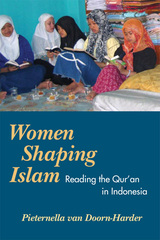 Women Shaping Islam: Reading the Qu'ran in Indonesia
Pieternella van Doorn-Harder
University of Illinois Press, 2006 In the United States, precious little is known about the active role Muslim women have played for nearly a century in the religious culture of Indonesia, the largest majority-Muslim country in the world. While much of the Muslim world excludes women from the domain of religious authority, the country's two leading Muslim organizations--Muhammadiyah and Nahdlatul Ulama (NU)--have created enormous networks led by women who interpret sacred texts and exercise powerful religious influence.
In Women Shaping Islam, Pieternella van Doorn-Harder explores the work of these contemporary women leaders, examining their attitudes toward the rise of radical Islamists; the actions of the authoritarian Soeharto regime; women's education and employment; birth control and family planning; and sexual morality. Ultimately, van Doorn-Harder reveals the many ways in which Muslim women leaders understand and utilize Islam as a significant force for societal change; one that ultimately improves the economic, social, and psychological condition of women in Indonesian society.
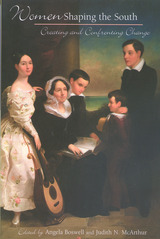 Women Shaping the South: Creating and Confronting Change
Edited by Angela Boswell & Judith N. McArthur
University of Missouri Press, 2006
Events in southern history have often been recounted from the top down, relying on political and economic models to explain historical changes. Thus, the key players have usually been men who dominated politics, shaped economic development, and led armies. However, history is also made from the bottom up by those who confront change and shape it through their actions. In this collection of essays, the contributors reexamine major transformative events of southern history from the late eighteenth century through the civil rights era.
Shifting the focus to the local level, the authors demonstrate how women participated in creating change, even as they confronted conditions over which they had little power. In addition to exploring southern women’s lives, this collection shows how women shaped southern history. Using new and extensive primary research, each of these authors presents a new perspective on the important roles that women of different races and classes have played in transforming the South at some of its most crucial turning points, including post-Revolution, Civil War, Jim Crow era, World War I, and the civil rights movement.
Expanded from papers presented at the Sixth Southern Conference on Women’s History in Athens, Georgia, these essays reflect the depth and breadth of current vibrant research in southern women’s history and contribute exciting and important new scholarship to the field. Just as significant, the volume highlights the trends in southern women’s historical scholarship and points toward new directions for future scholars.
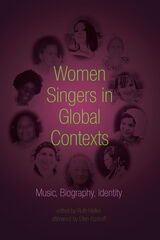 Women Singers in Global Contexts: Music, Biography, Identity
Edited by Ruth Hellier: Afterword by Ellen Koskoff
University of Illinois Press, 2016 Exploring and celebrating individual lives in diverse situations, Women Singers in Global Contexts is a new departure in the study of women's worldwide music-making. Ten unique women constitute the heart of this volume: each one has engaged her singing voice as a central element in her life, experiencing various opportunities, tensions, and choices through her vocality. These biographical and poetic narratives demonstrate how the act of vocalizing embodies dynamics of representation, power, agency, activism, and risk-taking. Engaging with performance practice, politics, and constructions of gender through vocality and vocal aesthetics, this collection offers valuable insights into the experiences of specific women singers in a range of sociocultural contexts. Contributors trace themes and threads that include childhood, families, motherhood, migration, fame, training, transmission, technology, and the interface of private lives and public identities.
Women, State, and Party in Eastern Europe
Sharon L. Wolchik and Alfred Meyer, eds.
Duke University Press, 1985 These essays, by American, Canadian, and East European scholars, provide a comprehensive look at the status of women in Eastern Europe, with particular emphasis on the postwar situation.
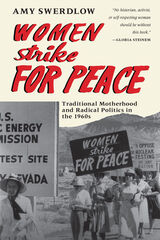 Women Strike for Peace: Traditional Motherhood and Radical Politics in the 1960s
Amy Swerdlow
University of Chicago Press, 1993 Women Strike for Peace is the only historical account of this ground-breaking women's movement. Amy Swerdlow, a founding member of WSP, restores to the historical record a significant chapter on American politics and women's studies. Weaving together narrative and analysis, she traces WSP's triumphs, problems, and legacy for the women's movement and American society.
Women Strike for Peace began on November 1, 1961, when thousands of white, middle-class women walked out of their kitchens and off their jobs in a one-day protest against Soviet and American nuclear policies. The protest led to a national organization of women who fought against nuclear arms and U.S. intervention in Vietnam. While maintaining traditional maternal and feminine roles, members of WSP effectively challenged national policies—defeating a proposal for a NATO nuclear fleet, withstanding an investigation by the House Committee on Un-American Activities, and sending one of its leaders to Congress as a peace candidate.
As a study of a dissident group grounded in prescribed female culture, and the struggle of its members to avoid being trapped within that culture, this book adds a crucial new dimension to women's studies. In addition, this account of WSP's success as a grass roots, nonhierarchical movement will be of great interest to historians, political scientists, and anyone interested in peace studies or conflict resolution.
"Swerdlow has re-created a unique piece of American political history, a chapter of the international peace movement, and an origin of the modern feminist movement. No historian, activist, or self-respecting woman should be without Women Strike for Peace. It shows not only how one group of women created change, but also how they inevitably changed themselves."—Gloria Steinem
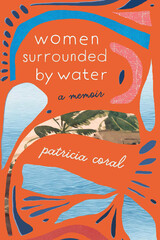 Women Surrounded by Water: A Memoir
Patricia Coral
Ohio State University Press, 2024 Longlisted, 2024 National Book Critics Circle Award, Autobiography Growing up in Puerto Rico, Patricia Coral was surrounded by women who fought for their needs amid the demands of domesticity and who were dismissed and judged when they rejected any predetermined paths on an island that itself has never been free. At age twenty-five, she married her first love, a green-eyed musician whose internal storms drove Coral to slowly realize that the marriage must end. Faced with disillusionment—with her husband, with the patriarchal expectations that surrounded her like the Caribbean Sea, and with the limited options available to her—she leaves, only for Hurricane Maria to wrench her heart homeward. Coral evokes the beauty, love, and language of her family and of Puerto Rico as well as the pain of yearning for more. Tastes, colors, and the dreamlike lushness of childhood memories infuse this mournful and propulsive memoir of personal and natural disasters—and the self-discovery made possible only when we choose what to leave behind.
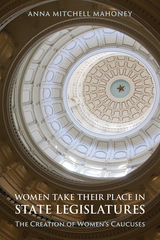 Women Take Their Place in State Legislatures: The Creation of Women's Caucuses
Anna Mitchell Mahoney
Temple University Press, 2019 How do women strategically make their mark on state legislatures? Anna Mitchell Mahoney’s book traces the development of women’s state legislative caucuses and the influence both gender and party have on women’s ability to organize collectively. She provides a comprehensive analysis of how and why women organize around their gender identity in state legislatures—or why they do not. Women Take Their Place in State Legislatures includes a quantitative analysis of institutional-level variables and caucus existence in all 50 states. Case studies of caucus attempts in New Jersey, Colorado, Pennsylvania, and Iowa between 2006 and 2010 examine attempts at creating women’s caucuses that succeeded or failed, and why. Mahoney’s interviews with 180 state legislators and their staff explore the motivations of caucus creators and participants. Ultimately, she finds that women’s organizing is contextual; it demonstrates the dynamic nature of gender. Mahoney also provides insights into broad questions regarding gendered institutions, collective action, and political party governance. Women Take Their Place in State Legislatures fills a lacuna in the evaluation of women in government.
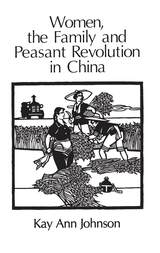 Women, the Family, and Peasant Revolution in China
Kay Ann Johnson
University of Chicago Press, 1983 Kay Ann Johnson provides much-needed information about women and gender equality under Communist leadership. She contends that, although the Chinese Communist Party has always ostensibly favored women's rights and family reform, it has rarely pushed for such reforms. In reality, its policies often have reinforced the traditional role of women to further the Party's predominant economic and military aims.
Johnson's primary focus is on reforms of marriage and family because traditional marriage, family, and kinship practices have had the greatest influence in defining and shaping women's place in Chinese society. Conversant with current theory in political science, anthropology, and Marxist and feminist analysis, Johnson writes with clarity and discernment free of dogma. Her discussions of family reform ultimately provide insights into the Chinese government's concern with decreasing the national birth rate, which has become a top priority. Johnson's predictions of a coming crisis in population control are borne out by the recent increase in female infanticide and the government abortion campaign.
Women, the New York School, and Other True Abstractions
Maggie Nelson
University of Iowa Press, 2007 Maggie Nelson provides the first extended consideration of the roles played by women in and around the New York School of poets, from the 1950s to the present, and offers unprecedented analyses of the work of Barbara Guest, Bernadette Mayer, Alice Notley, Eileen Myles, and abstract painter Joan Mitchell as well as a reconsideration of the work of many male New York School writers and artists from a feminist perspective.
 Women, the State, and Welfare
Edited by Linda Gordon
University of Wisconsin Press, 1990 Women, the State, and Welfare is the first collection of essays specifically about women and welfare in the United States. As an introduction to the effects of welfare programs, it is intended for general readers as well as specialists in sociology, history, political science, social work, and women’s studies. The book begins with a review essay by Linda Gordon that outlines current scholarship about women and welfare. The chapters that follow explore discrimination against women inherent in many welfare programs; the ways in which welfare programs reinforce basic gender programs in society; the contribution of organized, activist women to the development of welfare programs; and differences of race and class in the welfare system. By giving readers access to a number of perspectives about women and welfare, this book helps position gender at the center of welfare scholarship and policy making and places welfare issues at the forefront of feminist thinking and action.
Women Times Three: Writers, Detectives, Readers
Kathleen Gregory Klein
University of Wisconsin Press, 1995 This volume explores the range of relationships among women writers, women detectives and women-centered mystery fiction, and women readers. Focusing on writers as diverse as Sara Paretsky, Joan Hess, Sarah Caudwell, P. D. James, Katherine V. Forrest, Mary Roberts Rinehart, Sue Grafton, D. R. Meredith, Dorothy L. Sayers, and Barbara Wilson, the authors analyze the development of detective fiction with a different agenda: the woman-authored woman detective.
The eleven essays concentrate new attention on the trio of reader, writer, and text when all three are modified by the terms “woman” and “mystery.”
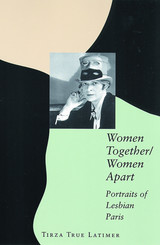 Women Together/Women Apart: Portraits of Lesbian Paris
Latimer, Tirza True
Rutgers University Press, 2005 What does it mean to look like a lesbian? Though it remains impossible to conjure a definitive image that captures the breadth of this highly nuanced term, today at least we are able to consider an array of visual representations that have been put into circulation by lesbians themselves over the last six or seven decades. In the early twentieth century, though, no notion of lesbianism as a coherent social or cultural identity yet existed. In Women Together/Women Apart, Tirza True Latimer explores the revolutionary period between World War I and World War II when lesbian artists working in Paris began to shape the first visual models that gave lesbians a collective sense of identity and allowed them to recognize each other. Flocking to Paris from around the world, artists and performers such as Romaine Brooks, Claude Cahun, Marcel Moore, and Suzy Solidor used portraiture to theorize and visualize a "new breed" of feminine subject. The book focuses on problems of feminine and lesbian self-representation at a time and place where the rights of women to political, professional, economic, domestic, and sexual autonomy had yet to be acknowledged by the law. Under such circumstances, same-sex solidarity and relative independence from men held important political implications. Combining gender theory with visual, cultural, and historical analysis, Latimer draws a vivid picture of the impact of sexual politics on the cultural life of Paris during this key period. The book also illuminates the far-reaching consequences of lesbian portraiture on contemporary constructions of lesbian identity.
 Women Under Suspicion: Fraternization, Espionage, and Punishment in the Soviet Union During World War II
Regina Kazyulina
University of Wisconsin Press, 2025 Officially, women in the Soviet Union enjoyed a degree of equality unknown elsewhere in Allied countries at the time. However, long-standing norms of gendered behavior and stereotypes that cast women as morally weak, politically fallible, and sexually tempting meant that women in the army or living behind enemy lines were viewed with skepticism, seen as weak points easily exploited by the enemy. Concerned about sabotage, espionage, and ideological corruption, authorities categorized women who fraternized with the enemy—or who were suspected of doing so—as “socially dangerous,” a uniquely Soviet legal designation that exposed the accused to prosecution, imprisonment, and exile. Even without official sanction, women rumored to be involved with German occupiers were reviled, and treated accordingly, by their neighbors. By reading official reports against the grain and incorporating rare personal documents, Kazyulina provides a multifaceted study of the realities for non-Jewish Soviet women—in the army or resistance, or at home in occupied territories—during and after Nazi occupation.
 Women, Violence and War: Wartime Victimization of Refugees in the Balkans
Vesna Nikolic-Ristanovic
Central European University Press, 2000 Based on interviews with seventy women refugees, Women, Violence and War is a book about war as it is seen, lived and interpreted by women who were citizens of the former Yugoslavia. Many of the accounts portray the horrific experiences the victims had to face and the book addresses issues of sexual, physical and psychological violence, as well as problems of confinement, upheaval and family separation. In a completely new insight the book dispels the myth that many of the women were peasants, and shows that in fact they were educated, middle-class women with independent careers. The study also depicts how some of the victims attempt to come to terms with the aftermath of wartime abuse. This probing, accurate and unique investigation of victimization is an unparalleled volume that presents a completely new perspective maintaining that violence against women in war is not independent of peace-time victimization and the imbalance of power between sexes.
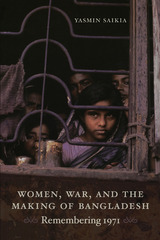 Women, War, and the Making of Bangladesh: Remembering 1971
Yasmin Saikia
Duke University Press, 2011 Fought between India and what was then East and West Pakistan, the war of 1971 led to the creation of Bangladesh, where it is remembered as the War of Liberation. For India, the war represents a triumphant settling of scores with Pakistan. If the war is acknowledged in Pakistan, it is cast as an act of betrayal by the Bengalis. None of these nationalist histories convey the human cost of the war. Pakistani and Indian soldiers and Bengali militiamen raped and tortured women on a mass scale. In Women, War, and the Making of Bangladesh, survivors tell their stories, revealing the power of speaking that deemed unspeakable. They talk of victimization—of rape, loss of status and citizenship, and the “war babies” born after 1971. The women also speak as agents of change, as social workers, caregivers, and wartime fighters. In the conclusion, men who terrorized women during the war recollect their wartime brutality and their postwar efforts to achieve a sense of humanity. Women, War, and the Making of Bangladesh sheds new light on the relationship among nation, history, and gender in postcolonial South Asia.
Women Warriors in Early Modern Spain: A Tribute to Barbara Mujica
Susan L. Fischer
University of Delaware Press, 2019 Although scholars often depict early modern Spanish women as victims, history and fiction of the period are filled with examples of women who defended their God-given right to make their own decisions and to define their own identities. The essays in Women Warriors in Early Modern Spain examine many such examples, demonstrating how women battled the status quo, defended certain causes, challenged authority, and broke barriers. Such women did not necessarily engage in masculine pursuits, but often used cultural production and engaged in social subversion to exercise resistance in the home, in the convent, on stage, or at their writing desks.
Published by University of Delaware Press. Distributed worldwide by Rutgers University Press.
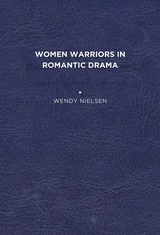 Women Warriors in Romantic Drama
Wendy C. Nielsen
University of Delaware Press, 2013 Women Warriors in Romantic Drama examines a recurring figure that appears in French, British, and German drama between 1789 and 1830: the woman warrior. The term itself, “woman warrior,” refers to quasi-historical female soldiers or assassins. Women have long contributed to military campaigns as canteen women. Camp followers ranged from local citizenry to spouses and prostitutes, and on occasion, women assisted men in combat. However, the woman warrior is a romantic figure, meaning a fanciful ideal, despite the reality of women’s participation in select scenes of the French Revolution and the Napoleonic Wars. The central claim of this book is the woman warrior is a way for some women writers (Olympe de Gouges, Christine Westphalen, Karoline von Günderrode, and Mary Robinson) to explore the case for extending citizenship to women. This project focuses primarily on theater for the reason that the stage simulates the public world that female dramatists and their warriors seek to inhabit. Novels and poetry clearly belong to the realm of fiction, but when audiences see women fighting onstage, they confront concrete visions of impossible women. I examine dramas in the context of their performance and production histories in order to answer why so many serious dramas featuring women warriors fail to find applause, or fail to be staged at all. Dramas about women warriors seem to sometimes contribute to the argument for female citizenship when they take the form of tragedy, because the deaths of female protagonists in such plays often provoke consideration about women’s place in society. Consequently, where we find women playing soldiers in various entertainment venues, farce and satire often seem to dominate, although this book points to some exceptions. Censorship and audience demand for comedies made producing tragedies difficult for female playwrights, who battled additional obstacles to fashioning their careers. I compare male (Edmund Eyre, Heinrich von Kleist) and female writers’ dramatizations of the woman warrior. This analysis shows that the difficult project of getting audiences to take women warriors seriously resembles women writers’ struggles to enter the ostensibly male domains of tragedy and the public sphere. Published by University of Delaware Press. Distributed worldwide by Rutgers University Press.
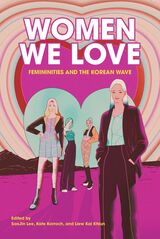 Women We Love: Femininities and the Korean Wave
Edited by Soojin Lee, Kate Korroch, and Kai Khiun Liew
Hong Kong University Press, 2023 Fills a gap in Korean Wave studies by studying it through the lens of gender.
Women We Love is an edited collection exploring femininities in and around the Korean Wave since 2000. While studies on the Korean Wave are abundant, there is a dearth of analysis about the female-identifying stars, characters, and fans who shape and lead this crucial cultural movement. Using “women” as an inclusive term extending to all those who self-define as women, this collection of essays examines the role of women in K-pop and K-drama industries and fandom spaces, encompassing crucial intersectional topics such as queering of gender, dissemination of media, and fan culture.
The audience for Women We Love will reflect the contributors to this text; they are K-pop and K-drama fans, queer, international; they are also academics of Asian histories, sociology, gender and sexuality, art history, and visual culture. The chapters are playful, intersectional, and will be adapted well into syllabi for media studies, gender studies, visual culture studies, sociology, and contemporary global history.
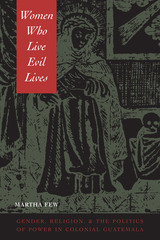 Women Who Live Evil Lives: Gender, Religion, and the Politics of Power in Colonial Guatemala
By Martha Few
University of Texas Press, 2002 Women Who Live Evil Lives documents the lives and practices of mixed-race, Black, Spanish, and Maya women sorcerers, spell-casters, magical healers, and midwives in the social relations of power in Santiago de Guatemala, the capital of colonial Central America. Men and women from all sectors of society consulted them to intervene in sexual and familial relations and disputes between neighbors and rival shop owners; to counter abusive colonial officials, employers, or husbands; and in cases of inexplicable illness. Applying historical, anthropological, and gender studies analysis, Martha Few argues that women's local practices of magic, curing, and religion revealed opportunities for women's cultural authority and power in colonial Guatemala. Few draws on archival research conducted in Guatemala, Mexico, and Spain to shed new light on women's critical public roles in Santiago, the cultural and social connections between the capital city and the countryside, and the gender dynamics of power in the ethnic and cultural contestation of Spanish colonial rule in daily life.
Women Who Make a Fuss: The Unfaithful Daughters of Virginia Woolf
Isabelle Stengers
University of Minnesota Press, 2014 Virginia Woolf, to whom university admittance had been forbidden, watched the universities open their doors. Though she was happy that her sisters could study in university libraries, she cautioned women against joining the procession of educated men and being co-opted into protecting a “civilization” with values alien to women. Now, as Woolf’s disloyal (unfaithful) daughters, who have professional positions in Belgian universities, Isabelle Stengers and Vinciane Despret, along with a collective of women scholars in Belgium and France, question their academic careers and reexamine the place of women and their role in thinking, both inside and outside the university. They urge women to heed Woolf’s cry—Think We Must—and to always make a fuss about injustice, cruelty, and arrogance.
The Women Who Reconstructed American Jewish Education, 1910-1965
Edited by Carol K. Ingall
Brandeis University Press, 2010 The conventional history of Jewish education in the United States focuses on the contributions of Samson Benderly and his male disciples. This volume tells a different story—the story of the women who either influenced or were influenced by Benderly or his closest friend, Mordecai Kaplan. Through ten portraits, the contributors illuminate the impact of these unheralded women who introduced American Jews to Hebraism and Zionism and laid the foundation for contemporary Jewish experiential education. Taken together, these ten portraits illuminate the important and hitherto unexamined contribution of women to the development of American Jewish education.
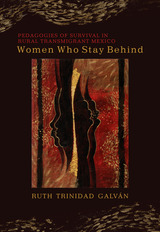 Women Who Stay Behind: Pedagogies of Survival in Rural Transmigrant Mexico
Ruth Trinidad Galván
University of Arizona Press, 2015 Women Who Stay Behind examines the social, educational, and cultural resources rural Mexican women employ to creatively survive the conditions created by the migration of loved ones. Using narrative, research, and theory, Ruth Trinidad Galván presents a hopeful picture of what is traditionally viewed as the abject circumstances of poor and working-class people in Mexico who are forced to migrate to survive.
The book studies women’s and families’ use of cultural knowledge, community activism, and teaching and learning spaces. Throughout, Trinidad Galván provides answers to these questions: How does the migration of loved ones alter community, familial, and gender dynamics? And what social relations (convivencia), cultural knowledge, and women-centered pedagogies sustain women’s survival (supervivencia)?
Researchers, educators, and students interested in migration studies, gender studies, education, Latin American studies, and Mexican American studies will benefit from the ethnographic approach and theoretical insight of this groundbreaking work.
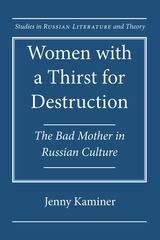 Women with a Thirst for Destruction: The Bad Mother in Russian Culture
Jenny Kaminer
Northwestern University Press, 2014 Winner, 2014 AWSS Best Book in Slavic/East European/Eurasian Women's Studies
In Russian culture, the archetypal mother is noble and self-sacrificing. In Women with a Thirst for Destruction, however, Jenny Kaminer shows how this image is destabilized during periods of dramatic rupture in Russian society, examining in detail the aftermath of three key moments in the country’s history: the emancipation of the serfs in 1861, the Russian Revolution of 1917, and the fall of the Communist regime in 1991. She explores works both familiar and relatively unexamined: Leo Tolstoy’s Anna Karenina, Mikhail Saltykov-Shchedrin’s The Golovlev Family, Fyodor Gladkov’s Cement, and Liudmila Petrushevskaia’s The Time: Night, as well as a late Soviet film (Vyacheslav Krishtofovich’s Adam’s Rib, 1990) and media coverage of the Chechen conflict. Kaminer’s book speaks broadly to the mutability of seemingly established cultural norms in the face of political and social upheaval.
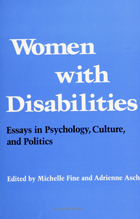 Women with Disabilities: Essays in Psychology, Culture, and Politics
edited by Michelle Fine and Adrienne Asch
Temple University Press, 1989 Women with disabilities are women first, sharing the dreams and disappointments common to women in a male-dominated society. But because society persists in viewing disability as an emblem of passivity and incompetence, disabled women occupy a devalued status in the social hierarchy. This book represents the intersection of the feminist and disability rights perspectives; it analyzes the forces that push disabled women towards the margins of social life, and it considers the resources that enable these women to resist the stereotype. Drawing on law, social science, folklore, literature, psychoanalytic theory, and political activism, this book describes the experience of women with disabilities. The essays consider the impact of social class, race, the age at which disability occurs, and sexual orientation on the disabled woman's self esteem as well as on her life options. The contributors focus their inquiry on the self perceptions of disabled women and ask: From what sources do these women draw positive self images? How do they resist the culture's power to label them as deviant? The essays describe the ways in which disabled women face discrimination in the workplace and the failure of the mainstream women's movement to address their concerns. In the series Health, Society, and Policy, edited by Sheryl Ruzek and Irving Kenneth Zola.
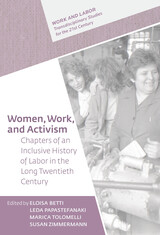 Women, Work, and Activism: Chapters of an Inclusive History of Labor in the Long Twentieth Century
Eloisa Betti
Central European University Press, 2022 The thirteen critical and well-documented chapters of Women, Work and Activism examine women’s labor struggle from late nineteenth-century Portuguese mutual societies to Yugoslav peasant women’s work in the 1930s, and from the Catalan labor movement under the Franco dictatorship to workplace democracy in the United States. The authors portray women's labor activism in a wide variety of contexts. This includes spontaneous resistance to masculinist trade unionism, the feminist engagement of women workers, the activism of communist wives of workers, and female long-distance migration, among others. The chapters address the gendered involvement of working people in multiple and often precarious and unstable labor relations and in unpaid labor, as well as the role of the state and other institutions in shaping the history of women’s labor.
The book is an innovative contribution to both the new labor history and feminist history. It fully integrates the conceptual advances made by gender historians in the study of labor activism, driving home critiques of Eurocentric historiographies of labor to Europe while simultaneously contributing to an inclusive history of women’s labor-related activism wherever to be found. Examining women’s activism in male-dominated movements and institutions, and in women’s networks and organizations, the authors make a case for a new direction in gender history.
 Women, Work, and Representation: Needlewomen in Victorian Art and Literature
Lynn M. Alexander
Ohio University Press, 2003 In Victorian England, virtually all women were taught to sew; needlework was allied with images of domestic economy and with traditional female roles of wife and mother- with home rather than factory. The professional seamstress, however, labored long hours for very small wages creating gowns for the upper and middle classes. In her isolation and helplessness, she provided social reformers with a powerful image of working-class suffering that appealed to the sensibilities of the upper classes and helped galvanize public opinion around the need for reform.
Women, Work, and Representation addresses the use of that image in the reform movement, underscoring the shock to the Victorian public when reports revealed that the profession of needlework was extremely hazardous, even deadly.
Author Lynn M. Alexander traces the development of the symbol of the seamstress through a variety of presentations, drawing from the writings of Charles Dickens, Elizabeth Gaskell, Charlotte Elizabeth Tonna, and George W. M. Reynolds, and on visual representations by Richard Redgrave, Thomas Benjamin Kennington, John Everett Millais, John Leech, John Tenniel, and Hubert von Herkomer.
Written to appeal to Victorian scholars, women's studies scholars, and those interested in semiotics and aestheticism, Women, Work, and Representation includes twenty illustrations, most from periodicals of the day, providing new insights into the lives of working women throughout the Victorian era.
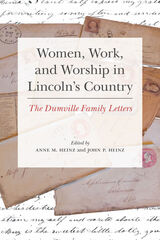 Women, Work, and Worship in Lincoln's Country: The Dumville Family Letters
Edited by Anne M. Heinz and John P. Heinz
University of Illinois Press, 2016 The Dumville family settled in central Illinois during an era of division and dramatic change. Arguments over slavery raged. Railroads and circuit-riding preachers brought the wider world to the prairie. Irish and German immigrants flooded towns and churches. Anne M. Heinz and John P. Heinz draw from an extraordinary archive at the Abraham Lincoln Presidential Library and Museum to reveal how Ann Dumville and her daughters Jemima, Hephzibah, and Elizabeth lived these times. The letters tell the story of Ann, expelled from her Methodist church for her unshakable abolitionist beliefs; the serious and religious Jemima, a schoolteacher who started each school day with prayer; Elizabeth, enduring hard work as a farmer's wife, far away from the others; and Hephzibah, observing human folly and her own marriage prospects with the same wicked wit. Though separated by circumstances, the Dumvilles deeply engaged one another with their differing views on Methodism, politics, education, technological innovation, and relationships with employers. At the same time, the letters offer a rarely seen look at antebellum working women confronting privation, scarce opportunities, and the horrors of civil war with unwavering courage and faith.
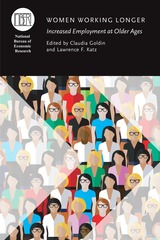 Women Working Longer: Increased Employment at Older Ages
Edited by Claudia Goldin and Lawrence F. Katz
University of Chicago Press, 2018 Today, more American women than ever before stay in the workforce into their sixties and seventies. This trend emerged in the 1980s, and has persisted during the past three decades, despite substantial changes in macroeconomic conditions. Why is this so? Today’s older American women work full-time jobs at greater rates than women in other developed countries.
In Women Working Longer, editors Claudia Goldin and Lawrence F. Katz assemble new research that presents fresh insights on the phenomenon of working longer. Their findings suggest that education and work experience earlier in life are connected to women’s later-in-life work. Other contributors to the volume investigate additional factors that may play a role in late-life labor supply, such as marital disruption, household finances, and access to retirement benefits. A pioneering study of recent trends in older women’s labor force participation, this collection offers insights valuable to a wide array of social scientists, employers, and policy makers.
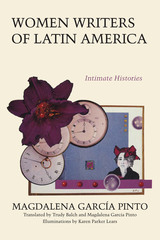 Women Writers of Latin America: Intimate Histories
By Magdalena García Pinto
University of Texas Press, 1991 What does it take for a woman to succeed as a writer? In these revealing interviews, first published in 1988 as Historias íntimas, ten of Latin America's most important women writers explore this question with scholar Magdalena García Pinto, discussing the personal, social, and political factors that have shaped their writing careers. The authors interviewed are Isabel Allende, Albalucía Angel, Rosario Ferré, Margo Glantz, Sylvia Molloy, Elvira Orphée, Elena Poniatowska, Marta Traba, Luisa Valenzuela, and Ida Vitale. In intimate dialogues with each author, García Pinto draws out the formative experiences of her youth, tracing the pilgrimage that led each to a distinguished writing career. The writers also reflect on their published writings, discussing the creative process in general and the motivating force behind individual works. They candidly discuss the problems they have faced in writing and the strategies that enabled them to reach their goals. While obviously of interest to readers of Latin American literature, this book has important insights for students of women's literature and cultural studies, as well as for aspiring writers.
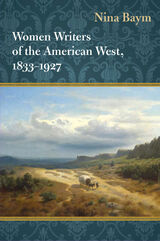 Women Writers of the American West, 1833-1927
Nina Baym
University of Illinois Press, 2012 Women Writers of the American West, 1833–1927 recovers the names and works of hundreds of women who wrote about the American West during the nineteenth and early twentieth centuries, some of them long forgotten and others better known novelists, poets, memoirists, and historians such as Willa Cather and Mary Austin Holley. Nina Baym mined literary and cultural histories, anthologies, scholarly essays, catalogs, advertisements, and online resources to debunk critical assumptions that women did not publish about the West as much as they did about other regions. Elucidating a substantial body of nearly 650 books of all kinds by more than 300 writers, Baym reveals how the authors showed women making lives for themselves in the West, how they represented the diverse region, and how they represented themselves. Baym accounts for a wide range of genres and geographies, affirming that the literature of the West was always more than cowboy tales and dime novels. Nor did the West consist of a single landscape, as women living in the expanses of Texas saw a different world from that seen by women in gold rush California. Although many women writers of the American West accepted domestic agendas crucial to the development of families, farms, and businesses, they also found ways to be forceful agents of change, whether by taking on political positions, deriding male arrogance, or, as their voluminous published works show, speaking out when they were expected to be silent.
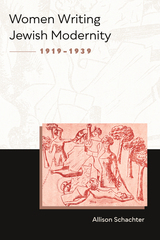 Women Writing Jewish Modernity, 1919–1939
Allison Schachter
Northwestern University Press, 2022 Finalist, 2023 National Jewish Book Award Winners in Women’s Studies
In Women Writing Jewish Modernity, 1919–1939, Allison Schachter rewrites Jewish literary modernity from the point of view of women. Focusing on works by interwar Hebrew and Yiddish writers, Schachter illuminates how women writers embraced the transgressive potential of prose fiction to challenge the patriarchal norms of Jewish textual authority and reconceptualize Jewish cultural belonging.
Born in the former Russian and Austro‑Hungarian Empires and writing from their homes in New York, Poland, and Mandatory Palestine, the authors central to this book—Fradl Shtok, Dvora Baron, Elisheva Bikhovsky, Leah Goldberg, and Debora Vogel—seized on the freedoms of social revolution to reimagine Jewish culture beyond the traditionally male world of Jewish letters. The societies they lived in devalued women’s labor and denied them support for their work. In response, their writing challenged the social hierarchies that excluded them as women and as Jews. As she reads these women, Schachter upends the idea that literary modernity was a conversation among men about women, with a few women writers listening in. Women writers revolutionized the very terms of Jewish fiction at a pivotal moment in Jewish history, transcending the boundaries of Jewish minority identities. Schachter tells their story and in so doing calls for a new way of thinking about Jewish cultural modernity.
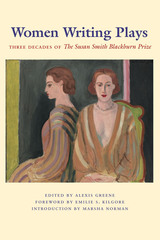 Women Writing Plays: Three Decades of the Susan Smith Blackburn Prize
Edited by Alexis Greene
University of Texas Press, 2006 Women's playwriting burgeoned in the United States and the United Kingdom as part of the feminist movement of the 1970s. Ever since, playwriting women have been embracing new subjects, experimenting with form, and devising new ways of looking at the world. To honor their achievements and inspire future endeavors, the Susan Smith Blackburn Prize was established in memory of an American actor, journalist, and feminist who died of breast cancer. In the nearly three decades of the award's existence, more than three hundred English-speaking women playwrights have been finalists for the Blackburn Prize in recognition of their work, including such prominent writers as Marsha Norman, Cheryl L. West, Wendy Wasserstein, Caryl Churchill, Paula Vogel, and Suzan-Lori Parks. This volume offers a comprehensive overview of women's playwriting, as well as a celebration of the Susan Smith Blackburn Prize. It combines critical essays, playwrights' memoirs, and conversations and interviews with playwrights to explore how women's playwriting evolved in relation to the women's movement and how it continues to map new territory and find fresh modes of expression. The majority of contributors to this volume—playwrights, arts journalists, and theater critics—have had some connection to the Blackburn Prize, either as award recipients, play readers, or judges. The memoirs, conversations, and interviews come from some of the finest women playwrights of the last three decades. These dramatists offer fascinating insight into the playwriting art, theatrical careers, and women's goals in writing for the theater.
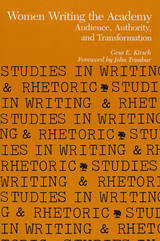 Women Writing the Academy: Audience, Authority, and Transformation
Gesa E. Kirsch. Foreword by John Trimbur
Southern Illinois University Press, 1993 Women Writing the Academy is based on an extensive interview study by Gesa E. Kirsch that investigates how women in different academic disciplines perceive and describe their experiences as writers in the university. Kirsch’s study focuses on the writing strategies of successful women writers, their ways of establishing authority, and the kinds of audiences they address in different disciplinary settings. Based on multiple interviews with thirty-five women from five different disciplines (anthropology, education, history, nursing, and psychology) and four academic ranks (seniors, graduate students, and faculty before and after tenure), this is the first book to systematically explore the academic context in which women write and publish. While there are many studies in literary criticism on women as writers of fiction, there has not been parallel scholarship on women as writers of professional discourse, be it inside or outside the academy. Through her research, for example, Kirsch found that women were less likely than their male counterparts to think of their work as sufficiently significant to write up and submit for publication, tended to hold on to their work longer than men before sending it out, and were less likely than men to revise and resubmit manuscripts that had been initially rejected. This book is significant in that it investigates a new area of research— gender and writing—and in doing so brings together findings on audience, authority, and gender.
Womenfolks: Growing Up Down South
Shirley Abbott
University of Arkansas Press, 2017 A classic that has been in print since its first publication in 1983, Womenfolks is both a personal memoir and a meditation on the often pernicious mythologies of southern cultural history. Shirley Abbott gives us the gritty, independent women of the backwoods, the South’s true heroines, whose hardscrabble world is one of red dirt and hard work—a far cry from the hoopskirts and magnolias of southern lore. As honest, vibrant, and remarkable as the women whose stories illuminate these pages, Womenfolks draws a vivid portrait of a rural culture beset by poverty and sustained by deeply rooted traditions. In her new preface to this edition, Abbott assesses what has changed—and what may never change—about the burdens of southern history and expresses her hope that the better angels of our nature may prevail in our still-new century.
Women's Activism and Feminist Agency in Mozambique and Nicaragua
Jennifer Leigh Disney
Temple University Press, 2009 In Women's Activism and Feminist Agency in Mozambique and Nicaragua, Jennifer Leigh Disney investigates the contours of women’s emancipation outside the framework of liberal democracy and a market economy. She interviews 146 women and men in the two countries to explore the comparative contribution of women’s participation in subsistence and informal economies, political parties and civil society organizations. She also discusses military struggles against colonialism and imperialism in fostering feminist agency to provide a fascinating look at how each movement evolved and how it changed in a post-revolutionary climate.
 Women's Activism in Contemporary Russia
Linda Racioppi
Temple University Press, 1997 Through in-depth interviews with activists, the authors provide a broad and thorough introduction to the emerging women's movement and women's organizations in Russia. The focus is on the development of women's activism in late Soviet and post-Soviet Russia and the challenges for activists in a time of resurgent nationalism and turmoil over democratic reform.
Linda Racioppi and Katherine O'Sullivan See present a concise history of women's situation in tsarist Soviet Russia, which shows how their ability to organize was constrained by social strictures and state policies. They also analyze how the state-sponsored Soviet Women's Committee and new groups like the Independent Women's Forum, the Women's League, and the International Institute for Entrepreneurial Development responded to the challenges and opportunities of the transition. The authors examine the dynamics among these groups as well. The personal life histories of the activists reflect the ways women have responded to the changing political, economic, and social landscape in the former Soviet Union.
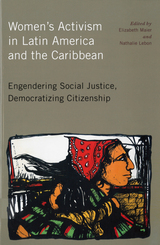 Women's Activism in Latin America and the Caribbean: Engendering Social Justice, Democratizing Citizenship
Edited and with an introduction by Elizabeth Maier and Nathalie Lebon
Rutgers University Press, 2010 Women's Activism in Latin America and the Caribbean brings together a group of interdisciplinary scholars who analyze and document the diversity, vibrancy, and effectiveness of women's experiences and organizing in Latin America and the Caribbean during the past four decades. Most of the expressions of collective agency are analyzed in this book within the context of the neoliberal model of globalization that has seriously affected most Latin American and Caribbean women's lives in multiple ways. Contributors explore the emergence of the area's feminist movement, dictatorships of the 1970s, the Central American uprisings, the urban, grassroots organizing for better living conditions, and finally, the turn toward public policy and formal political involvement and the alternative globalization movement. Geared toward bridging cultural realities, this volume represents women's transformations, challenges, and hopes, while considering the analytical tools needed to dissect the realities, understand the alternatives, and promote gender democracy.
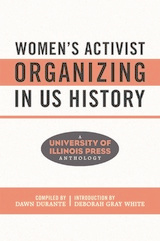 Women's Activist Organizing in US History: A University of Illinois Press Anthology
Compiled by Dawn Durante; Introduction by Deborah Gray White
University of Illinois Press, 2022 Women in the United States organized around their own sense of a distinct set of needs, skills, and concerns. And just as significant as women's acting on their own behalf was the fact that race, class, sexuality, and ethnicity shaped their strategies and methods. This authoritative anthology presents some of the powerful work and ideas about activism published in the acclaimed series Women, Gender, and Sexuality in American History. Assembled to commemorate the series' thirty-fifth anniversary, the collection looks at two hundred years of labor, activist, legal, political, and community organizing by women against racism, misogyny, white supremacy, and inequality. The authors confront how the multiple identities of an organization's members presented challenging dilemmas and share the histories of how women created change by working against inequitable social and structural systems. Insightful and provocative, Women’s Activist Organizing in US History draws on both classic texts and recent bestsellers to reveal the breadth of activism by women in the United States in the nineteenth and twentieth centuries. Contributors: Daina Ramey Berry, Melinda Chateauvert, Tiffany M. Gill, Nancy A. Hewitt, Treva B. Lindsey, Anne Firor Scott, Charissa J. Threat, Anne M. Valk, Lara Vapnek, and Deborah Gray White
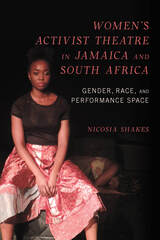 Women's Activist Theatre in Jamaica and South Africa: Gender, Race, and Performance Space
Nicosia M. Shakes
University of Illinois Press, 2023 Theater is an essential theoretical and practical site for forging Black radical thought, Africana feminisms, and womanism. Nicosia M. Shakes draws on ethnographic research in Jamaica and South Africa to analyze the vital relationship between activism and theater production. Concentrating on four performance events, Shakes situates the work of theater groups and projects within a trajectory of women-led social justice movements established in Jamaica, South Africa, and globally from the early 2000s to the present. Her analysis reveals movements driven by Black women’s artistic, intellectual, and organizational labor and focused on issues that range from sexual violence to reproductive justice to the spatial manifestations of racial, gender, and economic oppression. Shakes shows how theater’s political and pedagogical roles become entangled with histories and geographies of oppression and resistance; the identities and connections created by movements of people in the context of colonial and settler colonial histories; and ideas of womanism and feminism.
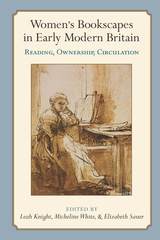 Women’s Bookscapes in Early Modern Britain: Reading, Ownership, Circulation
Leah Knight, Micheline White, and Elizabeth Sauer, Editors
University of Michigan Press, 2018 Women in 16th- and 17th-century Britain read, annotated, circulated, inventoried, cherished, criticized, prescribed, and proscribed books in various historically distinctive ways. Yet, unlike that of their male counterparts, the study of women’s reading practices and book ownership has been an elusive and largely overlooked field.
In thirteen probing essays, Women’s Bookscapesin Early Modern Britain brings together the work of internationally renowned scholars investigating key questions about early modern British women’s figurative, material, and cultural relationships with books. What constitutes evidence of women’s readerly engagement? How did women use books to achieve personal, political, religious, literary, economic, social, familial, or communal goals? How does new evidence of women’s libraries and book usage challenge received ideas about gender in relation to knowledge, education, confessional affiliations, family ties, and sociability? How do digital tools offer new possibilities for the recovery of information on early modern women readers?
The volume’s three-part structure highlights case studies of individual readers and their libraries; analyses of readers and readership in the context of their interpretive communities; and new types of scholarly evidence—lists of confiscated books and convent rules, for example—as well as new methodologies and technologies for ongoing research. These essays dismantle binaries of private and public; reading and writing; female and male literary engagement and production; and ownership and authorship.
Interdisciplinary, timely, cohesive, and concise, this collection’s fresh, revisionary approaches represent substantial contributions to scholarship in early modern material culture; book history and print culture; women’s literary and cultural history; library studies; and reading and collecting practices more generally.
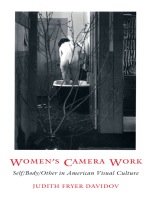 Women's Camera Work: Self/Body/Other in American Visual Culture
Judith Fryer Davidov
Duke University Press, 1998 Women’s Camera Work explores how photographs have been and are used to construct versions of history and examines how photographic representations of otherness often tell stories about the self. In the process, Judith Fryer Davidov focuses on the lives and work of a particular network of artists linked by time, interaction, influence, and friendship—one that included Gertrude Käsebier, Imogen Cunningham, Dorothea Lange, and Laura Gilpin.
Women’s Camera Work ranges from American women’s photographic practices during the nineteenth and early twentieth centuries to a study of landscape photography. Using contemporary cultural studies discourse to critique influential male-centered historiography and the male-dominated art world, Davidov exhibits the work of these women; tells their absorbing stories; and discusses representations of North American Indians, African Americans, Asian Americans, and the migrant poor. Evaluating these photographers’ distinct contributions to constructions of Americanness and otherness, she helps us to discover the power of reading images closely, and to learn to see through these women’s eyes. In presenting one of the most important strands of American photography, this richly illustrated book will interest students of American visual culture, women’s studies, and general readers alike.
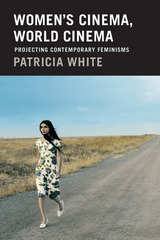 Women's Cinema, World Cinema: Projecting Contemporary Feminisms
Patricia White
Duke University Press, 2015 In Women’s Cinema, World Cinema, Patricia White explores the dynamic intersection of feminism and film in the twenty-first century by highlighting the work of a new generation of women directors from around the world: Samira and Hana Makhmalbaf, Nadine Labaki, Zero Chou, Jasmila Zbanic, and Claudia Llosa, among others. The emergence of a globalized network of film festivals has enabled these young directors to make and circulate films that are changing the aesthetics and politics of art house cinema and challenging feminist genealogies. Extending formal analysis to the production and reception contexts of a variety of feature films, White explores how women filmmakers are both implicated in and critique gendered concepts of authorship, taste, genre, national identity, and human rights. Women’s Cinema, World Cinema revitalizes feminist film studies as it argues for an alternative vision of global media culture.
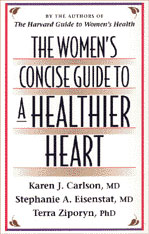 The Women’s Concise Guide to a Healthier Heart
Karen J. Carlson, M.D.; Stephanie A. Eisenstat, M.D.; and Terra Ziporyn, Ph.D.
Harvard University Press, 1997 From the authors of The Harvard Guide to Women's Health
Heart disease is the number one killer of women in this country. Every year half a million American women die of heart problems--and another 2.5 million are hospitalized for heart disease. This book brings the risks and realities of cardiovascular disease for women into clear focus. Where previous books have concentrated on men, The Women's Concise Guide to a Healthier Heart recognizes and clarifies the significant differences between men and women in the diagnosis and treatment of cardiac conditions.
The book lays out in plain English all that we currently know about preventing, recognizing, and living with a heart problem. Does an aspirin a day prevent heart disease in women? Does moderate alcohol consumption help or hurt? What about weight gain in middle age? Estrogen replacement therapy? These are the kinds of everyday, life-and-death questions that are addressed specifically for women in this concise guide. It considers questions of cholesterol and diabetes, stress and depression, diet and smoking. It explores diagnostic procedures and surgeries and explains their differing reliability and benefits for women and men.
Helpfully illustrated and easy to use, clear and comprehensive on every heart problem and related symptom and behavior, this book is the best resource for any woman wishing to understand the health and workings of her heart.
 The Women’s Concise Guide to Emotional Well-Being
Karen J. Carlson, M.D.; Stephanie A. Eisenstat, M.D.; and Terra Ziporyn, Ph.D.
Harvard University Press, 1997 From the authors of The Harvard Guide to Women's Health
This concise guide goes beyond facts and figures to get to the practical theories of women's emotional health. Here, in one volume, is what the experts know about maintaining emotional well-being in women, and about preventing, recognizing, and treating the psychological disturbances and disorders that women experience in their own way.
Just as depression and anxiety are more common among women, many psychiatric disorders are exacerbated by the natural rhythms in a woman's life cycle, such as menarche, menstruation, pregnancy, childbirth, and menopause. This book offers expert insight into why and how such patterns occur, as well as coping strategies for insomnia, substance abuse, domestic violence, and sexual abuse which can occur at any stage of life. Most importantly, the authors answer such pressing questions as: What works best for treating panic attacks and phobias? Should psychotherapy be used in tandem with drugs? How does one choose among group, individual, or family therapy? What are the benefits and drawbacks of drugs such as Prozac? Of beta blockers? Of tranquilizers? Are psychiatric problems passed on to one's children? What are the merits of acupuncture, hypnosis, meditation, sex therapy?
From the complexities of schizophrenia and obsessive-compulsive disorder to the delicate practicalities of sexual response, this guide offers all that a woman might want to know about protecting her psychological health.
Women's Culture: American Philanthropy and Art, 1830-1930
Kathleen D. McCarthy
University of Chicago Press, 1991 Kathleen McCarthy here presents the first book-length treatment of the vital role middle- and upper-class women played in the development of American museums in the century after 1830. By promoting undervalued areas of artistic endeavor, from folk art to the avant-garde, such prominent individuals as Isabella Stewart Gardner, Gertrude Vanderbilt Whitney, and Abby Aldrich Rockefeller were able to launch national feminist reform movements, forge extensive nonprofit marketing systems, and "feminize" new occupations.
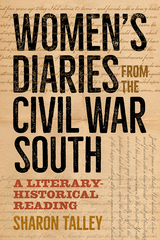 Women's Diaries from the Civil War South: A Literary-Historical Reading
Sharon Talley
University of Tennessee Press, 2020 “Traditionally, narratives of war have been male,” Sharon Talley writes. In the pages that follow, she goes on to disrupt this tradition, offering close readings and comparative studies of fourteen women’s diaries from the Civil War era that illuminate women’s experiences in the Confederacy during the war.
While other works highlighting individual diaries exist—and Talley notes that there has been a virtual explosion of published primary sources by women in recent years—this is the first effort of comprehensive synthesis of women’s Civil War diaries to attempt to characterize them as a distinct genre. Deeply informed by autobiographical theory, as well as literary and social history, Talley’s presentation of multiple diaries from women of differing backgrounds illuminates complexities and disparities across female wartime experiences rather than perpetuating overgeneralizations gleaned from a single diary or
preconceived ideas about what these diaries contain.
To facilitate this comparative approach, Talley divides her study into six sections that are organized by location, vocation, and purpose: diaries of elite planter women; diaries of women on the Texas frontier; diaries of women on the Confederate border; diaries of espionage by women in the South; diaries of women nurses near the battlefront; and diaries of women missionaries in the Port Royal Experiment. When read together, these writings illustrate that the female experience in the Civil War South was not one but many.
Women’s Diaries from the Civil War South: A Literary-Historical Reading is an essential text for scholars in women’s studies, autobiography studies, and Civil War studies alike, presenting an in-depth and multifaceted look at how the Civil War reshaped women’s lives in the South—and how their diverse responses shaped the course of the war in return.
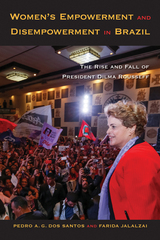 Women's Empowerment and Disempowerment in Brazil: The Rise and Fall of President Dilma Rousseff
Pedro A. G. dos Santos and Farida Jalalzai
Temple University Press, 2021 In 2010, Dilma Rousseff was the first woman to be elected President in Brazil. She was re-elected in 2014 before being impeached in 2016 for breaking budget laws. Her popularity and controversy both energized and polarized the country. In Women’s Empowerment and Disempowerment in Brazil, dos Santos and Jalalzai examine Rousseff’s presidency and what it means for a woman to hold (and lose) the country’s highest power. The authors examine the ways Rousseff exercised dominant authority and enhanced women’s political empowerment. They also investigate the extent her gender played a role in the events of her presidency, including the political and economic crises and her ensuing impeachment. Emphasizing women’s political empowerment rather than representation, the authors assess the effects of women executives to more directly impact female constituencies—how they can empower women by appointing them to government positions; make policies that advance women’s equality; and, through visibility, create greater support for female politicians despite rampant sexism. Women’s Empowerment and Disempowerment in Brazil uses Rousseff’s presidency as a case study to focus on the ways she succeeded and failed in using her authority to empower women. The authors’ findings have implications throughout the world.
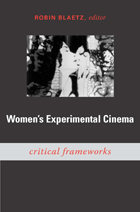 Women's Experimental Cinema: Critical Frameworks
Robin Blaetz, ed.
Duke University Press, 2007 Women’s Experimental Cinema provides lively introductions to the work of fifteen avant-garde women filmmakers, some of whom worked as early as the 1950s and many of whom are still working today. In each essay in this collection, a leading film scholar considers a single filmmaker, supplying biographical information, analyzing various influences on her work, examining the development of her corpus, and interpreting a significant number of individual films. The essays rescue the work of critically neglected but influential women filmmakers for teaching, further study, and, hopefully, restoration and preservation. Just as importantly, they enrich the understanding of feminism in cinema and expand the terrain of film history, particularly the history of the American avant-garde. The contributors examine the work of Marie Menken, Joyce Wieland, Gunvor Nelson, Yvonne Rainer, Carolee Schneemann, Barbara Rubin, Amy Greenfield, Barbara Hammer, Chick Strand, Marjorie Keller, Leslie Thornton, Abigail Child, Peggy Ahwesh, Su Friedrich, and Cheryl Dunye. The essays highlight the diversity in these filmmakers’ forms and methods, covering topics such as how Menken used film as a way to rethink the transition from abstract expressionism to Pop Art in the 1950s and 1960s, how Rubin both objectified the body and investigated the filmic apparatus that enabled that objectification in her film Christmas on Earth (1963), and how Dunye uses film to explore her own identity as a black lesbian artist. At the same time, the essays reveal commonalities, including a tendency toward documentary rather than fiction and a commitment to nonhierarchical, collaborative production practices. The volume’s final essay focuses explicitly on teaching women’s experimental films, addressing logistical concerns (how to acquire the films and secure proper viewing spaces) and extending the range of the book by suggesting alternative films for classroom use. Contributors. Paul Arthur, Robin Blaetz, Noël Carroll, Janet Cutler, Mary Ann Doane, Robert A. Haller, Chris Holmlund, Chuck Kleinhans, Scott MacDonald, Kathleen McHugh, Ara Osterweil, Maria Pramaggiore, Melissa Ragona, Kathryn Ramey, M. M. Serra, Maureen Turim, William C. Wees
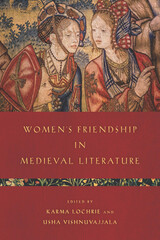 Women’s Friendship in Medieval Literature
Edited by Karma Lochrie and Usha Vishnuvajjala
Ohio State University Press, 2022 In Women’s Friendship in Medieval Literature, Karma Lochrie and Usha Vishnuvajjala bring together established scholars and new voices to illuminate a previously understudied but consequential element of life in the Middle Ages. Contributors focus on representations of women’s friendships in medieval European literature and their afterlives both to historicize them and draw out the finer nuances of the multitude of forms, affects, values, and ethics that emerge within those friendships. This volume examines works by Chaucer, Gower, Malory, Marie de France, female saints, and late-Middle Scots poets alongside lesser-known late medieval lyrics and Middle English romances to chart women’s friendships and their many and sometimes conflicting affinities with the cultural categories of gender, religion, politics, and sexuality. In addition to exploring the parameters of female friendship across a range of texts and historical contexts, contributors evaluate the political, religious, and civic structures negotiated in public and private and engage with the long history of theory and philosophy on friendship. The result is a theoretical and historical rubric for the future study of women’s friendships in medieval texts and beyond. Contributors: Penelope Anderson, Andrea Boffa, Jennifer N. Brown, Christine Chism, Melissa Ridley Elmes, Laurie Finke, Carissa M. Harris, Lydia Yaitsky Kertz, Clare A. Lees, Karma Lochrie, Gillian R. Overing, Alexandra Verini, Usha Vishnuvajjala, Stella Wang
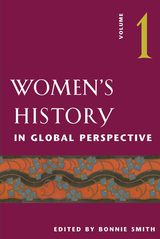 Women's History in Global Perspective, Volume 1
Edited by Bonnie G. Smith
University of Illinois Press, 2004 The American Historical Association's Committee on Women Historians commissioned some of the pioneering figures in women's history to prepare essays in their respective areas of expertise. Volume 1 of the three-volume series addresses the comparative themes that the editors and contributors see as central to understanding women's history around the world. Authors like Margaret Strobel, Alice Kessler-Harris, and Mrinalini Sinha provide overviews of the theory and practice of women's and gender history and analyze family history, nationalism, and work. Editor Bonnie G. Smith rounds out the collection with essays on religion, race, ethnicity, and the different varieties of feminism. Authoritative and wide-ranging, Women's History in Global Perspective, Volume 1, offers an invaluable resource on the thought and methods of a generation's leading figures in feminist scholarship. Contributors: Marjorie Bingham, Julia Clancy-Smith, Susan Kent, Alice Kessler-Harris, Mary Jo Maynes, Pamela Scully, Mrinalini Sinha, Margaret Strobel, and Ann B. Waltner
Women's History in Global Perspective, Volume 2
Edited by Bonnie G. Smith
University of Illinois Press, 2005 In Volume 2 of Women's History in Global Perspective, Bonnie G. Smith curates more essays by pioneering thinkers on issues that have shaped the history of women, this time with a focus on particular places and particular eras. The collection examines women from prehistory to ancient civilizations in Egypt, Israel, India, and beyond; a survey of women history in China, Japan, and Korea; women and gender in South and South East Asia; medieval women; women and gender in Colonial Latin America; and the history of women in the United States to 1865. Inclusive and wide-ranging, Women's History in Global Perspective, Volume 2, offers an invaluable collection of feminist scholarship on overlooked and marginalized topics. Contributors: Judith M. Bennett, Kathleen Brown, Brady Hughes, Sarah Shaver Hughes, Susan Mann, Barbara N. Ramusack, and Ann Twinam.
Women's History in Global Perspective, Volume 3
Edited by Bonnie G. Smith
University of Illinois Press, 2005 The concluding volume of Women's History in Global Perspective discusses contemporary trends in gender and women's history. Bonnie G. Smith edits essays that include women and gender in the history of sub-Saharan Africa and Middle Eastern women since the rise of Islam. Other contributors offer a transnational approach to women in early and modern Europe; look at women's history in Russia and the Soviet Union; discuss the national period in Latin American women's history; and provide a global perspective on women in North American history after 1865. Contributors: Bonnie S. Anderson, Ellen Dubois, Barbara Engel, Cheryl Johnson-Odim, Nikki R. Keddie, Asunción Lavrin, and Judith P. Zinsser
Women's Household Drama: Loves Victorie, A Pastorall, and The concealed Fansyes
Mary Wroth, Jane Cavendish, and Elizabeth Brackley
Iter Press, 2018 This volume presents three plays by women that were written in specific household contexts and survive in distinctive handwritten copies dating from their authors’ lifetimes. Care is taken in the introductions, notes, and apparatus to make the plays accessible to non-specialist readers while also preserving early modern orthography, punctuation, and manuscript practices. Each play is presented in an edited old-spelling text and set within its literary, biographical, and theatrical context. The volume as a whole foregrounds the early modern household as a uniquely productive setting for women’s theatrical and literary activity.
Volume 66 in the Other Voice in Early Modern Europe - The Chicago Series
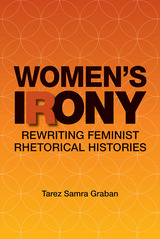 Women's Irony: Rewriting Feminist Rhetorical Histories
Tarez Samra Graban
Southern Illinois University Press, 2015 In Women’s Irony: Rewriting Feminist Rhetorical Histories, author Tarez Samra Graban synthesizes three decades of feminist scholarship in rhetoric, linguistics, and philosophy to present irony as a critical paradigm for feminist rhetorical historiography that is not linked to humor, lying, or intention. Using irony as a form of ideological disruption, this innovative approach allows scholars to challenge simplistic narratives of who harmed, and who was harmed, throughout rhetorical history. Three case studies of women’s political discourse between 1600 and 1900—examining the work of Anne Askew, Anne Hutchinson, and Helen M. Gougar—demonstrate how reading historical texts ironically complicates the theoretical relationships between women and agency, language and history, and archival location and memory. Interwoven throughout are shorter case studies from twentieth-century performances, revealing irony’s consciousness-raising potential for the present and the future. Ultimately, Women’s Irony suggests alternative ways to question women’s histories and consider how contemporary feminist discourse might be better historicized. Graban challenges critical methods in rhetoric, asking scholars in rhetoric and its related disciplines—composition, communication, and English studies—to rethink how they produce historical knowledge and use archives to recover women’s performances in political situations.
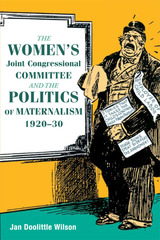 The Women's Joint Congressional Committee and the Politics of Maternalism, 1920-30
Jan Doolittle Wilson
University of Illinois Press, 2006 The rise and fall of a feminist reform powerhouse Jan Doolittle Wilson offers the first comprehensive history of the umbrella organization founded by former suffrage leaders in order to coordinate activities around women's reform. Encompassing nearly every major national women's organization of its time, the Women's Joint Congressional Committee (WJCC) evolved into a powerful lobbying force for the legislative agendas of more than twelve million women. Critics and supporters alike came to recognize it as "the most powerful lobby in Washington." Examining the WJCC's most consequential and contentious campaigns, Wilson traces how the group's strategies, rhetoric, and success generated congressional and grassroots support for their far-reaching, progressive reforms. But the committee's early achievements sparked a reaction by big business that challenged and ultimately limited the programs these women envisioned. Using the WJCC as a lens, Wilson analyzes women's political culture during the 1920s. She also sheds new light on the initially successful ways women lobbied for social legislation, the limitations of that process for pursuing class-based reforms, and the enormous difficulties the women soon faced in trying to expand public responsibility for social welfare. A volume in the series Women in American History, edited by Anne Firor Scott, Susan Armitage, Susan K. Cahn, and Deborah Gray White
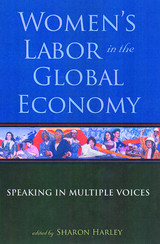 Women's Labor in the Global Economy: Speaking in Multiple Voices
Harley, Sharon
Rutgers University Press, 2007 Globalization is not a new phenomenon; women throughout the world have been dealing with the circumstances and consequences of an international economy long before the advent of the transnational corporate conglomerate. However, in a mercenary example of the tried clich "the more things change, the more they stay the same," women-particularly those of color-continue to be relegated to the lowest rung of the occupational ladder, where their indispensable contributions to global market capitalism are downplayed or invalidated completely through the perpetuation of stereotypes and the denial of access to better job opportunities and resources. How women of color around the world adapt and challenge the economic, political, and social effects of globalization is the subject of this broad-minded and incisive anthology. From Mexico, Jamaica, Ghana, Zimbabwe, and Sri Lanka, to immigrant and non-immigrant communities in the United States-the women documented in these essays are agricultural and factory workers, artists and entrepreneurs, mothers and activists. Their stories bear stark witness to how globalization continues to develop new sites and forms of exploitation, while its apparent victims continue to be women, men, and children of color.
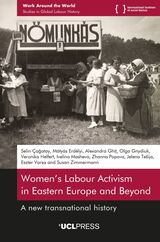 Women’s Labour Activism in Eastern Europe and Beyond: A New Transnational history
Selin Çagatay, et al.
University College London, 2025 An inclusive history of women’s activism to improve working conditions in Eastern Europe, Turkey, and beyond.
So often, theories of activism and social change neglect acts of resistance in informal, community, and domestic contexts. This collaborative investigation from a transnational team of scholars addresses two related shortcomings: the lack of class analysis in gender history and the neglect of gender dynamics in labor history. Women’s Labour Activism in Eastern Europe and Beyond highlights understudied topics in both of these fields, such as radical, grassroots, and interclass women’s labor activism on behalf of lower-income and working-class women and communities; women’s participation in trade unions on both sides of the Iron Curtain; and the heretofore neglected presence of Eastern European women in international organizations, including the cooperative movement.
Women's Leadership in Marginal Religions: EXPLORATIONS OUTSIDE THE MAINSTREAM
Edited by Catherine Wessinger
University of Illinois Press, 1993 Marginal religions in the United States have been supportive of women taking leadership roles at least since the nineteenth century. In Women's Leadership in Marginal Religions, historians, folklorists, and theologians explore what factors within these groups support women's religious leadership. The religions examined are Shakerism, Pentecostalism, Spiritualism, Christian Science, the Theosophical movement, New Thought, Unity, Hindu, and Buddhist groups, African-American Spiritual churches in New Orleans, the feminist spirituality movement, the Women-Church movement among Roman Catholic women, and Mormonism.
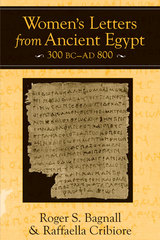 Women's Letters from Ancient Egypt, 300 BC-AD 800
Roger S. Bagnall and Raffaella Cribiore
University of Michigan Press, 2015 When historians study the women of Egyptian, Greek, and Roman antiquity, they are generally dependent on ancient literature written by men. But women themselves did write and dictate. And only in their own private letters can we discover unmediated expression of their authentic experiences.
More than three hundred letters written in Greek and Egyptian by women in Egypt in the millennium from Alexander the Great to the Arab conquest survive on papyrus and pottery. These letters were written by women from various walks of life and shed light on critical social aspects of life in Egypt after the pharaohs. Roger S. Bagnall and Raffaella Cribiore collect the best preserved of these letters in translation and set them in their paleographic, linguistic, social, and economic contexts. As a result, Women's Letters from Ancient Egypt, 300 BC-AD 800, provides a sense that these women's habits, interests, and means of expression were a product more of their social and economic standing than of specifically gender-related concerns or behavior.
Women's Letters from Ancient Egypt, 300 BC-AD 800, takes the reader through theoretical discussions about the handwriting and language of the letters, the education and culture of the writers, and the writers' everyday concerns and occupations, as well as comparing these letters to similar letters from later historical periods. For each letter, discussion focuses on handwriting, language, and content; in addition, numerous illustrations help the reader to see the variety of handwritings. Most of this material has never been available in English translation before, and the letters have never previously been considered as a single body of material.
Women's Life-Writing: Finding Voice, Building Community
Linda S. Coleman
University of Wisconsin Press, 1997 These essays offer readers vivid and varied evidence of the female response to recurring attempts by culture to artificially limit identity along the gendered lines of private and public experience. Calling on voices both familiar and little known, British and American, black and white, young and old, the essayists explore how women used life-writing as a means of both self-understanding and connection to a community of sympathetic others, real or imagined.
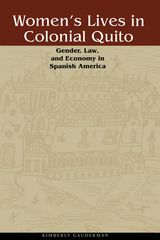 Women's Lives in Colonial Quito: Gender, Law, and Economy in Spanish America
By Kimberly Gauderman
University of Texas Press, 2003 What did it mean to be a woman in colonial Spanish America? Given the many advances in women's rights since the nineteenth century, we might assume that colonial women had few rights and were fully subordinated to male authority in the family and in society—but we'd be wrong. In this provocative study, Kimberly Gauderman undermines the long-accepted patriarchal model of colonial society by uncovering the active participation of indigenous, mestiza, and Spanish women of all social classes in many aspects of civil life in seventeenth-century Quito. Gauderman draws on records of criminal and civil proceedings, notarial records, and city council records to reveal women's use of legal and extra-legal means to achieve personal and economic goals; their often successful attempts to confront men's physical violence, adultery, lack of financial support, and broken promises of marriage; women's control over property; and their participation in the local, interregional, and international economies. This research clearly demonstrates that authority in colonial society was less hierarchical and more decentralized than the patriarchal model suggests, which gave women substantial control over economic and social resources.
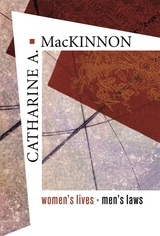 Women’s Lives, Men’s Laws
Catharine A. MacKinnon
Harvard University Press, 2007 In the past twenty-five years, no one has been more instrumental than Catharine MacKinnon in making equal rights real for women. As Peter Jennings once put it, more than anyone else in legal studies, she "has made it easier for other women to seek justice." This collection, the first since MacKinnon's celebrated Feminism Unmodified appeared in 1987, brings together previously uncollected and unpublished work in the national arena from 1980 to the present, defining her clear, coherent, consistent approach to reframing the law of men on the basis of the lives of women.
By making visible the deep gender bias of existing law, MacKinnon has recast legal debate and action on issues of sex discrimination, sexual abuse, prostitution, pornography, and racism. The essays in this volume document and illuminate some of the momentous and ongoing changes to which this work contributes; the recognition of sexual harassment, rape, and battering as claims for sexual discrimination; the redefinition of rape in terms of women's actual experience of sexual violation; and the reframing of the pornography debate around harm rather than morality. The perspectives in these essays have played an essential part in changing American law and remain fundamental to the project of building a sex-equal future.
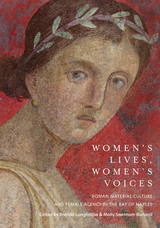 Women's Lives, Women's Voices: Roman Material Culture and Female Agency in the Bay of Naples
Edited by Brenda Longfellow and Molly Swetnam-Burland
University of Texas Press, 2021 Literary evidence is often silent about the lives of women in antiquity, particularly those from the buried cities of Pompeii and Herculaneum. Even when women are considered, they are often seen through the lens of their male counterparts. In this collection, Brenda Longfellow and Molly Swetnam-Burland have gathered an outstanding group of scholars to give voice to both the elite and ordinary women living on the Bay of Naples before the eruption of Vesuvius. Using visual, architectural, archaeological, and epigraphic evidence, the authors consider how women in the region interacted with their communities through family relationships, businesses, and religious practices, in ways that could complement or complicate their primary social roles as mothers, daughters, and wives. They explore women-run businesses from weaving and innkeeping to prostitution, consider representations of women in portraits and graffiti, and examine how women expressed their identities in the funerary realm. Providing a new model for studying women in the ancient world, Women’s Lives, Women’s Voices brings to light the day-to-day activities of women of all classes in Pompeii and Herculaneum.
 Women's Movement in international perspective: Latin America and Beyond
Maxine Molyneux
University of London Press, 2003 The essays collected in this volume reflect the remarkable analytical scope and geographical range of their author, engaging fully with the debates over the politics of gender as well as appraising women's movements in widely varying societies. Most chapters deal directly with Latin American issues and experiences, including anarchist feminism in the nineteenth-century Argentina; the politics of gender and those of abortion in Sandinista Nicaragua; the role of the official Cuban women's organisation in the 1990s; and appraisals of the relations between gender, citizenship and state formation in twentieth-century Latin America. '... the work of an original and candid scholar ... Enlightening and refreshing, this book should be read by anyone concerned with contemporary questions of citizenship and social membership' Matthew C. Gutman, Brown University 'This is an important book about big concepts - political interests, social activism in authoritarian states, revolution, and democracy' L. D. Bush, University of Pittsburgh '... this book definitively distinguishes Molyneux as one of the leading contemporary thinkers in the field' Sylvia Chant, London School of Economics
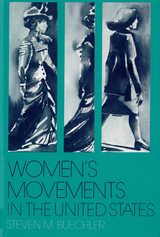 Women's Movements in the United States: Woman Suffrage, Equal Rights, and Beyond
Buechler, Steven M
Rutgers University Press, 1990 Steven Buecheler has written a comparative sociological analysis of the woman suffrage movement (1840s-1920) and the contemporary women’s movement (1960s to the present). His identification of similarities and differences between these movements reveals persistent feminist issues over time as well as the distinctive concerns of each movement in the sociohistorical context. Buecheler compares these two movements in terms of their origins, organizations, ideologies, class and racial diversities, countermovement’s, and outcomes. He uses resource mobilization theory. Buecheler explains why women’s movements arise, the forms of organization they adopt, the diversity of ideologies they espouse, and the class and racial composition of women’s movements. He also helps us to understand the roots of countermovements, as well as the mixture of successes and failures that has characterized both past and present women’s movements. While recognizing both the setbacks and the victories of the contemporary movement, Buecheler identifies grounds for relative optimism about the lasting consequences of this ongoing mobilization. Buechler also explores the complex relationship between social change and social movements. Rapid change both enables and constricts the potential for collective action, which in turn reshapes social structure, By studying long-lived moments in a comparative framework, Buechler sheds light on the broader dialectical relation between agency and structure that is embodied in movement efforts at social change.
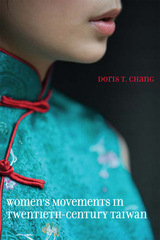 Women's Movements in Twentieth-Century Taiwan
Doris Chang
University of Illinois Press, 2008 This book is the first in English to consider women's movements and feminist discourses in twentieth-century Taiwan. Doris T. Chang examines the way in which Taiwanese women in the twentieth century selectively appropriated Western feminist theories to meet their needs in a modernizing Confucian culture. She illustrates the rise and fall of women's movements against the historical backdrop of the island's contested national identities, first vis-à-vis imperial Japan (1895-1945) and later with postwar China (1945-2000). In particular, during periods of soft authoritarianism in the Japanese colonial era and late twentieth century, autonomous women's movements emerged and operated within the political perimeters set by the authoritarian regimes. Women strove to replace the "Good Wife, Wise Mother" ideal with an individualist feminism that meshed social, political, and economic gender equity with the prevailing Confucian family ideology. However, during periods of hard authoritarianism from the 1930s to the 1960s, the autonomous movements collapsed. The particular brand of Taiwanese feminism developed from numerous outside influences, including interactions among an East Asian sociopolitical milieu, various strands of Western feminism, and even Marxist-Leninist women's liberation programs in Soviet Russia. Chinese communism appears not to have played a significant role, due to the Chinese Nationalists' restriction of communication with the mainland during their rule on post-World War II Taiwan. Notably, this study compares the perspectives of Madame Chiang Kai-shek, whose husband led as the president of the Republic of China on Taiwan from 1949 to 1975, and Hsiu-lien Annette Lu, Taiwan's vice president from 2000 to 2008. Delving into period sources such as the highly influential feminist monthly magazine Awakening as well as interviews with feminist leaders, Chang provides a comprehensive historical and cross-cultural analysis of the struggle for gender equality in Taiwan.
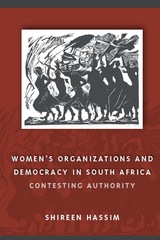 Women's Organizations and Democracy in South Africa: Contesting Authority
Shireen Hassim
University of Wisconsin Press, 2006
The transition to democracy in South Africa was one of the defining events in twentieth-century political history. The South African women’s movement is one of the most celebrated on the African continent. Shireen Hassim examines interactions between the two as she explores the gendered nature of liberation and regime change. Her work reveals how women’s political organizations both shaped and were shaped by the broader democratic movement. Alternately asserting their political independence and giving precedence to the democratic movement as a whole, women activists proved flexible and remarkably successful in influencing policy. At the same time, their feminism was profoundly shaped by the context of democratic and nationalist ideologies. In reading the last twenty-five years of South African history through a feminist framework, Hassim offers fresh insights into the interactions between civil society, political parties, and the state. Hassim boldly confronts sensitive issues such as the tensions between autonomy and political dependency in feminists’ engagement with the African National Congress (ANC) and other democratic movements, and black-white relations within women’s organizations. She offers a historically informed discussion of the challenges facing feminist activists during a time of nationalist struggle and democratization.
Winner, Victoria Schuck Award for best book on women and politics, American Political Science Association
“An exceptional study, based on extensive research. . . . Highly recommended.”—Choice
“A rich history of women’s organizations in South African . . . . [Hassim] had observed at first hand, and often participated in, much of what she described. She had access to the informants and private archives that so enliven the narrative and enrich the analysis. She provides a finely balanced assessment.”—Gretchen Bauer, African Studies Review
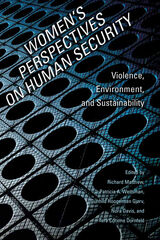 Women’s Perspectives on Human Security: Violence, Environment, and Sustainability
Richard Matthew; Patricia A. Weitsman; Gunhild Hoogensen Gjørv; Nora Davis; Tera Dornfeld
Ohio University Press, 2020 Violent conflict, climate change, and poverty present distinct threats to women worldwide. Importantly, women are leading the way creating and sharing sustainable solutions. Women’s security is a valuable analytical tool as well as a political agenda insofar as it addresses the specific problems affecting women’s ability to live dignified, free, and secure lives. First, this collection focuses on how conflict impacts women’s lives and well-being, including rape and gendered constructions of ethnicity, race, and religion. The book’s second section looks beyond the scope of large-scale violence to examine human security in terms of environmental policy, food, water, health, and economics. Multidisciplinary in scope, these essays from new and established contributors draw from gender studies, international relations, criminology, political science, economics, sociology, biological and ecological sciences, and planning.
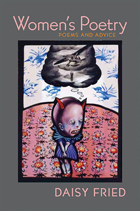 Women's Poetry: Poems and Advice
Daisy Fried
University of Pittsburgh Press, 2013 Daisy Fried’s third book of poetry is a book of unsettling, unsettled Americans. Fried finds her Americans everywhere, watching Henry Kissinger leave the Louvre, trapped on a Tiber bridge by a crowd of neo-fascist thugs, yearning outside a car detailing garage for a car lit underneath by neon lavender, riding the train with Princeton seniors who have been rejected by recession-bound Wall Street, feeding stray cats drunk at midnight, bitching at her mother in the labor room, shopping with wide-bodied hunters for deer-dismembering band saws in the world’s largest supplier of seasonal camouflage, cursing her cell phone and husband at eighty-five miles an hour, hiding behind the mask of an advice column to proclaim Charles Bukowski “America’s greatest poetess.” There is nothing like this book, because there is nothing in it but America. No comfort, no consolation, no life-affirming pats on the back, no despair about God, no fear or acceptance of death, no irrational exuberance, no guilt or weariness, no misery even in the middle of personal and political crisis. Plenty of humor and plenty of seriousness. Joy. And a new kind of poetry: not nice, but rich and real.
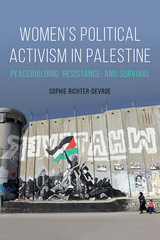 Women's Political Activism in Palestine: Peacebuilding, Resistance, and Survival
Sophie Richter-Devroe
University of Illinois Press, 2018 During the last twenty years, Palestinian women have practiced creative and often informal everyday forms of political activism. Sophie Richter-Devroe reflects on their struggles to bring about social and political change. Richter-Devroe's ethnographic approach draws from revealing in-depth interviews and participant observation in Palestine. The result: a forceful critique of mainstream conflict resolution methods and the failed woman-to-woman peacebuilding projects so lauded around the world. The liberal faith in dialogue as core of "the political" and the assumption that women's "nurturing" nature makes them superior peacemakers, collapse in the face of past and ongoing Israeli state violences. Instead, women confront Israeli settler colonialism directly and indirectly in their popular and everyday acts of resistance. Richter-Devroe's analysis zooms in on the intricate dynamics of daily life in Palestine, tracing the emergent politics that women articulate and practice there. In shedding light on contemporary gendered "politics from below" in the region, the book invites a rethinking of the workings, shapes, and boundaries of the political.
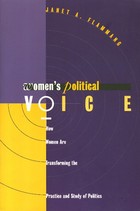 Women's Political Voice: How Women are Transforming the Practice and Study of Politics
Janet Flammang
Temple University Press, 1997 Since the 1960s, academic and activist women have been challenging the conventional wisdom about political life and the study of politics. Organizing her book by standard political concepts -- the mobilization and participation of the mass public; the recruitment, policy preferences, and political style of public officials; agenda-setting; and coalition-building -- Janet Flammang subjects these concepts to a withering feminist critique based on the insights of feminist theory and the empirical evidence of hundred of studies of women's distinctive politics.
This book accomplishes four major tasks:
*It provides a comprehensive critical history of the changing research on politics and the changing nature of the political science discipline.
*It analyzes the course of women's political activism in the United States.
*It develops a rich case study of women's politics in Northern California's Silicon Valley, an area once nicknamed "the feminist capital of the nation."
*It examines coalitions and divisions within the women's movement with sensitivity to minority politics, as in the chapter subtitled, "The Hard Work of Sisterhood."
Women's Political Voice record the transformative politics of the women's movement and, simultaneously, urges political scientists to ask new questions and to adopt new methods.
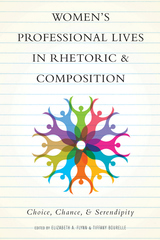 Women's Professional Lives in Rhetoric and Composition: Choice, Chance, and Serendipity
Edited by Elizabeth A. Flynn and Tiffany Bourelle
Ohio State University Press, 2018
This collection, edited by Elizabeth A. Flynn and Tiffany Bourelle, contributes to the valuable work of chronicling the professional and personal lives of women in academia. Through its line-up of contributors from diverse backgrounds, locations, and career paths, Women’s Professional Lives in Rhetoric and Composition showcases the voices of multiple scholars occupying a multitude of different roles in the profession: from prestigious professors emeritae and endowed chairs to assistant professors starting their careers to an independent scholar to part-time faculty.
The collection sets itself apart from other volumes not just in its diversity of perspectives but also by speaking against linear stories of success in the profession—sharing moments of shame and failure, showing how the personal and professional often intertwine and influence one another, and ultimately revealing how choice, chance, serendipity, and kairos have all played a role in the lives of its contributors. In focusing on this convergence, Women’s Professional Lives in Rhetoric and Composition offers a more nuanced picture of the professional and intellectual trajectories of women in rhetoric and composition.
 Women’s Quest for Economic Equality
Victor R. Fuchs
Harvard University Press, 1988 It may seem to the casual observer that women have made striking gains in their quest for equality with men since the early 1960s. But have they really improved their lot? Are they really better off economically? In this clear, compact, and controversial book Victor Fuchs makes plain that except for women who are young, white, unmarried, and well educated, today’s women have not gained economically at all relative to men. He shows that although women are earning a lot more, they have much less leisure time than they used to while men have more; the decline of marriage has made women more dependent on their own income, and their share of financial responsibility for children has grown.
Scrutinizing this relative lack of progress and the reasons for the persistence of occupational segregation, the infamous wage gap, and the unequal responsibility for housework and childcare, Fuchs shows that the standard explanations—discrimination and exploitation by employers—are not the most important causes. Women’s weaker economic position results primarily from conflicts between career and family, conflicts that are stronger for women than for men. Fuchs assembles many different kinds of evidence to suggest that, on average, women feel a stronger desire for children than men do, and have a greater concern for their welfare after they are born. This desire and concern create an economic disadvantage for women, even women who never marry and never have children.
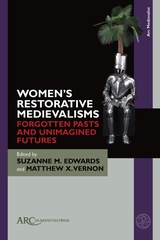 Women’s Restorative Medievalisms: Forgotten Pasts and Unimagined Futures
Suzanne M. Edwards
Arc Humanities Press, 2024 Revising the histories of medievalism—the processes by which the Middle Ages are reimagined in later moments to varied political, social, and cultural ends—is critical to the field’s turn away from its oppressive roots and towards a richer conception of the past. Grounded in intersectional feminist interpretive frameworks, Women’s Restorative Medievalisms examines how contemporary women writers engage the premodern past to animate intertwined histories of oppression and resistance in service of visionary futures. These medievalisms create temporal dialogue between the past and the present to restore the voices of women who have been overlooked in medieval studies and medievalism studies. The book’s contemporary focus will appeal both to students and medieval studies scholars who seek to understand the field’s present value amid the backlash of patriarchal, white supremacist power.
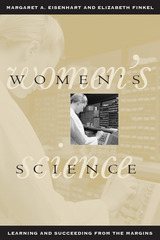 Women's Science: Learning and Succeeding from the Margins
Margaret A. Eisenhart and Elizabeth Finkel
University of Chicago Press, 1998 Are there any places where women succeed in science? Numerous studies in recent years have documented and lamented a gender gap in science and engineering. From elementary school through college, women's interest in science steadily declines, and as adults, they are less likely to pursue careers in science-related fields.
Women's Science offers a dramatic counterpoint not only to these findings but also to the related, narrow assumption that "real science" only occurs in research and laboratory investigation. This book describes women engaged with science or engineering at the margins: an innovative high school genetics class; a school-to-work internship for prospective engineers, an environmental action group, and a nonprofit conservation agency. In these places—where people use or rely on science for public, social, or community purposes—the authors found a remarkably high proportion of women. Moreover, these women were successful at learning and using technical knowledge, they advanced in roughly equal percentages to men, and they generally enjoyed their work.
Yet, even in these more marginal workplaces, women had to pay a price. Working outside traditional laboratories, they enjoy little public prestige and receive significantly less financial compensation. Although most employers claimed to treat men and women equally, women in fact only achieved success when they acted like male professionals.
Women's Science is an original and provocative contribution that expands our conception of scientific practice as it reconfigures both women's role in science and the meaning of science in contemporary society.
Women's Seclusion and Men's Honor: Sex Roles in North India, Bangladesh, and Pakistan
David G. Mandelbaum
University of Arizona Press, 1988 Hindus and Muslims of northern South Asia share the belief that women should seclude themselves from men and that men must supervise the conduct of women so that their behavior will not sully men's honor. While these practices are well known, until now no book has attempted to explain why they are so crucially important to so many people.
Women's Speaking Justified and Other Pamphlets
Margaret Fell
Iter Press, 2018 Margaret Fell (1614–1702), one of the co-founders of the Society of Friends and a religious activist, was a prolific writer and distributor of Quaker pamphlets. This volume offers eight texts that span her writing career and represent her range of writing: autobiography, epistle or public letter, examination or record of a trial, letter to the king, and argument for women’s preaching. These selections also document Fell’s contributions to Friends’ theology, exemplify seventeenth-century women’s English-language literacy, illustrate Fell’s theories of biblical reading, and exhibit the common qualities of Quaker rhetoric.
The Other Voice in Early Modern Europe - The Toronto Series, volume 65
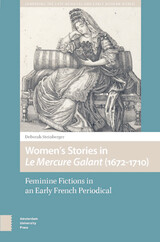 Women’s Stories in Le Mercure Galant (1672-1710): Feminine Fictions in an Early French Periodical
Deborah Steinberger
Amsterdam University Press, 2024 What do women want to read? Jean Donneau de Visé, the founder and editor in chief of Le Mercure Galant, one of France’s first newspapers, was arguably the first journalist to ask this question and to recognize and capitalize upon the influence of female readers and their social networks. By including “custom content” and performing the act of listening to women, Le Mercure Galant situates itself as an intermediary, using the nouvelle as a vehicle to amplify women’s voices. These fictions, presented as true stories, depict incidents and situations that women often bore silently in real life: domestic violence, romantic betrayal, dishonor, or simply loneliness. By publishing these stories alongside its chronicle of historic events, the Mercure lends credence and prestige to depictions of the private life of anonymous individuals, exploiting the ostensibly anodyne genre of “women’s fiction” to disseminate modern ideas about women’s agency.
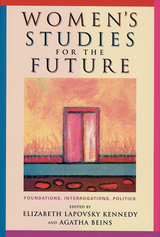 Women's Studies for the Future: Foundations, Interrogations, Politics
Edited by Elizabeth Lapovsky Kennedy and Agatha Beins
Rutgers University Press, 2005 Established as an academic field in the 1970s, women’s studies is a relatively young but rapidly growing area of study. Not only has the number of scholars working in this subject expanded exponentially, but women’s studies has become institutionalized, offering graduate degrees and taking on departmental status in many colleges and universities. At the same time, this field—formed in the wake of the feminist movement—is finding itself in a precarious position in what is now often called a “post-feminist” society. This raises challenging issues for faculty, students, and administrators. How must the field adjust its goals and methods to continue to affect change in the future? Bringing together essays by newcomers as well as veterans to the field, this essential volume addresses timely questions including: - Without a unitary understanding of the subject, woman, what is the focus of women’s studies?
- How can women’s studies fulfill the promise of interdisciplinarity?
- What is the continuing place of activism in women’s studies?
- What are the best ways to think about, teach, and act upon the intersections of race, class, gender, disability, nation, and sexuality?
Offering innovative models for research and teaching and compelling new directions for action, Women’s Studies for the Future ensures the continued relevance and influence of this developing field.
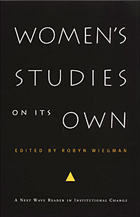 Women's Studies on Its Own: A Next Wave Reader in Institutional Change
Robyn Wiegman, ed.
Duke University Press, 2002 "We thought the study of women would be a temporary phase; eventually we would all go back to our disciplines."—Gloria Bowles, From the Afterword Since the 1970s, Women's Studies has grown from a volunteerist political project to a full-scale academic enterprise. Women's Studies on Its Own assesses the present and future of the field, demonstrating how institutionalization has extended a vital, ongoing intellectual project for a new generation of scholars and students. Women’s Studies on Its Own considers the history, pedagogy, and curricula of Women’s Studies programs, as well as the field’s relation to the managed university. Both theoretically and institutionally grounded, the essays examine the pedagogical implications of various divisions of knowledge—racial, sexual, disciplinary, geopolitical, and economic. They look at the institutional practices that challenge and enable Women’s Studies—including interdisciplinarity, governance, administration, faculty review, professionalism, corporatism, fiscal autonomy, and fiscal constraint. Whether thinking about issues of academic labor, the impact of postcolonialism on Women’s Studies curricula, or the relation between education and the state, the contributors bring insight and wit to their theoretical deliberations on the shape of a transforming field.
Contributors. Dale M. Bauer, Kathleen M. Blee, Gloria Bowles, Denise Cuthbert, Maryanne Dever, Anne Donadey, Laura Donaldson, Diane Elam, Susan Stanford Friedman, Judith Kegan Gardiner, Inderpal Grewal, Sneja Gunew, Miranda Joseph, Caren Kaplan, Rachel Lee, Devoney Looser, Jeanette McVicker, Minoo Moallem, Nancy A. Naples, Jane O. Newman, Lindsey Pollak, Jean C. Robinson, Sabina Sawhney, Jael Silliman, Sivagami Subbaraman, Robyn Warhol, Marcia Westkott, Robyn Wiegman, Bonnie Zimmerman
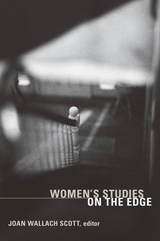 Women's Studies on the Edge
Joan Wallach Scott, ed.
Duke University Press, 2008 At many universities, women’s studies programs have achieved department status, establishing tenure-track appointments, graduate programs, and consistent course enrollments. Yet, as Joan Wallach Scott notes in her introduction to this collection, in the wake of its institutional successes, women’s studies has begun to lose its critical purchase. Feminism, the driving political force behind women’s studies, is often regarded as an outmoded political position by many of today’s students, and activism is no longer central to women’s studies programs on many campuses. In Women’s Studies on the Edge, leading feminist scholars tackle the critical, political, and institutional challenges that women’s studies has faced since its widespread integration into university curricula. The contributors to Women’s Studies on the Edge embrace feminism not as a set of prescriptions but as a critical stance, one that seeks to interrogate and disrupt prevailing systems of gender. Refusing to perpetuate and protect orthodoxies, they ask tough questions about the impact of institutionalization on the once radical field of women’s studies; about the ongoing difficulties of articulating women’s studies with ethnic, queer, and race studies; and about the limits of liberal concepts of emancipation for understanding non-Western women. They also question the viability of continuing to ground women’s studies in identity politics authorized by personal experience. The multiple interpretations in Women’s Studies on the Edge sometimes overlap and sometimes stand in opposition to one another. The result is a collection that embodies the best aspects of critique: the intellectual and political stance that the contributors take to be feminism’s ethos and its aim. Contributors
Wendy Brown
Beverly Guy-Sheftall
Evelynn M. Hammonds
Saba Mahmood
Biddy Martin
Afsaneh Najmabadi
Ellen Rooney
Gayle Salamon
Joan Wallach Scott
Robyn Wiegman
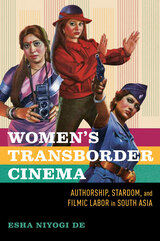 Women's Transborder Cinema: Authorship, Stardom, and Filmic Labor in South Asia
Esha Niyogi De
University of Illinois Press, 2024 Can we write women’s authorial roles into the history of industrial cinema in South Asia? How can we understand women’s creative authority and access to the film business infrastructure in this postcolonial region? Esha Niyogi De draws on rare archival and oral sources to explore these questions from a uniquely comparative perspective, delving into examples of women holding influential positions as stars, directors, and producers across the film industries in India, Pakistan, and Bangladesh. De uses film tropes to examine the ways women directors and film entrepreneurs claim creative control within the contexts of anti-colonial nationalism and global capitalism. The region’s fictional cinemas have become staging grounds for postcolonialism, with colonial and local hierarchies merged into new imperial formations. De’s analysis shows how the gendered intersections of inequity and opportunity shape women’s fiction filmmaking while illuminating the impact of state and market formations on the process. Innovative and essential, Women’s Transborder Cinema examines the works of South Asia’s women filmmakers from a regional perspective.
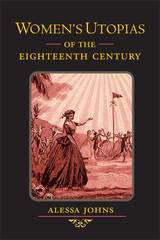 Women's Utopias of the Eighteenth Century
Alessa Johns
University of Illinois Press, 2003 No human society has ever been perfect, a fact that has led thinkers as far back as Plato and St. Augustine to conceive of utopias both as a fanciful means of escape from an imperfect reality and as a useful tool with which to design improvements upon it.
The most studied utopias have been proposed by men, but during the eighteenth century a group of reform-oriented female novelists put forth a series of work that expressed their views of, and their reservations about, ideal societies. In Women's Utopias of the Eighteenth Century, Alessa Johns examines the utopian communities envisaged by Mary Astell, Sarah Fielding, Mary Hamilton, Sarah Scott, and other writers from Britain and continental Europe, uncovering the ways in which they resembled--and departed from--traditional utopias.
Johns demonstrates that while traditional visions tended to look back to absolutist models, women's utopias quickly incorporated emerging liberal ideas that allowed far more room for personal initiative and gave agency to groups that were not culturally dominant, such as the female writers themselves. Women's utopias, Johns argues, were reproductive in nature. They had the potential to reimagine and perpetuate themselves.
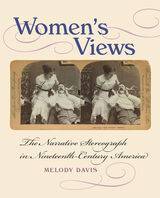 Women's Views: The Narrative Stereograph in Nineteenth-Century America
Melody Davis
University of Massachusetts Press, 2015 Few American homes were without a stereoscope in the 1890s. The immersive, three-dimensional experience of stereographs was among the most popular parlor entertainments of the late nineteenth and early twentieth centuries, a period of more than forty years.
In this remarkable book, Melody Davis analyzes the underexamined genre of narrative stereoviews and their audiences. Because stereoviews were created for and marketed primarily to middle-class women in domestic settings, Davis argues that they represent one of the best sources for addressing the flow of historical change in women's lives. By analyzing dozens of stereoviews—including depictions of gender stereotypes, power dynamics, comical or sentimental situations, and scenes of both serious and playful innuendo—Davis energetically spins a broad history of the real social, sexual, and economic changes in the lives of American women. Her close reading and rich contextualization of these compelling vernacular objects bridge the gaps between the private viewing that took place within the home and the outside world of consumption and power that women were gradually entering.
Illustrated with more than one hundred stereographs and including a three-dimensional viewer, this book will appeal to readers with an interest in U.S. women's history, the history of photography, visual and cultural studies, and American studies.
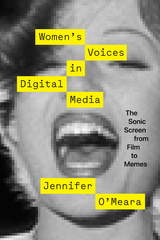 Women's Voices in Digital Media: The Sonic Screen from Film to Memes
Jennifer O'Meara
University of Texas Press, 2022 2023 Publication Award Honorable Mention, British Association for Film, Television and Screen Studies
An examination of the sound and silence of women in digital media.
In today’s digital era, women’s voices are heard everywhere—from smart home devices to social media platforms, virtual reality, podcasts, and even memes—but these new forms of communication are often accompanied by dated gender politics. In Women’s Voices in Digital Media, Jennifer O’Meara dives into new and well-established media formats to show how contemporary screen media and cultural practices police and fetishize women’s voices, but also provide exciting new ways to amplify and empower them. As she travels through the digital world, O’Meara discovers newly acknowledged—or newly erased—female voice actors from classic films on YouTube, meets the AI and digital avatars in Her and The Congress, and hears women’s voices being disembodied in new ways via podcasts and VR voice-overs. She engages with dialogue that is spreading with only the memory of a voice, looking at how popular media like Clueless and The Simpsons have been mined for feminist memes, and encounters vocal ventriloquism on RuPaul’s Drag Race that queers and valorizes the female voice. Through these detailed case studies, O’Meara argues that the digital proliferation of screens alters the reception of sounds as much as that of images, with substantial implications for women’s voices.
 Women’s War: Fighting and Surviving the American Civil War
Stephanie McCurry
Harvard University Press, 2019 Winner of the PEN Oakland–Josephine Miles Award
“A stunning portrayal of a tragedy endured and survived by women.”
—David W. Blight, author of Frederick Douglass
“Readers expecting hoop-skirted ladies soothing fevered soldiers’ brows will not find them here…Explodes the fiction that men fight wars while women idle on the sidelines.”
—Washington Post
The idea that women are outside of war is a powerful myth, one that shaped the Civil War and still determines how we write about it today. Through three dramatic stories that span the war, Stephanie McCurry invites us to see America’s bloodiest conflict for what it was: not just a brothers’ war but a women’s war.
When Union soldiers faced the unexpected threat of female partisans, saboteurs, and spies, long held assumptions about the innocence of enemy women were suddenly thrown into question. McCurry shows how the case of Clara Judd, imprisoned for treason, transformed the writing of Lieber’s Code, leading to lasting changes in the laws of war. Black women’s fight for freedom had no place in the Union military’s emancipation plans. Facing a massive problem of governance as former slaves fled to their ranks, officers reclassified black women as “soldiers’ wives”—placing new obstacles on their path to freedom. Finally, McCurry offers a new perspective on the epic human drama of Reconstruction through the story of one slaveholding woman, whose losses went well beyond the material to intimate matters of family, love, and belonging, mixing grief with rage and recasting white supremacy in new, still relevant terms.
“As McCurry points out in this gem of a book, many historians who view the American Civil War as a ‘people’s war’ nevertheless neglect the actions of half the people.”
—James M. McPherson, author of Battle Cry of Freedom
“In this brilliant exposition of the politics of the seemingly personal, McCurry illuminates previously unrecognized dimensions of the war’s elemental impact.”
—Drew Gilpin Faust, author of This Republic of Suffering
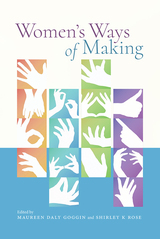 Women’s Ways of Making
Maureen Daly Goggin
Utah State University Press, 2021 Women’s Ways of Making draws attention to material practices—those that the hands perform—as three epistemologies—an episteme, a techne, and a phronesis—that together give pointed consideration to making as a rhetorical embodied endeavor. Combined, these epistemologies show that making is a form of knowing that (episteme), knowing how (techne), and wisdom-making (phronesis).
Since the Enlightenment, embodied knowledge creation has been overlooked, ignored, or disparaged as inferior to other forms of expression or thinking that seem to leave the material world behind. Privileging the hand over the eye, as the work in this collection does, thus problematizes the way in which the eye has been co-opted by thinkers as the mind’s tool of investigation. Contributors to this volume argue that other senses—touch, taste, smell, hearing—are keys to knowing one’s materials. Only when all these ways of knowing are engaged can making be understood as a rhetorical practice.
In Women’s Ways of Making contributors explore ideas of making that run the gamut from videos produced by beauty vloggers to zine production and art programs at women’s correctional facilities. Bringing together senior scholars, new voices, and a fresh take on material rhetoric, this book will be of interest to a broad range of readers in composition and rhetoric.
Contributors: Angela Clark-Oates, Jane L. Donawerth, Amanda Ellis, Theresa M. Evans, Holly Fulton-Babicke, Bre Garrett, Melissa Greene, Magdelyn Hammong Helwig, Linda Hanson, Jackie Hoermann, Christine Martorana, Aurora Matzke, Jill McCracken, Karen S. Neubauer, Daneryl Nier-Weber, Sherry Rankins-Roberson, Kathleen J. Ryan, Rachael Ryerson, Andrea Severson, Lorin Shellenberger, Carey Smitherman-Clark, Emily Standridge, Charlese Trower, Christy I. Wenger, Hui Wu, Kathleen Blake Yancey
Women's Wisconsin: From Native Matriarchies to the New Millennium
Edited by Genevieve G. McBride
Wisconsin Historical Society Press, 2005 Women's Wisconsin: From Native Matriarchies to the New Millennium, a women's history anthology published on Women's Equality Day 2005, made history as the first single-source history of Wisconsin women. This unique tome features dozens of excerpts of articles as well as primary sources, such as women's letters, reminiscences, and oral histories, previously published over many decades in the Wisconsin Magazine of History and other Wisconsin Historical Society Press publications. Editor and historian Genevieve G. McBride provides the contextual commentary and overarching analysis to make the history of Wisconsin women accessible to students, scholars, and lifelong learners.
 Women's Words: Essay on French Singularity
Mona Ozouf
University of Chicago Press, 1997 In her controversial book Women's Words, Mona Ozouf argues that French feminism lacks the rancor and resentment of its counterparts in England and America and explains why this placid, even timid brand of feminism is uniquely French.
Ozouf uses the woman's portrait, traditionally a male genre, to portray ten French women of letters whose lives span the period from the eve of the French Revolution to the resurgence of the feminist movement in the late twentieth century. She studies the letters and memoirs of Mme du Deffand, Mme de Charrière, Mme Roland, Mme de Staël, Mme de Rémusat, George Sand, Hubertine Auclert, Colette, Simone Weil, and Simone de Beauvoir. Rejecting the male constructions of femininity typical of this genre, Ozouf restores these women's voices in order to study their own often-conflicted attitudes toward education, marriage, motherhood, sex, and work, as well as the dilemma of writing in a literary world that did not support women's work.
Ozouf claims that a uniquely French feminism informed these women's lives, one that stems from the great egalitarian spirit of the French Revolution and is more tolerant of difference than its American counterparts. She argues that as a result, modern French culture has not isolated women from men in the same ways as American and British cultures have done.
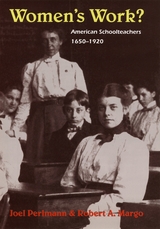 Women's Work?: American Schoolteachers, 1650-1920
Joel Perlmann and Robert A. Margo
University of Chicago Press, 2001 American schoolteaching is one of few occupations to have undergone a thorough gender shift yet previous explanations have neglected a key feature of the transition: its regional character. By the early 1800s, far higher proportions of women were teaching in the Northeast than in the South, and this regional difference was reproduced as settlers moved West before the Civil War. What explains the creation of these divergent regional arrangements in the East, their recreation in the West, and their eventual disappearance by the next century?
In Women's Work the authors blend newly available quantitative evidence with historical narrative to show that distinctive regional school structures and related cultural patterns account for the initial regional difference, while a growing recognition that women could handle the work after they temporarily replaced men during the Civil War helps explain this widespread shift to female teachers later in the century. Yet despite this shift, a significant gender gap in pay and positions remained. This book offers an original and thought-provoking account of a remarkable historical transition.
 Women’s Work and Family Values, 1920–1940
Winifred D. Wandersee
Harvard University Press, 1981 Changing occupational patterns during the 1920s and 1930s opened up new opportunities to women in a variety of fields. In a fresh approach to the history of women, Winifred D. Wandersee explores how the family, work, and family values took on new shapes during this critical period. By the 1920s, the increase in consumerism, encouraged by high production and mass advertising, had redefined the idea of an acceptable standard of living. For some, it was not possible to achieve this standard on the income of one wage earner, and women's employment outside the home became increasingly necessary. For most women, Wandersee shows, this trend to outside work was a reflection not of feminist ideology but of women's commitment to family values.
Wandersee finds that economic demands exerted even less influence on women than did societal and domestic demands. The proportion of married women who were gainfully employed during the 1920s, for example, was never more than 25 percent of all wives. Those who adapted to a joint economic and domestic role usually did so because their need was great, or their employment opportunity was favorable, or their value system stressed the material comfort of the family at the expense of traditional concepts of women's roles. Wandersee relates the experiences of these last two groups of women to the long-range changes in values and life-styles that have culminated in the American family of today.
 Women’s Work: How Culinary Cultures Shaped Modern Spain
Rebecca Ingram
Vanderbilt University Press, 2022 Winner, Gourmand World Cookbook Awards, 2023—Best Women of the World Book, Spain
We are living in a moment in which famous chefs, Michelin stars, culinary techniques, and gastronomical accolades attract moneyed tourists to Spain from all over the world. This has prompted the Spanish government to declare its cuisine as part of Spanish patrimony. Even with this widespread global attention, we know little about how Spanish cooking became a litmus test for demonstrating Spain's modernity and, relatedly, the roles ascribed to the modern Spanish women responsible for daily cooking.
Efforts to articulate a new, modern Spain infiltrated writing in multiple genres and media. Women's Work offers a sharp reading of diverse sources, placed in their historical context, that yields a better understanding of the roles of food within an inherently uneven modernization process. Further, author Rebecca Ingram's perceptive critique reveals the paradoxical messages women have navigated, even in texts about a daily practice that shaped their domestic and work lives. Women's Work posits that this is significant because of the degree to which domestic activities, including cooking, occupied women's daily lives, even while issues like their fitness as citizens and participation in the public sphere were hotly debated. At the same time, progressive intellectuals from diverse backgrounds began to invoke Spanish cooking and eating as one measure of Spanish modernity.
Women's Work shows how culinary writing engaged these debates and reached women at the site of much of their daily labor—the kitchen—and, in this way, shaped their thinking about their roles in modernizing Spain.
Women's Work in Post-war Italy: An Oral and Filmic History
Flora Derounian
Intellect Books, 2023 A vivid, engaging, and cross-disciplinary account of women’s work in postwar Italy.
Women’s Work in Post-War Italy explores women’s labor following World War II and Italy’s new republic. War and national reconstruction have typically been framed as masculine undertakings in Italy, but Flora Derounian shifts that frame to investigate the labor that Italian women were doing at this critical time of political, social, and ideological change, as well as how it was viewed by society and by women workers themselves. Drawing on original oral history interviews, Derounian compares women’s own words with the very different ways they were pictured in film, giving voice to the under-represented, and exposing the profound difference that work made to women’s lives.
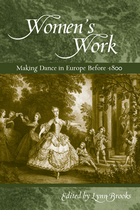 Women’s Work: Making Dance in Europe before 1800
Edited by Lynn Matluck Brooks
University of Wisconsin Press, 2007 Like the history of women, dance has been difficult to capture as a historical subject. Yet in bringing together these two areas of study, the nine internationally renowned scholars in this volume shed new and surprising light on women’s roles as performers of dance, choreographers, shapers of aesthetic trends, and patrons of dance in Italy, France, England, and Germany before 1800.
Through dance, women asserted power in spheres largely dominated by men: the court, the theater, and the church. As women’s dance worlds intersected with men’s, their lives and visions were supported or opposed, creating a complex politics of creative, spiritual, and political expression. From a women’s religious order in the thirteenth-century Low Countries that used dance as a spiritual rite of passage to the salon culture of eighteenth-century France where dance became an integral part of women’s cultural influence, the writers in this volume explore the meaning of these women’s stories, performances, and dancing bodies, demonstrating that dance is truly a field across which women have moved with finesse and power for many centuries past.
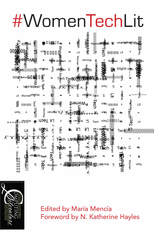 #WomenTechLit
Maria Mencia
West Virginia University Press, 2017 This book of electronic literature (e-lit) brings together pioneering and emerging women whose work has earned international impact and scholarly recognition. It extends a historical critical overview of the state of the field from the diverse perspectives of twenty-eight worldwide contributors. It illustrates the authors’ scholarly interests through discussion of creative practice as research, historical accounts documenting collections of women’s new media art and literary works, and art collectives. It also covers theoretical approaches and critical overviews, from feminist discourses to close readings and “close-distant-located readings” of pertinent works in the field. #WomenTechLit includes authors from Latin America, Russia, Austria, Ireland, Spain, France, Italy, Portugal, Slovakia, Czech Republic, Poland, United Kingdom, Australia, Canada, and the US.
This volume will be a useful reference for educators, practice-based researchers, and scholars, not only of electronic literature but also in the adjacent areas of language art, new media art practices, digital humanities, and feminist studies.
 Wonder Cabinet: Poems
David Barber
Northwestern University Press, 2006 Taking its inspiration from the wonder and curiosity cabinets of the late Renaissance, David Barber's second book of poems offers itself up as an eclectic gallery of natural marvels and historical gleanings. Creation is Barber's chief subject and he often concentrates on how human nature is constantly seeking to impose definition and significance upon the natural world. These are poems that meditate on all manner of wondrous phenomena: falconry and funiculars; the knotted quipus of the Inca Empire and the tulip mania of the Dutch Golden Age; the lore and language of field guides, epitaphs, beekeeping, and seafaring; the ghostly vestiges of the La Brea tar pits and the ancient library of Alexandria. Then, in an innovative suite of "New World Sutras" composed in haiku stanzas, Barber riffs on the American genius for self-invention and epic ambition by calling up landmark figures such as Audubon, Houdini, Babe Ruth, and Buster Keaton. With a formal and verbal precision that is rife with agile music, avid wordplay, and mordant wit, Barber delves deeply into the realms of both natural history and popular culture.
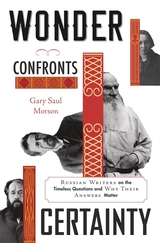 Wonder Confronts Certainty: Russian Writers on the Timeless Questions and Why Their Answers Matter
Gary Saul Morson
Harvard University Press, 2023 An Air Mail Editor’s Pick
A Spectator Book of the Year
“[A] masterly panorama of classic Russian literature and its hinterland of ideas.”—Wall Street Journal
“Wise and authoritative…As the best Russian literature teaches, the emancipation of the human will from all limits and restraints is the path of individual and collective perdition. We should all be grateful to Gary Saul Morson for drawing out that indispensable insight with such lucidity, erudition, and grace.” —Daniel J. Mahoney, New Criterion
“Wonder Confronts Certainty is Gary Saul Morson's magnum opus.” —Joseph Epstein, Washington Free Beacon
Since the age of Tolstoy, Dostoevsky, and Chekhov, Russian literature has posed questions about good and evil, moral responsibility, and human freedom with a clarity and intensity found nowhere else. In this wide-ranging meditation, Gary Saul Morson delineates intellectual debates that have coursed through two centuries of Russian writing, as the greatest thinkers of the empire and then the Soviet Union enchanted readers with their idealism, philosophical insight, and revolutionary fervor.
Morson describes the Russian literary tradition as an argument between a radical intelligentsia that uncompromisingly followed ideology down the paths of revolution and violence, and writers who probed ever more deeply into the human condition. Exploring apologia for bloodshed, Morson adapts Mikhail Bakhtin’s concept of the non-alibi—the idea that one cannot escape or displace responsibility for one’s actions. And, throughout, Morson isolates a characteristic theme of Russian culture: how the aspiration to relieve profound suffering can lead to either heartfelt empathy or bloodthirsty tyranny.
What emerges is a contest between unyielding dogmatism and open-minded dialogue, between heady certainty and a humble sense of wonder at the world’s elusive complexity—a thought-provoking journey into inescapable questions.
 Wonder Shows: Performing Science, Magic, and Religion in America
Nadis, Fred
Rutgers University Press, 2005 Imagine a stage full of black cats emitting electrical sparks, a man catching bullets with his teeth, or an evangelist jumping on a transformer to shoot bolts of lightning through his fingertips. These and other wild schemes were part of the repertoire of showmen who traveled from city to city, making presentations that blended science with myth and magic.
In Wonder Shows, Fred Nadis offers a colorful history of these traveling magicians, inventors, popular science lecturers, and other presenters of “miracle science” who revealed science and technology to the public in awe-inspiring fashion. The book provides an innovative synthesis of the history of performance with a wider study of culture, science, and religion from the antebellum period to the present.
It features a lively cast of characters, including electrical “wizards” Nikola Tesla and Thomas Alva Edison, vaudeville performers such as Harry Houdini, mind readers, UFO cultists, and practitioners of New Age science. All of these performers developed strategies for invoking cultural authority to back their visions of science and progress. The pseudo-science in their wonder shows helped promote a romantic worldview that called into question the absolute authority of scientific materialism while reaffirming the importance of human spirituality. Nadis argues that the sensation that these entertainers provided became an antidote to the alienation and dehumanization that accompanied the rise of modern America.
Although most recent defenders of science are prone to reject wonder, considering it an ally of ignorance and superstition, Wonder Shows demonstrates that the public’s passion for magic and meaning is still very much alive. Today, sales continue to be made and allegiances won based on illusions that products are unique, singular, and at best, miraculous. Nadis establishes that contemporary showmen, corporate publicists, advertisers, and popular science lecturers are not that unlike the magicians and mesmerists of years ago.
The Wonder Team: The True Story of the Incomparable 1927 New York Yankees
Leo Trachtenberg
University of Wisconsin Press, 1995 The Wonder Team describes in detail the year 1927, when the New York Yankees became the Wonder Team—probably baseball’s best team ever. That club included Babe Ruth, Lou Gehrig, Waite Hoyt, Tony Lazzeri, Earle Combs, Herb Pennock, Bob Meusel, and Wilcy Moore. Also part of the narrative are recollections by owner Colonel Jacob Ruppert, manager Miller Huggins, business manager Ed Barrow, and scout Paul Krichell. No participant of that great team is omitted.
In detailing the events leading to the 1927 World Series, Leo Trachtenberg weaves players’ profiles and histories along with those of the Yankee owner, management, coaches, scouts, trainer, and batboy/mascot. Also included are 1927 statistics and photos from Yankee archives.
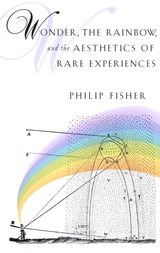 Wonder, the Rainbow, and the Aesthetics of Rare Experiences
Philip Fisher
Harvard University Press, 1998 Why pause and study this particular painting among so many others ranged on a gallery wall? Wonder, which Descartes called the first of the passions, is at play; it couples surprise with a wish to know more, the pleasurable promise that what is novel or rare may become familiar. This is a book about the aesthetics of wonder, about wonder as it figures in our relation to the visual world and to rare or new experiences.
In three instructive instances--a pair of paintings by Cy Twombly, the famous problem of doubling the area of a square, and the history of attempts to explain rainbows--Philip Fisher examines the experience of wonder as it draws together pleasure, thinking, and the aesthetic features of thought. Through these examples he places wonder in relation to the ordinary and the everyday as well as to its opposite, fear. The remarkable story of how rainbows came to be explained, fraught with errors, half-knowledge, and incomplete understanding, suggests that certain knowledge cannot be what we expect when wonder engages us. Instead, Fisher argues, a detailed familiarity, similar to knowing our way around a building or a painting, is the ultimate meeting point for aesthetic and scientific encounters with novelty, rare experiences, and the genuinely new.
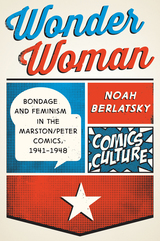 Wonder Woman: Bondage and Feminism in the Marston/Peter Comics, 1941-1948
Berlatsky, Noah
Rutgers University Press, 2015 William Marston was an unusual man—a psychologist, a soft-porn pulp novelist, more than a bit of a carny, and the (self-declared) inventor of the lie detector. He was also the creator of Wonder Woman, the comic that he used to express two of his greatest passions: feminism and women in bondage.
Comics expert Noah Berlatsky takes us on a wild ride through the Wonder Woman comics of the 1940s, vividly illustrating how Marston’s many quirks and contradictions, along with the odd disproportionate composition created by illustrator Harry Peter, produced a comic that was radically ahead of its time in terms of its bold presentation of female power and sexuality. Himself a committed polyamorist, Marston created a universe that was friendly to queer sexualities and lifestyles, from kink to lesbianism to cross-dressing. Written with a deep affection for the fantastically pulpy elements of the early Wonder Womancomics, from invisible jets to giant multi-lunged space kangaroos, the book also reveals how the comic addressed serious, even taboo issues like rape and incest.
Wonder Woman: Bondage and Feminism in the Marston/Peter Comics 1941-1948 reveals how illustrator and writer came together to create a unique, visionary work of art, filled with bizarre ambition, revolutionary fervor, and love, far different from the action hero symbol of the feminist movement many of us recall from television.
 Wonder Woman: New edition with full color illustrations
Berlatsky, Noah
Rutgers University Press, 2017 William Marston was an unusual man—a psychologist, a soft-porn pulp novelist, more than a bit of a carny, and the (self-declared) inventor of the lie detector. He was also the creator of Wonder Woman, the comic that he used to express two of his greatest passions: feminism and women in bondage.
Comics expert Noah Berlatsky takes us on a wild ride through the Wonder Woman comics of the 1940s, vividly illustrating how Marston’s many quirks and contradictions, along with the odd disproportionate composition created by illustrator Harry Peter, produced a comic that was radically ahead of its time in terms of its bold presentation of female power and sexuality. Himself a committed polyamorist, Marston created a universe that was friendly to queer sexualities and lifestyles, from kink to lesbianism to cross-dressing. Written with a deep affection for the fantastically pulpy elements of the early Wonder Woman comics, from invisible jets to giant multi-lunged space kangaroos, the book also reveals how the comic addressed serious, even taboo issues like rape and incest.
Wonder Woman: Bondage and Feminism in the Marston/Peter Comics 1941-1948 reveals how illustrator and writer came together to create a unique, visionary work of art, filled with bizarre ambition, revolutionary fervor, and love, far different from the action hero symbol of the feminist movement many of us recall from television.
Wonderful Things from 400 Years of Collecting: The Bodleian Library 1602-2002
Edited by the Bodleian Library
Bodleian Library Publishing, 2002 A timeless selection of Wonderful Things, this book highlights the tremendous range of the Bodleian Library's collections. From the sixth-century Laudian Acts—a manuscript probably used by Bede himself—to modern treasures such as one of Tolkein's own illustrations for TheHobbit, the objects chosen show the extent, variety, and quality of the Library's holdings and how they came to the Bodleian. Each work is sumptuously displayed in full-page color with facing-page descriptions. Collectively, they offer a fascinating glimpse into the principles, history, and future of collecting by a world-class institution.
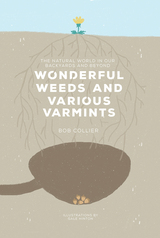 Wonderful Weeds and Various Varmints: The Natural World in Our Backyards and Beyond
Bob Collier
University of Tennessee Press, 2019 Immersed in a world of sprawling concrete and hyper-advancing technology, we can begin to see the natural landscape as a thing of the past. All the more reason, suggests Bob Collier, a self-professed nature lover, to set out on the often-unrecognized bridge that still connects human beings with their natural surroundings. In Wonderful Weeds and Various Varmints, readers encounter a myriad of stories as if on a leisurely stroll through the seasons. Each chapter in this collection revives articles from Collier’s beloved, syndicated “Nature Notes” column written for East Tennessee’s Shopper News. From birding with his spouse to sharing family lore from childhood, Collier by turns informs and enchants as we learn his way of looking at the world.
In the section on spring, he reflects on days gardening with his grandmother, birding in the mountains, and what it means to meet and appreciate the gifts the season brings. Summer launches a warmer section of stories as Collier discusses the sounds of summer, firefly watching, and the fascinating insects all around. The colors of autumn are described with admiration and wonder as Collier relates stories about a sneaky groundhog, creatures of the night, and the marvels of pumpkin season. The book concludes with the winter season, Collier's chilly outdoor adventures, and a rejuvenating crystalline view of the world.
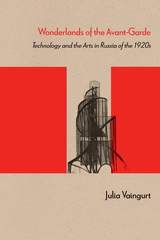 Wonderlands of the Avant-Garde: Technology and the Arts in Russia of the 1920s
Julia Vaingurt
Northwestern University Press, 2013 Longlist finalist, 2015 Historia Nova Prize for Best Book on Russian Intellectual and Cultural History
In postrevolutionary Russia, as the Soviet government pursued rapid industrialization, avant-garde artists declared their intent to serve the nascent state and to transform life in accordance with their aesthetic designs. Despite their utilitarian intentions, however, most avant-gardists rarely created works regarded as practical instruments of societal transformation. Exploring this paradox, Vaingurt claims that the artists’ fusion of technology and aesthetics prevented their creations from being fully conscripted into the arsenal of political hegemony. The purposes of avant-garde technologies, she contends, are contemplative rather than constructive. Looking at Meyerhold’s theater, Tatlin’s and Khlebnikov’s architectural designs, Mayakovsky’s writings, and other works from the period, Vaingurt offers an innovative reading of an exceptionally complex moment in the formation of Soviet culture.
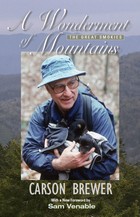 A Wonderment Of Mountains: The Great Smokies
Carson Brewer
University of Tennessee Press, 2003
“Carson Brewer at his absolute best.” – Sam Venable
Carson Brewer on…
Mountain places
Snow was nice and crunchy underfoot. Not crunchy like peanuts or cornflakes. Rather, it was a silky whispery crunchy.
Mountain plants
You can bury your nose deep in the cool violet bed and smell the mix of life and death while pondering the unceasing cycle of each into the other.
Mountain People
Lem Ownby…has plowed oxen, mules, and horses on the forty-four acre farm on Jakes Creek. But he has never owned or driven an automobile.
The Author: Carson Brewer was a reporter and columnist for more than forty years. His columns on conservation issues and on the Great Smoky Mountains earned him the E.J. Meeman Conservation Award (twice) from the Scripps-Howard Foundation, the Golden Press Card award from the Society of Professional Journalists (which also named a scholarship in his honor in 1984), and the inaugural Lifetime Achievement Award from the Knoxville Writers Guild. He died on January 15, 2003.
 Wonders and Rarities: The Marvelous Book That Traveled the World and Mapped the Cosmos
Travis Zadeh
Harvard University Press, 2023 “Like al-Qazwīnī himself, Travis Zadeh has written a deliciously baggy tome, full of delights and diversions in its tour of the cosmic horizons. This is a book to get lost in, whether one wants to or not.” —Nile Green, Los Angeles Review of Books
“As Zadeh concludes, reformers and modernists have closed the rich and varied archive revealed in Wonders and Rarities…In this beautifully written and engaging text, Zadeh takes his readers back to the world of surprise and enchantment that preceded this closure.”—Malise Ruthven, Financial Times
“This book about a book, like the book it describes, is a rare and marvelous thing.” —Justin Marozzi, The Spectator
During the thirteenth century, the Persian naturalist and judge Zakariyyāʾ Qazwīnī authored what became one of the most influential works of natural history in the world: Wonders and Rarities. Exploring the dazzling movements of the stars above, the strange minutiae of the minerals beneath the earth, and everything in between, Qazwīnī offered a captivating account of the cosmos. Wonders and Rarities inspired generations as it traveled through madrasas and courts, unveiling the magical powers of nature. But Qazwīnī’s compendium eventually came to stand as a strange, if beautiful, emblem of medieval ignorance.
Restoring Qazwīnī to his place as a herald of the rare and astonishing, Travis Zadeh dramatically revises the place of wonder in the history of Islamic philosophy, science, and literature. Wonder provided an enduring way to conceive of the world—at once constituting an affective reaction, an aesthetic stance, a performance of piety, and a cognitive state. Yet through the course of colonial modernity, Qazwīnī’s universe of marvels helped advance the notion that Muslims lived in a timeless world of superstition and enchantment, unaware of the western hemisphere or the earth’s rotation around the sun.
Recovering Qazwīnī’s ideas and his reception, Zadeh invites us into a forgotten world of thought, where wonder mastered the senses through the power of reason and the pleasure of contemplation.
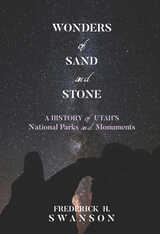 Wonders of Sand and Stone: A History of Utah's National Parks and Monuments
Frederick H. Swanson
University of Utah Press, 2020 From Delicate Arch to the Zion Narrows, Utah’s five national parks and eight national monuments are home to some of America’s most amazing scenic treasures, created over long expanses of geologic time. In Wonders of Sand and Stone, Frederick H. Swanson traces the recent human story behind the creation of these places as part of a protected mini-empire of public lands.
Drawing on extensive historical research, Swanson presents little-known accounts of people who saw
in these sculptured landscapes something worth protecting. Readers are introduced to the region’s early explorers, scientists, artists, and travelers as well as the local residents and tourism promoters who worked with the National Park Service to build the system of parks and monuments we know today, when Utah’s national parks and monuments face multiple challenges from increased human use and from development outside their borders. As scientists continue to uncover the astonishing diversity of life in these desert and mountain landscapes, and archaeologists and Native Americans document their rich cultural resources, the management of these federal lands remains critically important. Swanson provides us with a detailed and timely background to advance and inform discussions about what form that management should take.
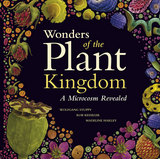 Wonders of the Plant Kingdom: A Microcosm Revealed
Wolfgang Stuppy, Rob Kesseler, and Madeline Harley
University of Chicago Press, 2015 Compared to the obvious complexity of animals, plants at a glance seem relatively simple in form. But that simplicity is deceptive: the plants around us are the result of millennia of incredible evolutionary adaptations that have allowed them to survive, and thrive, under wildly changing conditions and in remarkably specific ecological niches. Much of this innovation, however, is invisible to the naked eye.
With Wonders of the Plant Kingdom, the naked eye gets an unforgettable boost. A stunning collaboration between science and art, this gorgeous book presents hundreds of images of plants taken with a scanning electron microscope and hand-colored by artist Rob Kesseler to reveal the awe-inspiring adaptations all around us. The surface of a peach—with its hairs, or trichomes, and sunken stomata, or breathing pores—emerges from these pages in microscopic detail. The dust-like seeds of the smallest cactus species in the world, the Blossfeldia liliputana—which measures just twelve millimeters fully grown—explode here with form, color, and character, while the flower bud of a kaffir lime, cross-sectioned, reveals the complex of a flower bud with the all-important pistil in the center.
Accompanying these extraordinary images are up-to-date explanations of the myriad ways that these plants have ensured their own survival—and, by proxy, our own. Gardeners and science buffs alike will marvel at this wholly new perspective on the world of plant diversity.
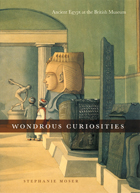 Wondrous Curiosities: Ancient Egypt at the British Museum
Stephanie Moser
University of Chicago Press, 2006 When the British Museum opened its doors more than two centuries ago, scores of visitors waited eagerly outside for a first glimpse of ancient relics from Egypt, Greece, and Rome. Even today, in this age of satellite television and high-speed Internet access, museums maintain their unique allure, continuing to play a vital role in connecting us with little-known terrains and the deep mysteries of our historical past. That’s because, as Stephanie Moser argues in Wondrous Curiosities, museum displays don’t just transmit knowledge—they actually create it.
Based on her exploration of the British Museum’s world-famous collection of Egyptian antiquities, this pioneering study reveals the powerful role of museums in shaping our understanding of science, culture, and history. Drawing on guidebooks and archival documents, Moser demonstrates that this British exhibition of ancient Egyptian artifacts was central to the way we came to define the remarkable society that produced them. And she also reveals the specific strategies—such as using pattern and symmetry, juxtaposing different types of objects, and singling out particular items—that the British Museum and others used, and still use, in representing the past. With a wealth of illustrations and a detailed account of how the museum acquired and displayed its Egyptian collections, Wondrous Curiosities will fascinate curators and scholars of British history, Egyptology, art history, archaeology, and the history of science.
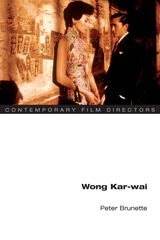 Wong Kar-wai
Peter Brunette
University of Illinois Press, 2005 Called the leading heir to the great directors of post-WWII Europe and lavished with awards, Wong Kar-wai has redefined perceptions of Hong Kong's film industry. Wong's visual brilliance and emphasis on atmosphere over action have set him apart from peers while earning him an admiring international audience. In the Mood for Love regularly appears on lists of the twenty-first century's greatest films while critics and filmgoers recognize works like Chungking Express and Happy Together as modern classics. Peter Brunette describes the ways in which Wong's supremely haunting visual films create a new form of cinema by telling a story with stunning, suggestive visual images and audio tracks rather than character, dialogue, and plot. As he shows, Wong's early background in genre film offers fascinating insights on his more studied later works. He also delves into Wong's perennial themes of time, love, and loss and examines the political implications of his films, especially concerning the handover of former British colony Hong Kong to the People's Republic of China.
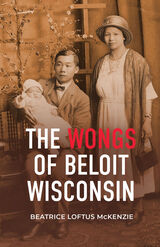 The Wongs of Beloit, Wisconsin
Beatrice McKenzie
University of Wisconsin Press, 2022 Through family interviews, original photographs, and national records, Beatrice Loftus McKenzie traces the many lives of a resilient multigenerational family whose experiences parallel the complicated relationship between America and China in the twentieth century. In the early 1900s, Charles Wong moved from Guangdong Province to the United States and opened the Nan King Lo Restaurant in Beloit, Wisconsin. Soon after, his wife Yee Shee joined him to build the "Chop House" into a local institution and start a family. When the Great Depression hit, the Wongs shared what they had with their neighbors. In 1938, Charles's tragic murder left Yee Shee to raise their seven children—ages one through fourteen—on her own. Rather than return to family property in Hong Kong, she and her children stayed in Beloit, buoyed by the friendships they had forged during the worst parts of the 1930s.
The Wongs thrived in Beloit despite facing racism and classism, embracing wartime opportunities, education, love, and careers within the U. S. McKenzie's collaboration with descendent Mary Wong Palmer reveals a poignant story of Chinese immigrant life in the Upper Midwest that adds a much-needed Wisconsin perspective to existing literature by and about Asian Americans.
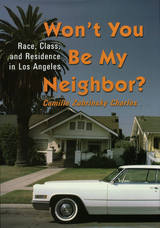 Won't You be My Neighbor: Race, Class, and Residence in Los Angeles
Camille Zubrinksy Charles
Russell Sage Foundation, 2006 Los Angeles is a city of delicate racial and ethnic balance. As evidenced by the 1965 Watts violence, the 1992 Rodney King riots, and this year's award-winning film Crash, the city's myriad racial groups coexist uneasily together, often on the brink of confrontation. In fact, Los Angeles is highly segregated, with racial and ethnic groups clustered in homogeneous neighborhoods. These residential groupings have profound effects on the economic well-being and quality of life of residents, dictating which jobs they can access, which social networks they can tap in to, and which schools they attend. In Won't You Be My Neighbor?, sociologist Camille Zubrinsky Charles explores how modern racial attitudes shape and are shaped by the places in which people live. Using in-depth survey data and information from focus groups with members of L.A.'s largest racial and ethnic groups, Won't You Be My Neighbor? explores why Los Angeles remains a segregated city. Charles finds that people of all backgrounds prefer both racial integration and a critical mass of same-race neighbors. When asked to reveal their preferred level of racial integration, people of all races show a clear and consistent order of preference, with whites considered the most highly desired neighbors and blacks the least desirable. This is even true among recent immigrants who have little experience with American race relations. Charles finds that these preferences, which are driven primarily by racial prejudice and minority-group fears of white hostility, taken together with financial considerations, strongly affect people's decisions about where they live. Still, Charles offers reasons for optimism: over time and with increased exposure to other racial and ethnic groups, people show an increased willingness to live with neighbors of other races. In a racially and ethnically diverse city, segregated neighborhoods can foster distrust, reinforce stereotypes, and agitate inter-group tensions. Won't You Be My Neighbor? zeroes in on segregated neighborhoods to provide a compelling examination of the way contemporary racial attitudes shape, and are shaped by, the places where we live.
Wood Engraving: The Art of Wood Engraving and Relief Engraving
Barry Moser
Brandeis University Press, 2021 Written and illustrated by master wood engraver Barry Moser, this primer on the art of wood engraving is filled with valuable knowledge including how to prepare a printing block; how to think in the medium’s properties of line, shape, and ink; and how to transfer a drawing onto a block. It also offers practical advice on which tools to use for a project and which ink works best. A highly illustrated guide to this art form, Wood Engraving will be useful to experienced and beginner engravers alike. This book features stunning examples of Moser’s art and skill to admire and inspire.
Wood Pole Overhead Lines
Brian Wareing
The Institution of Engineering and Technology, 2005 Wood Pole Overhead Lines provides comprehensive coverage of medium voltage wood pole overhead lines. It includes guidance on the planning and mechanical design of overhead lines, as well as details of statutory requirements and the latest UK and European standards affecting UK design of wood pole networks, Sag/tension calculations are explained, and details of the latest work on safe design tension limits to avoid conductor fatigue from vibration are included. The basic characteristics of bare and covered conductors are discussed as well as upgrading possibilities, condition assessment and the latest work on 'health indices' for overhead lines. Other topics include wood pole decay and mitigation methods, maintenance schedules, live line working and basic lightning protection.
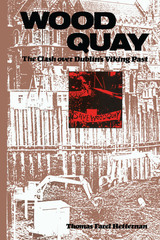 Wood Quay: The Clash over Dublin's Viking Past
By Thomas F. Heffernan
University of Texas Press, 1988 An urban archaeologist working anywhere in the world can imagine this scenario: armed with a small digging tool and a soft brush, the archaeologist stands at a freshly cut trench facing off a construction crew driving bulldozers. At stake is the past—the discovery and preservation of our history. Across the gap is the future—progress and new buildings for a modern world. A battle ensues. It happened in Dublin in the early 1960s. While investigating and salvage-excavating the site for a new municipal office complex, archaeologists made one of the most important and exciting discoveries in Ireland’s history. Buried beneath the present-day city of Dublin was the original Viking settlement from the ninth or tenth century, in an extraordinary state of preservation: houses, undecayed wood, domestic furniture, jewelry, toys, tools, works of art, coins, plots, paths, a veritable map of the medieval town. Because of its impressive size and state of preservation, the site known as Wood Quay was not an “ordinary” kind of archaeological discovery, nor was the battle that followed typical. What made Wood Quay unique was that its defender was not the archaeological authority—the National Museum of Ireland—as is usually the case, but rather a spontaneously formed movement of thousands of Dubliners. While the museum was ready to turn the site over to the city’s developers after routine salvage work had been done, a group of prominent literary and political figures seized Wood Quay, holding it for almost a month and preventing bulldozers from moving in. Realizing the significance of the find, the people of Dublin took charge and kept the builders at bay for eight years. At the same time, they were able to press the museum to return to its archaeological work there. Archaeologists ultimately were able to complete good maps of a large portion of the site and recover between one and two million artifacts. Today, the completed Dublin civic office complex stands on the Wood Quay site, fully landscaped and without a trace of the archaeological gold mine that once lay buried below. What does remain, however, is the memory of the powerful impact the citizens of Dublin had in demanding and establishing the connection through Wood Quay to their medieval roots. Of interest to archaeologists, historic preservationists, and city planners alike, this fascinating and beautifully written account will also engage the general reader.
Wood Works
Edwin Bingham
Oregon State University Press, 1997
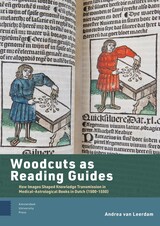 Woodcuts as Reading Guides: How Images Shaped Knowledge Transmission in Medical-Astrological Books in Dutch (1500-1550)
Andrea van Leerdam
Amsterdam University Press, 2024 In the first half of the sixteenth century, the Low Countries saw the rise of a lively market for practical and instructive books that targeted non-specialist readers. This study shows how woodcuts in vernacular books on medicine and astrology fulfilled important rhetorical functions in knowledge communication. These images guided readers’ perceptions of the organisation, visualisation, and reliability of knowledge. Andrea van Leerdam uncovers the assumptions and intentions of book producers to which images testify, and shows how actual readers engaged with these illustrated books. Drawing on insights from the field of information design studies, she scrutinises the books’ material characteristics, including their lay-outs and traces of use, to shed light on the habits and interests of early modern readers. She situates these works in a culture where medicine and astrology were closely interwoven in daily life and where both book producers and readers were exploring the potential of images.
Wooden Ritual Artifacts from Chaco Canyon, New Mexico: The Chetro Ketl Collection
R. Gwinn Vivian, Dulce N. Dodgen, and Gayle H. Hartmann
University of Arizona Press, 1978 The Anthropological Papers of the University of Arizona is a peer-reviewed monograph series sponsored by the School of Anthropology. Established in 1959, the series publishes archaeological and ethnographic papers that use contemporary method and theory to investigate problems of anthropological importance in the southwestern United States, Mexico, and related areas.
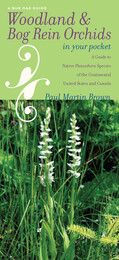 Woodland and Bog Rein Orchids in Your Pocket: A Guide to Native Platanthera Species of the Continental United States and Canada
Paul Martin Brown
University of Iowa Press, 2010 Native orchids are increasingly threatened by pressure from population growth and development but, nonetheless, still present a welcome surprise to observant hikers in every state and province. Compiled and illustrated by long-time orchid specialist Paul Martin Brown, this pocket guide to the woodland and bog rein orchids forms part of a series that will cover all the wild orchids of the continental United States and Canada.
Brown provides a description, general distributional information, time of flowering, and habitat requirements for each species as well as a complete list of hybrids and the many different growth and color forms that can make identifying orchids so challenging. For the woodland and bog rein orchids, which make up some of the most delicate and subtly colored of all wild orchids, he includes information on nineteen species, four subspecies and varieties, and seven hybrids.
The genus Platanthera is the largest genus of orchids to be found in North America north of Mexico; the woodland and bog rein orchids comprise a significant group of species found throughout much of temperate U.S. and Canada. The luminously green rein orchids, so-called because of the resemblance of some of the flowers to the reins used on horses, are especially abundant in rich woodlands, wetlands, and bogs in the more northerly and cooler habitats. Most are easy to identify based upon their general appearance, range, and time of flowering. Answering three simple questions—when, where, and how does it grow?—and comparing the living plants with the striking photos in this backpack-friendly laminated guide and the information in the simple key should enable both professional and amateur naturalists to achieve the satisfaction of identifying a specific orchid.
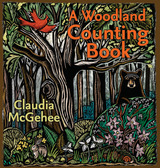 A Woodland Counting Book
Claudia McGehee
University of Iowa Press, 2006 Towering oak and hickory woodlands once fringed the tallgrass prairie of the Midwest. In a wondrous mixture of plant and animal life, big mammals like black bears and cougars thrived alongside gray foxes and ovenbirds. But as more people arrived, the woodlands, like the tallgrass prairie, were cleared with amazing speed. Now only small portions of this special habitat remain, and many of its animals and plants are endangered or extinct. Despite the great loss, many people are working to restore and enlarge what remains so that woodlands can continue to support a rich wildlife community. And so we can all enjoy a walk in the woods. A Woodland Counting Book helps children learn about the woodland family. From one splendid white oak to fifty busy carpenter ants, illustrator Claudia McGehee counts the wonders of the woodlands in this beautifully illustrated companion to her previous children’s book, A Tallgrass Prairie Alphabet. As she follows spring to summer to fall to winter, returning at the book’s end to springtime in “one woodland community,” McGehee introduces more than twenty species of plants and animals. From the white oaks that tower overhead to shelter the woodland citizens to the delicate showy lady’s-slipper orchid and from the barred owls with distinctive hoots and calls to tiny evening bats which roost in hollow trees, we meet a wild world of woodland life. We find luna moths and serviceberries, shagbark hickories, blue spotted salamanders, wild turkeys, red squirrels, orchard orioles, and a host of other familiar and not-so-familiar plants and animals. A section of woodland notes gives common and scientific names of and interesting information about all featured species. These vibrantly colored scratchboard illustrations reveal the beauty of our woodland communities, guiding nature lovers and children of all ages through a much-loved landscape.
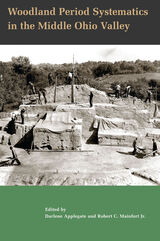 Woodland Period Systematics in the Middle Ohio Valley
Edited by Darlene Applegate and Robert C. Mainfort Jr.
University of Alabama Press, 2005 This collection provides a comprehensive vocabulary for defining the cultural manifestation of the term “Woodland” The Middle Ohio Valley is an archaeologically rich region that stretches from southeastern Indiana, across southern Ohio and northeastern Kentucky, and into northwestern West Virginia. In this area are some of the most spectacular and diverse Woodland Period archaeological sites in North America, but these sites and their rich cultural remains do not fit easily into the traditional Southeastern classification system. This volume, with contributions by most of the senior researchers in the field, represents an important step toward establishing terminology and taxa that are more appropriate to interpreting cultural diversity in the region.
The important questions are diverse. What criteria are useful in defining periods and cultural types, and over what spatial and temporal boundaries do those criteria hold? How can we accommodate regional variation in the development and expression of traits used to delineate periods and cultural types? How does the concept of tradition relate to periods and cultural types? Is it prudent to equate culture types with periods? Is it prudent to equate archaeological cultures with ethnographic cultures? How does the available taxonomy hinder research? Contributing authors address these issues and others in the context of their Middle Ohio Valley Woodland Period research
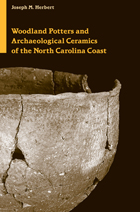 Woodland Potters and Archaeological Ceramics of the North Carolina Coast
Joseph M. Herbert
University of Alabama Press, 2009 The first comprehensive study of the meaning of pottery as a social activity in coastal North Carolina.
Pottery types, composed of specific sets of attributes, have long been defined for various periods and areas of the Atlantic coast, but their relationships and meanings have not been explicitly examined. In exploring these relationships for the North Carolina coast, this work examines the manner in which pottery traits cross-cut taxonomic types, tests the proposition that communities of practice existed at several scales, and questions the fundamental notion of ceramic types as ethnic markers.
Ethnoarchaeological case studies provide a means of assessing the mechanics of how social structure and gender roles may have affected the transmission of pottery-making techniques and how socio-cultural boundaries are reflected in the distribution of ceramic traditions. Another very valuable source of information about past practices is replication experimentation, which provides a means of understanding the practical techniques that lie behind the observable traits, thereby improving our understanding of how certain techniques may have influenced the transmission of traits from one potter to another. Both methods are employed in this study to interpret the meaning of pottery as an indicator of social activity on the North Carolina coast.
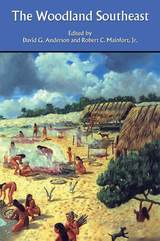 The Woodland Southeast
Edited by David G. Anderson and Robert C. Mainfort
University of Alabama Press, 2002 This collection presents, for the first time, a much-needed synthesis of the major research themes and findings that characterize the Woodland Period in the southeastern United States.
The Woodland Period (ca. 1200 B.C. to A.D. 1000) has been the subject of a great deal of archaeological research over the past 25 years. Researchers have learned that in this approximately 2000-year era the peoples of the Southeast experienced increasing sedentism, population growth, and organizational complexity. At the beginning of the period, people are assumed to have been living in small groups, loosely bound by collective burial rituals. But by the first millennium A.D., some parts of the region had densely packed civic ceremonial centers ruled by hereditary elites. Maize was now the primary food crop. Perhaps most importantly, the ancient animal-focused and hunting-based religion and cosmology were being replaced by solar and warfare iconography, consistent with societies dependent on agriculture, and whose elites were increasingly in competition with one another. This volume synthesizes the research on what happened during this era and how these changes came about while analyzing the period's archaeological record.
In gathering the latest research available on the Woodland Period, the editors have included contributions from the full range of specialists working in the field, highlighted major themes, and directed readers to the proper primary sources. Of interest to archaeologists and anthropologists, both professional and amateur, this will be a valuable reference work essential to understanding the Woodland Period in the Southeast.
 Woodrow Wilson and the American Myth in Italy: Culture, Diplomacy, and War Propaganda
Daniela Rossini
Harvard University Press, 2008 In 1918, Woodrow Wilson’s image as leader of the free world and the image of America as dispenser of democracy spread throughout Italy, filling an ideological void after the rout of Caporetto and diverting attention from a hapless ruling class. Wilson’s popularity depended not only on the modernity of his democratic message, but also on a massive propaganda campaign he conducted across Italy, using as conduits the American Red Cross, the YMCA, and the Committee on Public Information.
American popularity, though, did not ensure mutual understanding. The Paris peace negotiations revealed the limits of policies on both sides, illustrated most clearly in Wilson’s disastrous direct appeal to the Italian public. The estranged countries pulled inward, the Americans headed toward isolationism, the Italians toward fascism.
Rossini sets the Italian-American political confrontation within the full context of the two countries’ cultural perceptions of each other, different war experiences, and ideas about participatory democracy and peace. A stellar example of the new international history, this timely book highlights the impact of American ideology and sense of mission in the world.
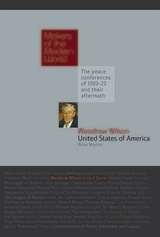 Woodrow Wilson: USA
Brian Morton
Haus Publishing, 2008 Woodrow Wilson (1856-1924). It is September 1919 - a meeting hall in a small mid-Western city. A thin man is speaking to a sceptical audience about peace. He has already met the city fathers and has been warned that 'out here' what happens in Europe means very little. Even the late war scarcely impinged on the place, though it had been recognised that it hadn't been altogether good for trade and one or two local boys had died on the fields of France in the very last days of the conflict. The speaker was obviously impassioned, with a preacher's cadence to his voice, and particularly so when he promoted the idea of an international League of Nations to guarantee future peace and ensure that the war into which America had been lured in 1917 really was 'a war to end all wars'. It is noticed that the man is sweating and pale and that he pauses frequently to dab his lips. The price of his campaign for peace - and peace conducted with principle - seems to be a terrible struggle between strong belief on the one hand and failing reserves on the other. Woodrow Wilson will live for another five years, but his battle to convince America to join the League is lost and much of the vigour that marked his time as President of his country, as president of Princeton University, even as an enthusiastic college football coach, was left behind in the Hall of Mirrors at Versailles. This book will look at the life of Wilson, from his early years during the American Civil War, through his academic and political career and America's involvement in the First World War, to Wilson's role at Versailles, including the construction of his Fourteen Points, his principles for the reformation of Europe, and the consequences of Versailles for America and on later conflicts.
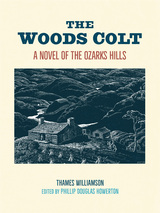 The Woods Colt: A Novel of the Ozarks Hills
Thames Williamson
University of Arkansas Press, 2023 Although more than one hundred novels set in the Ozarks were published before it, Thames Ross Williamson’s 1933 novel The Woods Colt was the first to achieve notable success both popularly and critically. Written entirely in regional dialect, The Woods Colt is the story of the violent and reckless Clint Morgan, whose attempts to secure love and freedom force him down a path of self-destruction. Simultaneously exploitative and romantic, The Woods Colt carries us back to the heart of the Great Depression, heyday of the hillbilly in pop culture, when the perceived self-reliance and old-fashioned wisdom of rural people allowed audiences to not only escape their current circumstances but also imagine more hopeful ways of living. Williamson, a prolific author, answered this interest with a fast-paced and action-driven novel filled with folklore that had, ostensibly, been authenticated by none other than renowned Ozarks expert Vance Randolph. The Woods Colt, with its familiar sense of danger and adventure, continues to offer insight and entertainment as it wrestles with timeless themes of economic struggle, cultural conflict, and modernization. With an introduction and explanatory notes from Phillip Douglas Howerton, this new edition makes the seminal novel available once more to scholars, regional enthusiasts, and anyone looking for a tale of the Ozark hills.
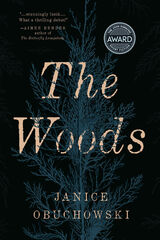 The Woods: Stories
Janice Obuchowski
University of Iowa Press, 2022 The Woods explores the lives of people in a small Vermont college town and its surrounding areas—a place at the edge of the bucolic, where the land begins to shift into something untamed. In the tradition of Elizabeth Strout’s Olive Kitteridge and Sherwood Anderson’s Winesburg, Ohio, these stories follow people who carry private griefs but search for contentment. As they try to make sense of their worlds, grappling with problems—worried about their careers, their marriages, their children, their ambitions—they also sift through the happiness they have, and often find deep solace in the landscape.
What do we find in the woods? An uplifting of spirit or a quieting of sorrow. A sense of being haunted by the past. Sometimes rougher, more violent things: abandoned quarries and feral cats, black bears, brothers caught up in an escalating war, a ghost who wishes to pass on her despair, monsters who boom with hollow ecstatic laughter. But also songbirds: the hermit thrush and the winter wren. Rushing rivers glossy with froth. A nineteenth-century inn that’s somehow gotten by all these years. And far within, a vegetal twilight and constant dusk that feels outside of time. This remarkable debut illuminates the ways we all carry within ourselves aspects stark, beautiful, wild, and unknowable.
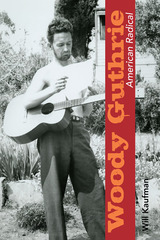 Woody Guthrie, American Radical
Will Kaufman
University of Illinois Press, 2011 Woody Guthrie, American Radical reclaims the politically radical profile of America's greatest balladeer. Although he achieved a host of national honors and adorns U.S. postage stamps, and although his song "This Land Is Your Land" is often considered the nation's second national anthem, Woody Guthrie committed his life to the radical struggle. Will Kaufman traces Guthrie's political awakening and activism throughout the Great Depression, World War II, the Cold War, the Korean War, the Civil Rights struggle, and the poison of McCarthyism. He examines Guthrie's role in the development of a workers' culture in the context of radical activism spearheaded by the Communist Party of the USA, the Popular Front, and the Congress of Industrial Organizations. Kaufman also establishes Guthrie's significance in the perpetuation of cultural front objectives into the era of the "New Left" and beyond, particularly through his influence on the American and international protest song movement. Utilizing a wealth of previously unseen archival materials such as letters, song lyrics, essays, personal reflections, photos, and other manuscripts, Woody Guthrie, American Radical introduces a heretofore unknown Woody Guthrie: the canny political strategist, fitful thinker, and cultural front activist practically buried in the general public's romantic celebration of the "Dust Bowl Troubadour." A portion of the royalties from the sales of this book will be donated to the Woody Guthrie Foundation.
Woody on Rye: Jewishness in the Films and Plays of Woody Allen
Edited by Vincent Brook and Marat Grinberg
Brandeis University Press, 2013 Although Woody Allen’s films have received extensive attention from scholars and critics, no book has focused exclusively on Jewishness in his work, particularly that of the late 1990s and beyond. In this anthology, a distinguished group of contributors—whose work is richly contextualized in the fields of literature, philosophy, film, theater, and comedy—examine the schlemiel, Allen and women, the Jewish take on the “morality of murder,” Allen’s take on Hebrew scripture and Greek tragedy, his stage work, his cinematic treatment of food and dining, and what happens to “Jew York” when Woody takes his films out of New York City. Considered together, these essays delineate the intellectual, artistic, and moral development of one of cinema’s most durable and controversial directors.
WOODY PLANTS IN WINTER
by Earl L. Core and Nelle P. Ammons
West Virginia University Press, 1958 A manual to identify trees and shrubs in winter when the lack of leaves, fruits, and flowers makes them least identifiable, Woody Plants in Winter has become a classic for naturalists, botanists, gardeners, and hobbyists. Earl L. Core and Nell P. Ammons, both West Virginia University Professors of distinction, originally published this book with The Boxwood Press in 1958. Now in its fifteenth printing, the title has come home to West Virginia University Press.
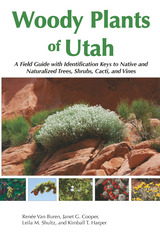 Woody Plants of Utah: A Field Guide with Identification Keys to Native and Naturalized Trees, Shrubs, Cacti, and Vines
Renée Van Buren, Janet G. Cooper, Leila M. Shultz, and Kimball T. Harper
Utah State University Press, 2011 A comprehensive guide that includes a vast range of species and plant communities and employs thorough, original keys. Based primarily on vegetative characteristics, the keys don't require that flowers or other reproductive features be present, like many plant guides. And this guide's attention to woody plants as a whole allows one to identify a much greater variety of plants. That especially suits an arid region such as Utah with less diverse native trees. Woody plants are those that have stems that persist above ground even through seasons that don't favor growth, due to low precipitation or temperatures.
Woody Plants of Utah employs dichotomous identification keys that are comparable to a game of twenty questions. They work through a process of elimination by choosing sequential alternatives.
Detailed, illustrated plant descriptions complement the keys and provide additional botanical and environmental information in relation to a useful introductory categorization of Utah plant communities. Supplementary tools include photos, distribution maps, and an illustrated glossary.
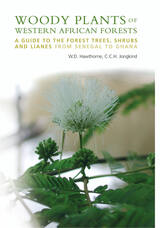 Woody Plants of Western African Forests: A Guide to the Forest Trees, Shrubs and Lianes from Senegal to Ghana
William Hawthorne, and Carel Jongkin
Royal Botanic Gardens, Kew, 2006 Woody Plants of Western African Forests is an illustrated guide to the identification of 2200 trees, lianes and shrubs found in the forests of West Africa, from Senegal to Ghana. This is all the woody plants and more than 80% of the higher plants in the forests of this region, known to biogeographers as Upper Guinea. This represents 5% of all flowering plant genera in the world—1% of the species — so the book is relevant to anyone interested in tropical plants, especially but not only in the forests of tropical Africa.
Laid out as keys and with short descriptions of each species, it contains over 5,600 photographs, line drawings and maps. And, while many guides only offer hints to naming plants when they are not in flower, here the authors have based identification on leaves, bark, shoots, scent ,taste and other characters easily observed at most times.
Funded by the European Union, through its ECOSYN project (based at Wageningen University), which supports forest biodiversity and management in Upper Guinea, this magnificent, beautiful book is an indispensable reference for everyone committed to the conservation and sustainable development of Africa’s forest.
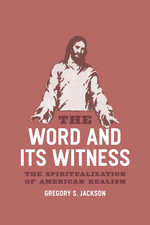 The Word and Its Witness: The Spiritualization of American Realism
Gregory S. Jackson
University of Chicago Press, 2009 “What would Jesus do?” is now a rhetorical fixture, but the phrase was first popularized in the nineteenth century’s best-selling novel In His Steps. Charles Sheldon’s book is part of the vast, but mostly overlooked, history of evangelical culture that began during the Great Awakening. In this groundbreaking study, Gregory S. Jackson reveals the full impact of this tradition by exploring the development of religious media in America.
Jackson shows how the homiletic tradition in Protestant sermons provided a foundation for the development of visual and literary realism. Evangelical preachers and writers used vivid language grounded in everyday life to translate abstract concepts like hell into concrete reality—a key influence on realist authors that brought about the more secular forms of the movement we know today. This emphasis on the sensuous also paved the way for Protestantism’s embrace of new media, evident in the photographs of Jacob Riis as well as the video game Left Behind: Eternal Forces.
With its remarkable scope and timely insights into the interplay between religion, secularism, and politics, The Word and Its Witness will transform the way we understand American realism and American religion.
|
|
